You in London
Itineraries and things to do in london, 10 tips for a perfect day at the tower of london.
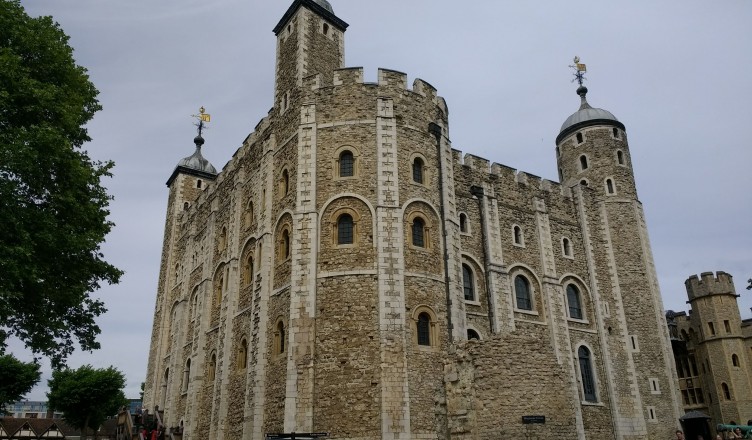
The Tower of London is one of the most visited attraction in London and every year it attracts 3 million visitors. It surely can get crowded!
But is visiting the Tower of London really worth it? Absolutely, but it can also turn into a bad day if you don’t follow a few tips. These are my suggestions for a perfect day at the Tower of London
1) Choose the day well 2) Arrive early 3) Buy a membership 4) Visit the Crown Jewels first 5) Visit the White Tower next 6) Follow a Yeoman tour 7) Visit the Bloody Tower and learn the story of the two princes 8) Make a tour of the ramparts 9) Arrive at the Tower by boat 10) Take a walk on the Tower Bridge

Choose the day well
The Tower of London is a very popular destination for Londoners and tourists alike, so it can get very very busy. The summer months and the school holidays are the times of the year when it gets incredibly crowded, so you’d better avoid them, if you want to have a pleasant day out. If you can make your visit during the week, that would save you the hordes of the weekend, but again try to avoid half terms or other school breaks. Even if you manage to choose the best day of the calendar to visit the Tower of London, don’t forget my second tip…
Arrive Early
Buy a membership.
This might sound like a weird suggestion, especially for those who don’t live in London. A membership costs a whopping £53 – £82 if you choose a joint membership. However, the entry ticket costs £30, so two visits will amply cover the entry costs. Plus, a membership allows you to visit other royal palaces for free, like the beautiful Kensington Palace and the magnificent Hampton Court Palace. You also have a free entry to other interesting places in London, like the Banqueting House on Whitehall and reduced tickets for Kew Gardens (and a free entry to Kew Palace). If you live in London, or if you happen to come to London fairly often, a membership is surely advisable.
For tourists a membership might not seem the most economical solution, but if you have 2 of these palaces in your list of things to do in London , the cost will be amply covered . Those tourists who really want to see more attractions during their stay, could consider a London Pass instead. I will talk a bit more about this in a separate post.
Visit The Crown Jewels first
If you have followed my first 2 tips, probably you have spent a minimum time queuing before entering the Tower, but you’ll risk to ruin your day if you don’t go and see the Crown Jewels before anything else. If you don’t want to take my word for it, look at the images below: this is the empty entrance to the Crown House even on a busy Sunday in June
And this is what it looked like only 30 minutes later: the queue is building up
And an hour later this is what you get:
Convinced? Go straight to the Crown Jewels as soon as you get in! You’ll have more time to wonder around after you have ticked this box. And trust me: the Crown Jewels are really magnificent!
Visit the White Tower next
Inside the White Tower there is also an interesting short film showing the history of the Tower of London, and there’s an area for kids to play (although I don’t think the Tower of London is the ideal place to visit with young children: too many queues and not much space to play, and a lot of steps. I have written a specific post on what to do in London with your children ).
Follow a Yeoman tour
The yeomen are the guardian of the Tower of London, the crows keepers and also the official guides of the Tower. They are a group of very dedicated people, extremely friendly and knowledgeable on everything about the Tower. They also live inside the Tower of London with their own families, which I think make them even more specially attached to it.
They simply know every story and legend, every ghost and gruesome anecdote about the Tower, and following one of their tours will give you a more complete experience.
Visit the Bloody Tower and learn the story of the two princes
The Bloody Tower owes is name to the unfortunate experience of those who were kept prisoner there. However, the imprisonment in the Tower was not always as bad as it is sounds. Inside the Bloody Tower, for instance, you’ll see the living quarters of Sir Walter Raleigh, who was imprisoned here, but lived in relative comfort with his family, was allowed to attend a garden and to follow his botanical interests. Clearly, he was not a free man, so he had is moment of depression, but still was able to conduct a decent life.
The story of the two princes is one of the saddest of the Tower: the young Edward V and his younger brother Richard were transferred to the Tower of London in 1483, before Edward’s coronation. While they were kept here – allegedly for security reasons – the were declared illegitimate, thus losing their right to the throne. Initially they were left free to play around the castle and its grounds – after all they were just two 9 and 12 year old kids – but later they were seen less and less until they disappeared. Apparently, they were murdered by their own uncle, the future King Richard III, and their bodies hidden.
As we all (probably) know, King Richard III did not have a long and peaceful reign, and soon after having removed the young princes from his path to the throne, he was defeated in the battle of Bosworth – the last King of England to die on a battlefield (how many things you learn from a Yeoman…)
In 1674, during the some work in the White Tower, a box was found under a staircase, containing some human bones. An analysis revealed that they were two young children. Many think that these were the remains of the two unfortunate princes, whose ghosts are still spotted in the grounds… Ask a Yeoman for confirmation!
Make a tour of the ramparts
A walk on the ramparts of the Tower of London will offer amazing views on the Thames, the Tower Bridge and the City of London. Along the rampart you can also see the reconstruction of the medieval palace and you’ll be able to learn more interesting stories about the Tower and its inhabitants. Images speak more than words…
Arrive at the Tower of London by boat
Take a walk on the tower bridge.
If you have visited the Tower of London and would like to leave your own suggestions for a perfect day out, you can use the space for your comments below.
Leave a Reply Cancel reply
Your email address will not be published. Required fields are marked *
Finding the Universe
Travel tales, photography and a dash of humor
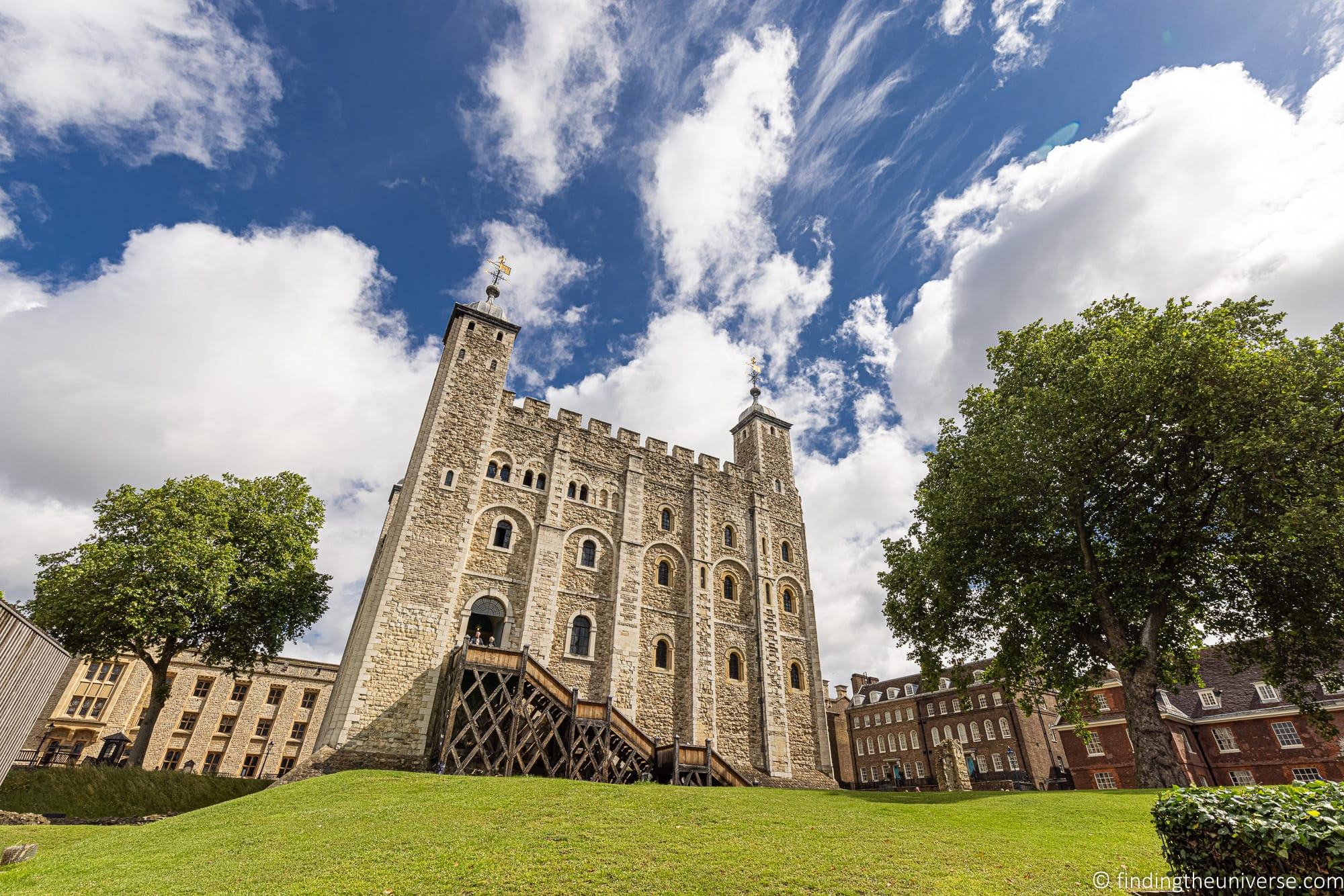
Visiting the Tower of London 2024: Everything You Need to Know!
Last updated: April 20, 2024 . Written by Laurence Norah - 6 Comments
If you’re visiting London, we think that a visit to the Tower of London should definitely be high on your list of things to do in the city. This is home to one of the oldest intact buildings in London, and has seen a huge amount of history. We’ve visited multiple times, and always have a great day out here.
There’s a lot to see and do at the Tower of London, from seeing the Crown Jewels to learning the legend of the ravens. In this guide to visiting the Tower of London (officially known as Her Majesty’s Royal Palace and Fortress of the Tower of London), I’m going to tell you everything you need to know to plan your visit.
This will include everything from saving money on your Tower of London tickets, to what to see and do, and more tips for your visit. I’ll also share some tips for where to stay near the Tower of London. Let’s get started.
An Overview of the Tower of London
Before we get into the details, you might be wondering what the Tower of London is, and why it warrants a visit. Let me answer that question with some quick history.
In 1066 William the Conqueror invaded Britain, bringing an end to centuries of Anglo-Saxon rule. The monarchy that William started shaped much of the England you see today, right up to and including the current monarch.
Of course, invading and conquering a country is one thing. Keeping it under your rule once you’ve done that is another. With this in mind, William the Conqueror, now William the First, set about building castles to keep control of his new lands. In fact, from 1066 through to 1087, he built nearly 700 castles across England and Wales.
With London as his capital city, naturally an impressive castle had to be built here to demonstrate his absolute power. And so it was in 1066 that construction on the Tower of London commenced. Initially the building was a simple timber structure, but a more impressive stone structure was built in the early 1080s. This was built over pre-existing Roman fortifications that were part of Roman city wall.
This was the White Tower, an imposing stone fortress which still survives today as the centrepiece of the Tower of London.
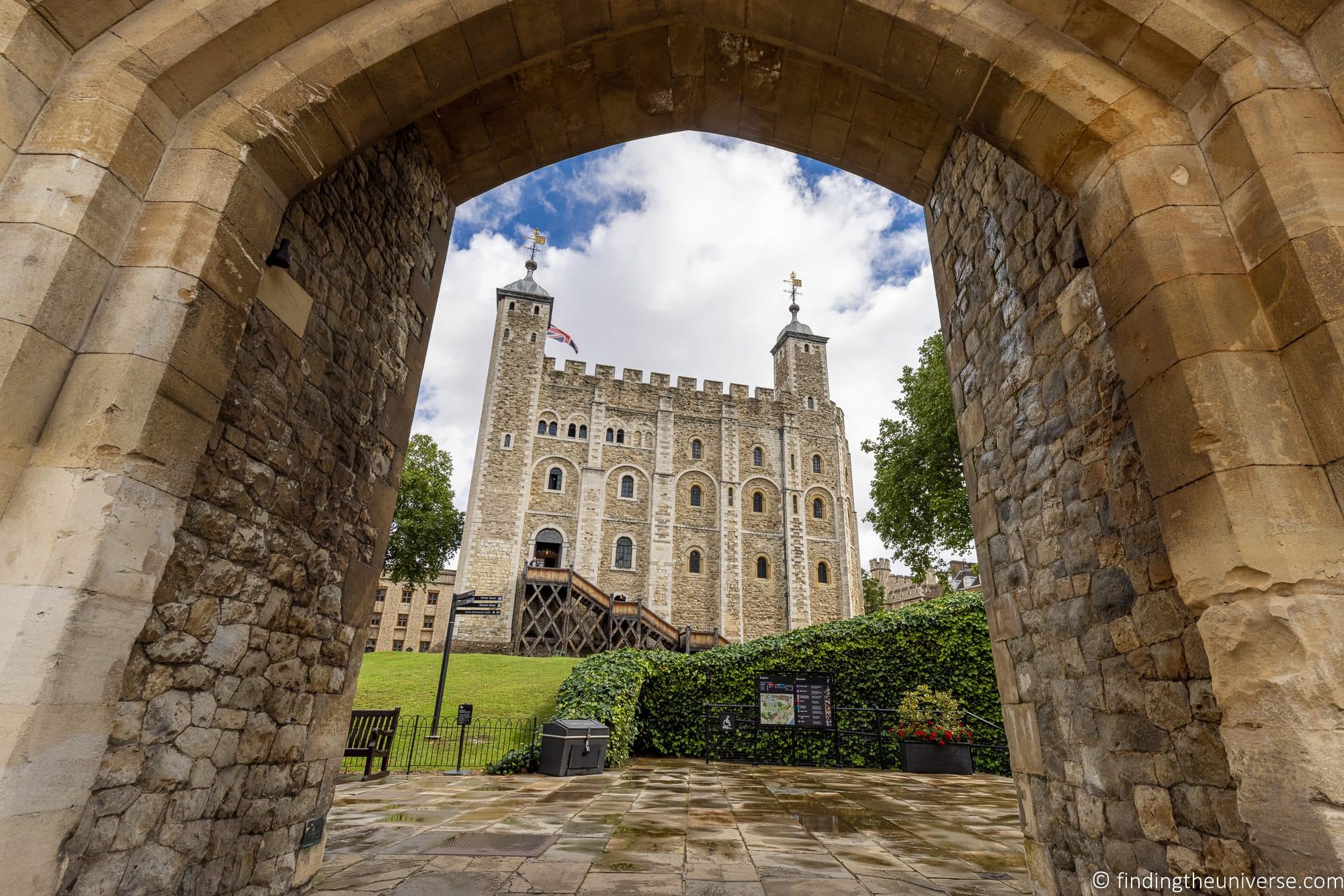
Over the centuries various changes and additions were made to the Tower of London. These included extra fortifications and structures, including thick walls, defensive towers, and buildings for accommodation, holding prisoners and munition storage.
Today, the Tower of London consists of a series of defensive structures, walls and buildings which span an area of 12 acres. First there is the moat, then there is a defensive wall, the outer ward, another defensive wall, the inner ward and finally the innermost ward where you find the White Tower.
The Tower of London has been the location of many key events in British history. Multiple important figures throughout history were executed here, with 112 people executed at the Tower over 400 years. These included some of Henry VIII’s wives, political and religious prisoners, and even German spies during World War II.
Today the Tower of London is primarily a visitor attraction, a role it has played for around 400 years. It also serves some notable functions, including being the home of the Crown Jewels and the regimental headquarters of the Royal Regiment of Fusiliers. It’s a UNESCO world heritage site, and also a home for around 40 retired service personnel and their families.
As you can imagine with a building that spans so much history, we’ve only briefly covered the Tower of London in this overview, but hopefully this gives you enough to get an idea as to why to visit!
Where is the Tower of London?
The Tower of London is found on the north bank of the River Thames, right next to Tower Bridge. The address is London, EC3N 4AB. It sits right on the edge of the London borough of Tower Hamlets, next to the City of London.
The Tower of London entrance is on the west side of the building, with the ticket and security check lines forming outside the west gate. This area is also where you’ll find the ticket shop, welcome centre and shop.
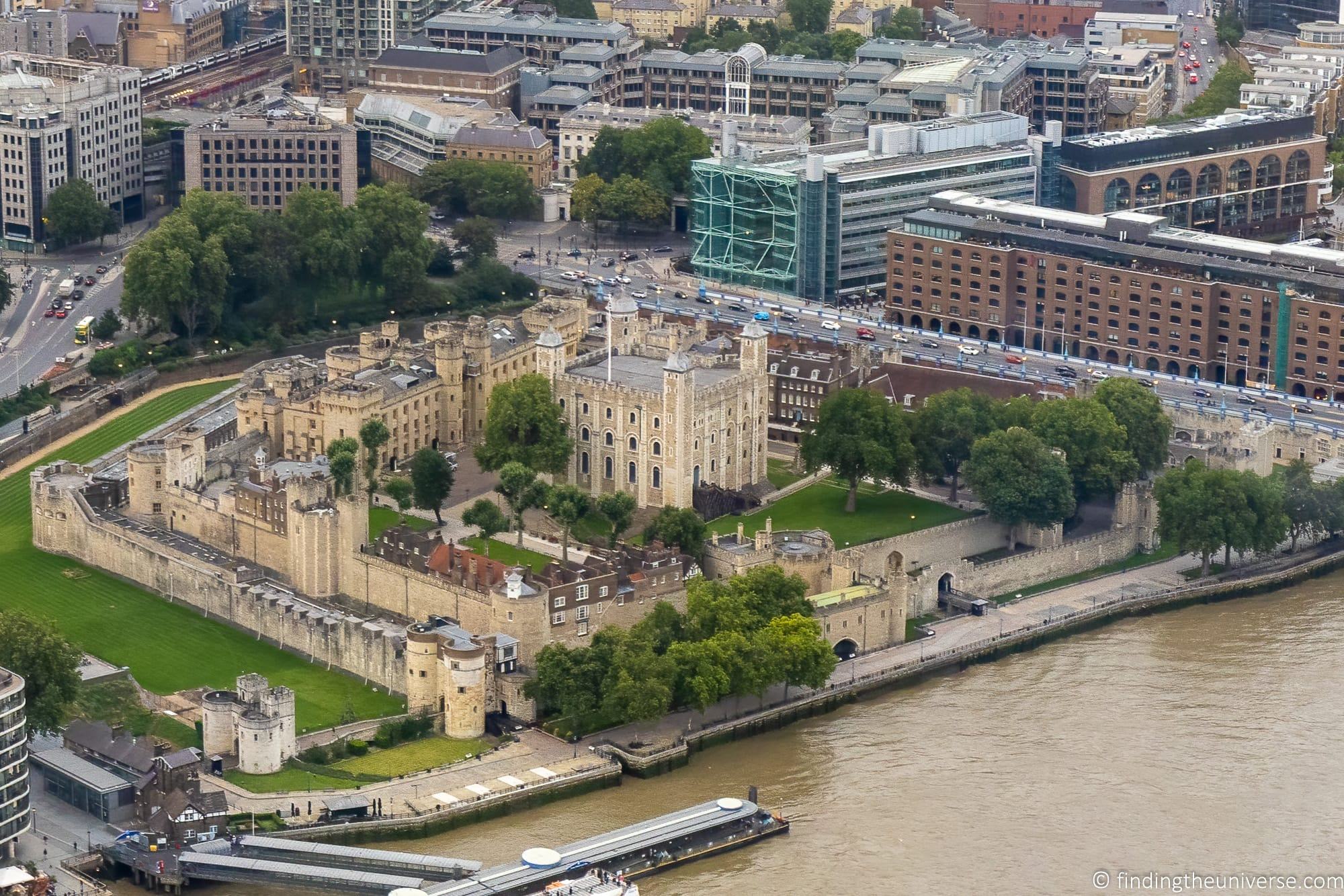
How to get to the Tower of London
There are multiple options for getting to the Tower of London, including by rail, underground, bus and even boat! Here are the main options you have.
- Tube . The nearest tube station to the Tower of London is Tower Hill, which is served by the District and Circle lines. This is around a five minute walk from the Tower of London. Other nearby stations (within 15 minutes walk) include Aldgate, Aldgate East, Tower Gateway, Monument, Bank, London Bridge and Fenchurch Street.
- Public bus . Bus services 15, 42, 78, 100 and RV1 all stop near the Tower of London.
- Boat. The Thames River Boat service stops at Tower Pier, and offers connections up and down the river. A day pass for the Thames River Boat is included on the London Pass , which also includes Tower of London admission.
- Train . The nearest train station for the Tower of London is London Bridge Station, around 15 minutes walk away. Liverpool Street Station is around 20 minutes walk away.
- Taxi . You can of course get a taxi to the Tower of London, which prices varying depending on the distance travelled.
- Hop on Hop off Bus . All the London sightseeing buses make a stop at the Tower of London. A sightseeing bus tour ticket is also included on the London Pass .
- Walking . Depending on where you are traveling from, you might find it easiest to walk to the Tower of London. For example, it’s 20 minutes’ walk from St. Pauls Cathedral and the Shard, 45 minutes from Covent Garden or an hour from Westminster Abbey.
For more tips on travel in London, see our guide to getting around London .
Tower of London Opening Times
The Tower of London normally opens between 9am and 10am, and closes between 4.30pm and 5.30pm. These times vary depending on the time of year. They can also change for school holidays. Normal opening times are as follows:
Summer (1st March – 31st October)
- Sunday – Monday: 10am – 5.30pm
- Tuesday – Saturday: 9am – 5.30pm
Winter (1st November – 28th February)
- Sunday – Monday: 10am – 4.30pm
- Tuesday – Saturday: 9am – 4.30pm.
Last admission is usually between 1 hour and ninety minutes before closing, however we would recommend giving yourself at least 2 or three hours for a visit.
Note that opening times can vary, so you will always want to check current opening times here in advance of your visit.
Do You Need a Ticket for the Tower of London?
You definitely need a ticket for the Tower of London. You can either book your tickets online in advance of your visit (recommended), or you can buy tickets from the ticket office which is near the main entrance.
We highly recommend booking tickets in advance. At busier times, there can be queues for the ticket office, so you will lose valuable sightseeing time standing in line.
How Much does it Cost to Visit the Tower of London?
As of April 2024, ticket prices for the Tower of London are as follows:
- Adult – £34.80
- Child (age 5-15) – £17.40
- Concession (age 65+, 16-17, full time student, disabled visitors) – £27.70
- Child under 5 years – Free
Pricing can vary, we recommend you check the latest information here .
What Does the Tower of London Ticket Include?
The Tower of London ticket includes:
- Entry to the Crown Jewels, the White Tower and the Chapel of St Peter
- Entry to the Battlements, the Medieval Palace, the Bloody Tower, the Torture at the Tower Exhibition, the Fusiliers Museum, the Beauchamp Tower, and the Royal Mint Exhibition
- A tour of the Tower of London with a Yeoman Warder, or “Beefeater”. These run every hour starting near the main entrance, pre-booking is not required. The first tour is usually at 10am and the final tour is at 2.30pm.
The ticket does not include an audio guide, but an audio guide can be purchased separately for £5 for adults and £4 for children. You can either purchase these with your ticket or on-site. Audio guides can be collected just after you pass through the security check, to the right of the entrance.
Premium Tower of London Experiences
As well as the standard visit to the Tower of London, you can also book special experiences. These usually cost more, but will give you a unique experience. These might include witnessing special ceremonies, or simply getting in before the majority of the crowds. Some examples include:
- This early access tour of the Tower of London with a Beefeater which has you visiting prior to general admission
- This Tour of the Tower of London includes early access to the Tower and Crown Jewels. You’ll also get to see the opening ceremony, and have a fully guided experience inside the Tower of London. It also includes a hop-on hop-off city cruise tour, which departs right outside the Tower.
- One of the most unique experiences at the Tower of London is the Ceremony of the Keys. This is held every night from 9.30pm until 10.05pm, and tickets must be purchased separately. These are very popular, and ca be booked on the official website here . Note that photography is not permitted, and this ticket does not include admission to the Tower of London beyond the Key Ceremony itself.
- If you want to see the evening Ceremony of the Keys and also take a quick tour of the Tower, check out this tour . It includes an hour’s tour with a Yeoman Warder as well as the opportunity to watch the Ceremony of the Keys. I have done this tour and I enjoyed it. However you should be aware it is quite a quick tour and you don’t see inside the White Tower or visit the Crown Jewels. So for a more complete experience I would probably recommend this morning tour .
Where to Buy Tower of London Tickets
There are a number of options for buying Tower of London tickets. The main options you have are:
- On-site in person at the Tower of London ticket office
- On the GetYourGuide website here
- Online on the official website here
We definitely recommend checking prices between the official site and third party sites as sometimes there are discounts as well as bundles that may include other attractions you are interested in.
It’s also worth mentioning that the refund policy varies by ticket. Tickets bought on the official site generally cannot generally be refunded, whilst third-party sites may have a different policy.
The Tower of London is also included on a number of London city passes, see that section of the post for more details on that.
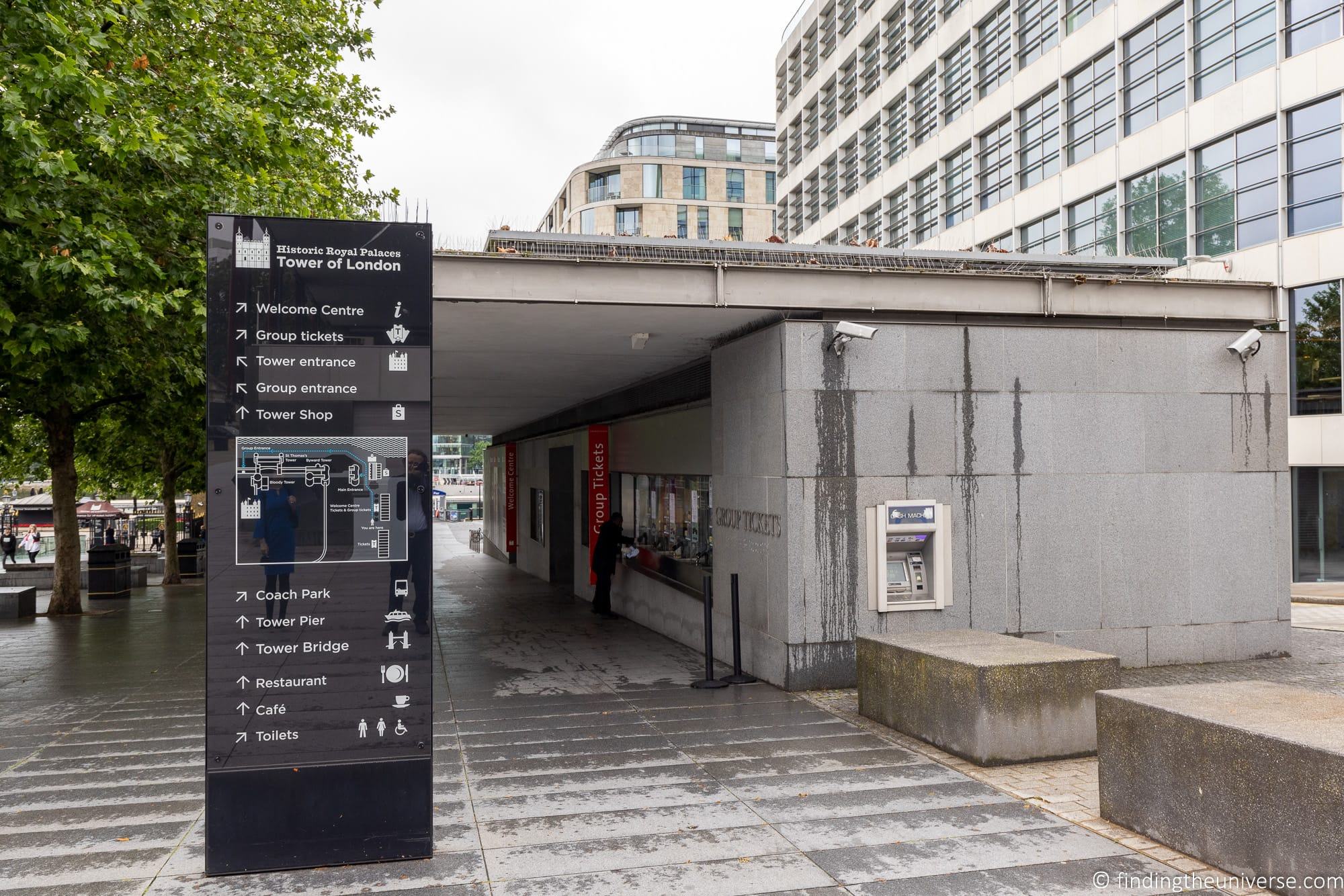
Discount Tower of London Tickets
There are a few ways to get discounted Tower of London tickets, or at least, to save on your admission.
If you are travelling as a family, the Family Saver ticket can save you money. This is available on either the official site here or the Tiqets website here . If visiting during peak times with two adults and three children, you can save over £20 compared to buying the normal full price tickets.
Tower Hamlets residents can visit the Tower of London for just £1. These tickets can only be purchased in person on the day, and residents must provide proof of residence in the form of either an Idea Store card or a Tower Hamlets library card, as well as proof of address.
Finally, don’t forget to check out city passes which include the Tower of London. If you are planning on visiting a few attractions in London, these can quickly save you money.
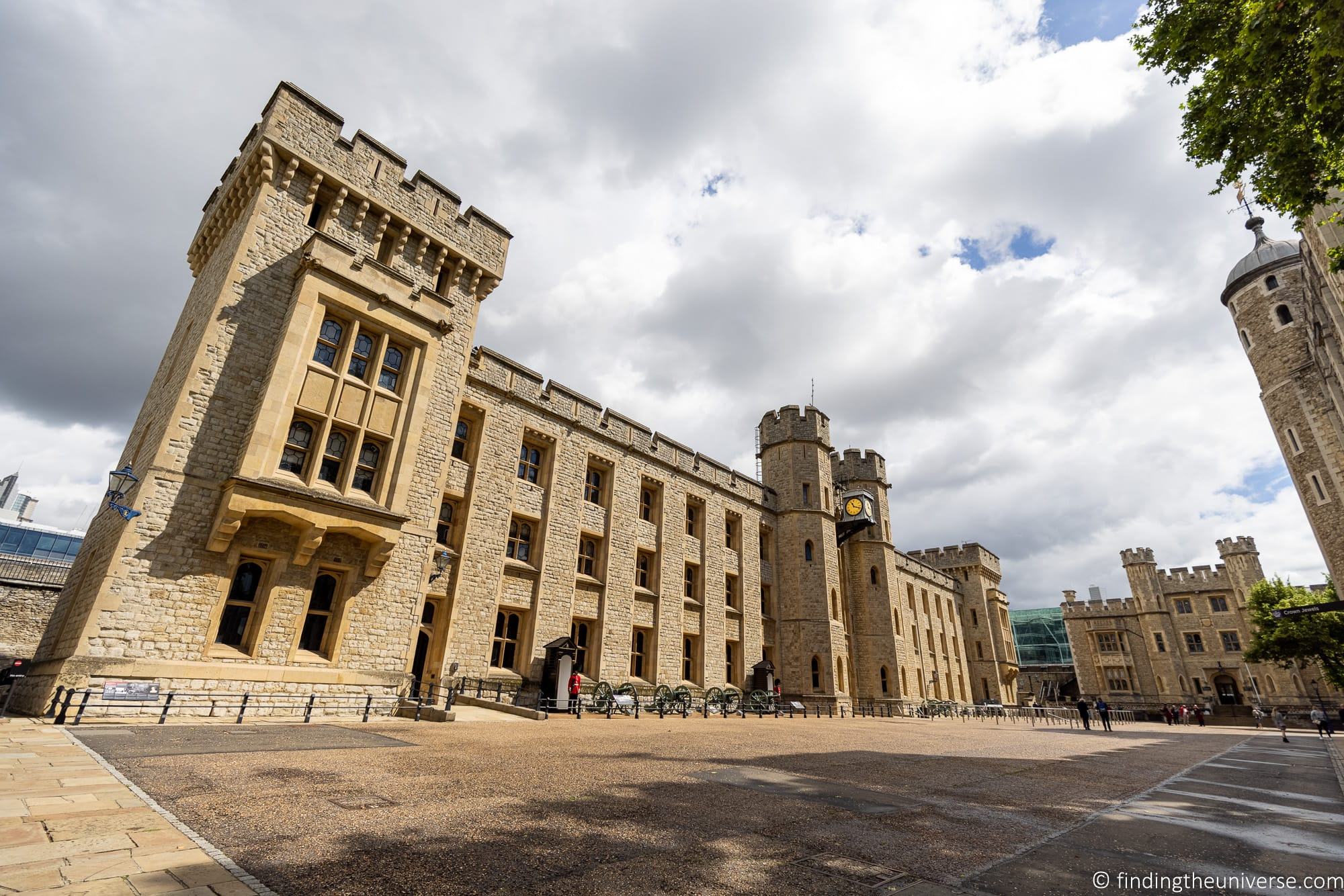
City Passes that Include the Tower of London
One of the best ways to save money on sightseeing in a city in our experience is to use a city pass. These passes usually include entry to a range of attractions for one price. If you are already planning to visit a number of high value attractions in a city like London, then a city pass can usually save you quite a bit of money.
We normally use the London Pass when we’re in London sightseeing, and have used it to visit the Tower of London a number of times. You can read our full review of the London Pass here , and buy one for yourself here . Of course, there are other city passes which include the Tower of London. Here are the main options to consider. Which one is best for you will depend on your sightseeing itinerary.
- The London Pass – access to over 80 attractions across London for a specific set of days
- The GoCity London Explorer Pass – choose from between 2 and 7 attractions to visit
- The London Sightseeing Pass – access to over 55 attractions across London for a specific set of days
- The London City Card – access to the Tower of London and the London Eye , as well as an audio guide of London and a hop on hop off boat cruise
- The London Big City Saver Pass – includes access to the Tower of London as well as your choice of attractions including the London Eye, Madame Tussauds
We normally use the London Pass as we think it offers the best value, but of course it will depend on what you plan to see.
Tower of London Tickets Sold Out? You still have options to visit the Tower of London!
If you are visiting the Tower of London when they are operating timed entry slots, these do have a maximum number of visitors they can accommodate. As such, tickets can sell out.
If you are looking on one of the online ticket portals, including the official site, then you should also check alternatives just in case. Whilst most of them draw from the same allocation, you might get lucky. We recommend checking the official website here , on the GetYourGuide website here .
If you have no luck, the next option is to book a tour which includes Tower of London entry. Group tour tickets normally have a pre-allocated amount of tickets which are separate from the standard ticket pool. We list tours in our suggested tour options, but some options to consider include:
- This Tour of the Tower of London which includes early access to the Tower and Crown Jewels. You’ll also get to see the opening ceremony, and have a fully guided experience inside the Tower of London
- This full day tour of London includes many of the highlights of London, and finishes with a guided tour of the Tower of London
Hopefully between these options you’ll be able to visit the Tower of London during your time in the city.
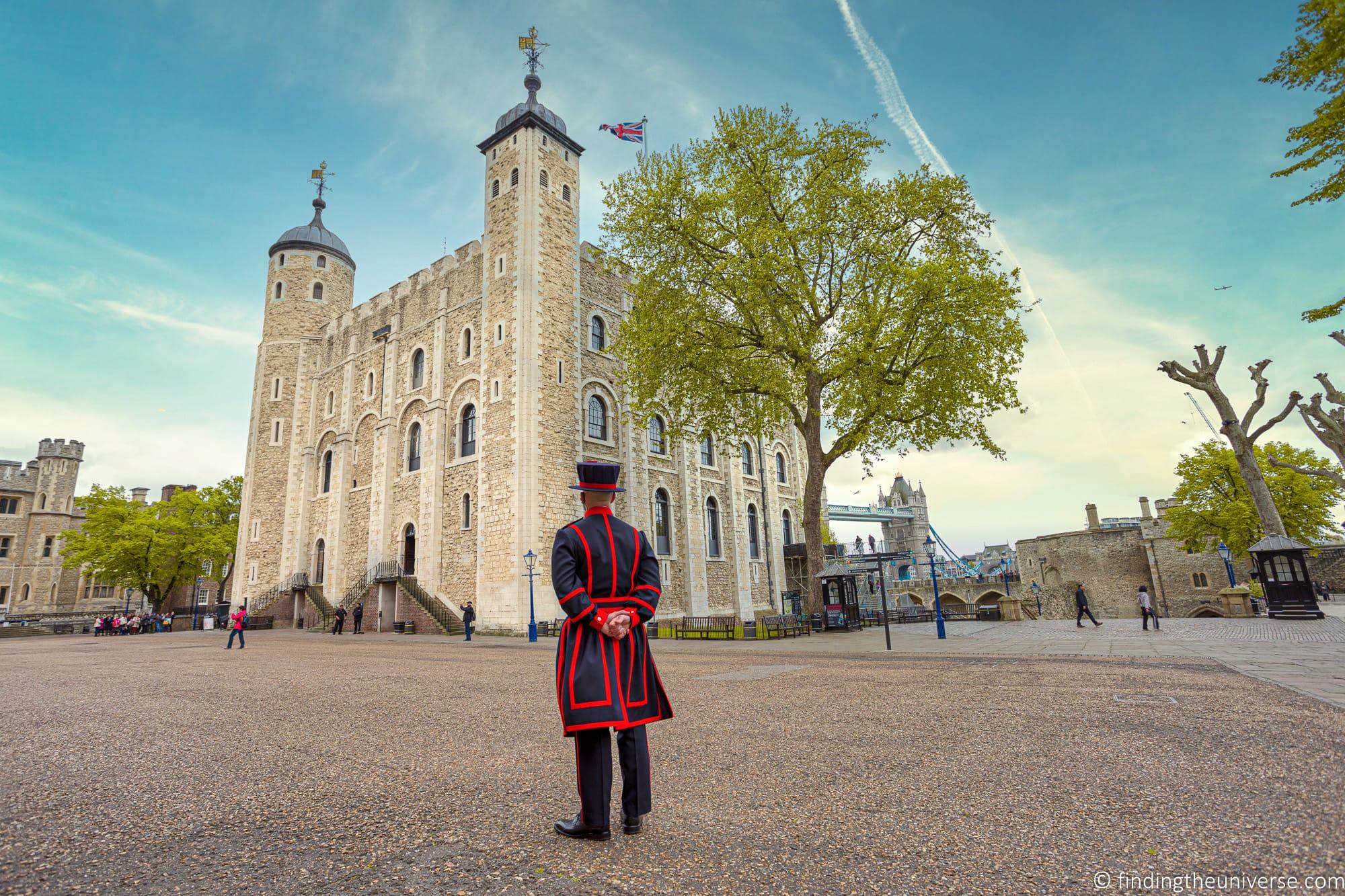
Can you skip the lines at the Tower of London?
There are two main lines at the Tower of London.
The first of these is the ticket line for buying tickets in person on the day. This one is easy to skip by buying your tickets online in advance, which we highly recommend you do. Most tickets or tours which advertise skip the line privileges are referring to this ticket line.
If you are visiting with a London Pass or other city sightseeing pass, you can normally also skip the ticket line and head straight for the entry line. Just read the instructions provided with the pass.
The second line is the entry line which features a security check. All guests have to go through the security check, so this line can’t be skipped. Our advice is to visit the Tower of London as close to opening time as possible so the line isn’t so long.
The only way to ensure faster access is to book one of the early entry tours, which get you in before the main ticket line opens. While you will still have to go through security, it will only be you and the other members of your group doing this, so it will move quickly. Check out this tour and this tour for examples of early access tours.
What to see and do at the Tower of London
There is a lot to see and do at the Tower of London! We recommend visiting the Crown Jewels (located in a section of the Waterloo Barracks) first and then visiting the White Tower as these are generally the two busiest and most popular attractions here. After that, we just recommend visiting the rest of the attractions in the order that makes the most sense for you.
I should also note that due to the historic nature of the Tower of London some exhibit or area is almost always closed at any one time due to renovations, construction, or safety issues. However, it is rarely the most popular areas.
For example on one of our recent visits the Tower’s Mint and the chapel were closed to visitors, and on another the Beauchamp Tower and a section of the battlements was closed. So if there is any specific exhibit or areas you really want to visit, you may want to call ahead to ensure it is open.
Here’s an overview of the main sights and attractions within the walls.
The Tower’s Mint
When you enter the Tower of London you’ll pass through the Middle Gate, go across the moat, and then pass through the outer wall via the Byward Tower. You’ll now be in the outer ward, which sits between the two main sets of walls.
If you head to your left, up Mint Street, you will come to The Tower Mint. This street is also home to the “casemates”, a series of homes built into the walls where many of the Yeoman warders live.
The Tower Mint is open for visiting. It was established here in 1279, and for 500 years, most of the coins in circulation in the country were produced here. A visit to the mint will teach you all about this process, as well as about the people who lived and worked here. There are also some fun interactive games you can play.
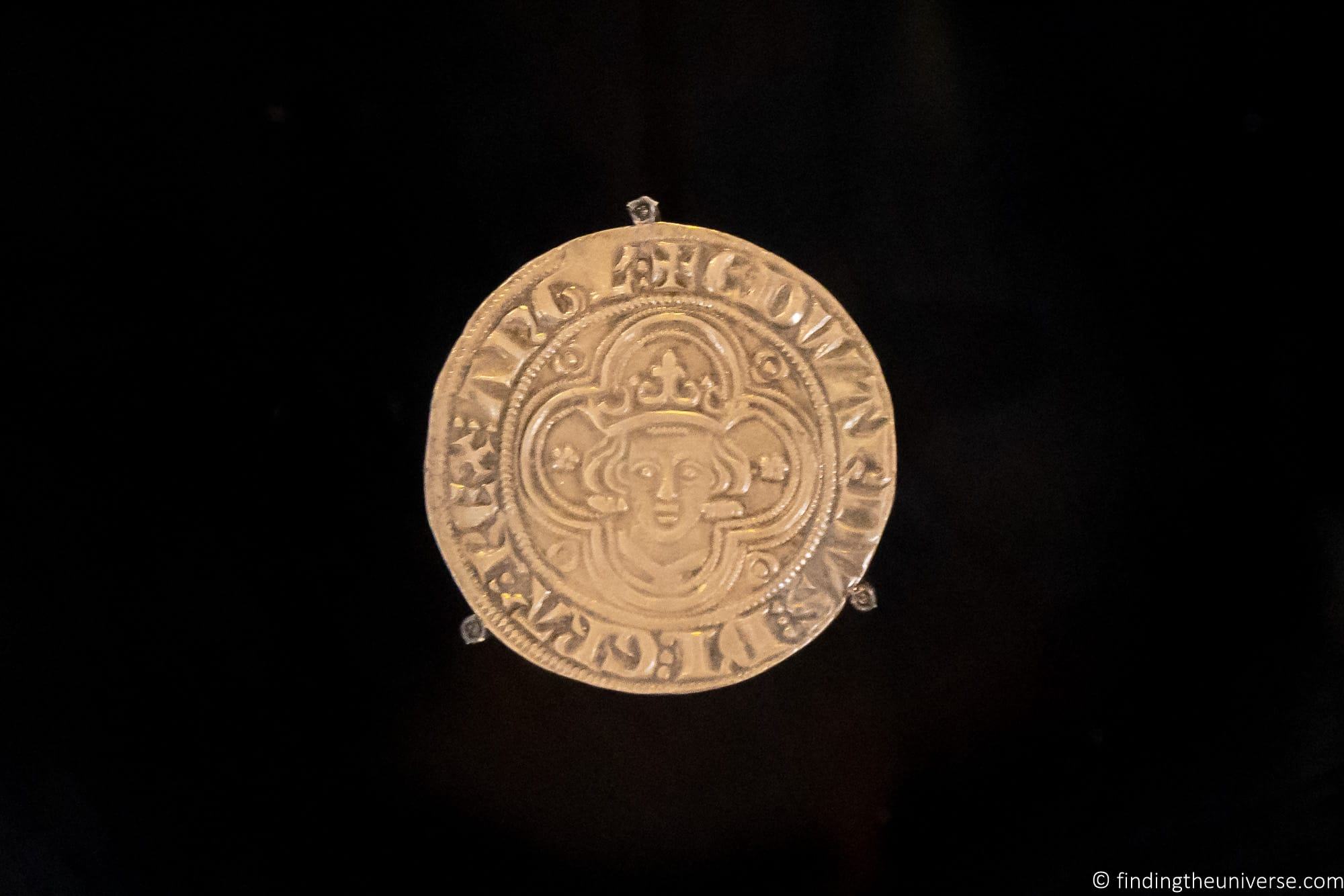
The Battlements
The inner curtain wall of the Tower of London separates the outer ward from the inner ward. This was built during the reign of Henry the III in the 13th century, and much of what you see today is original from this period.
It consists of 13 towers (Bell, Beauchamp, Devereux, Flint, Bowyer, Brick, Martin, Constable, Broad Arrow, Salt, Lanthorn, Wakefield, and the Bloody Tower) which are linked by walls, and the whole construction is generally referred to today as the Battlements.
When built, this primarily served a defensive function. Today, you can walk along the majority of the battlements by taking the wall walk. This takes you through a number of the towers, with many of them setup to show mini exhibitions. In these, you’ll learn all sorts of things about the Tower’s history, from the time the walls were breached during the Peasants’ Revolt of 1381, the Tower’s time as a zoo (the Royal Menagerie), and what happened at the Tower during the World Wars.
One of the more intriguing exhibits for us was about the great fire here that took place in 1841 when Duke of Wellington was the Tower Constable. Another was a room devoted to the history of the animals that were kept at the Tower of London here which included lions, baboons, bears, alligators, zebras, and elephants. You’ll also see sculptures representing some of the animals that were kept here throughout the site.
The wall walk also take you through the next entry in our guide, the Medieval Palace.
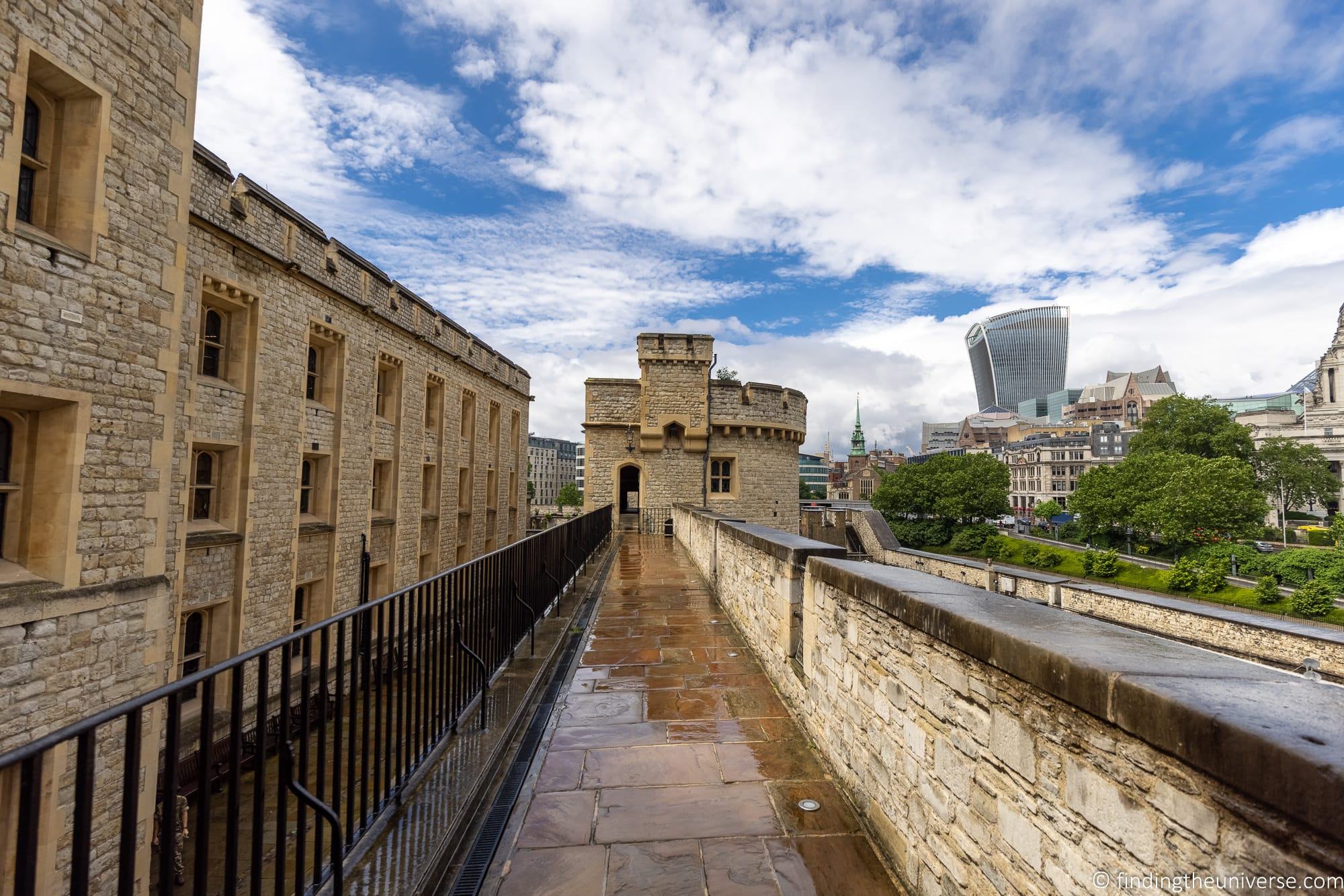
The Medieval Palace
The wall walk along the Battlements starts with you entering St. Thomas’s Tower. This is part of the outer defences of the castle, added by Edward I in the late 13th century. As well as an additional defensive wall wrapping around the outside of the original curtain wall, this features a number of defensive emplacements as well as a large tower.
This tower, St. Thomas’s Tower, was built to serve two purposes. First, it had a river-level water gate entrance, offering direct access to the Thames. This came to be known as Traitors’ Gate, as this was where many Tudor-era prisoners would arrive prior to incarceration, often followed by torture and/or execution.
The upper floor of St. Thomas’s Tower was designed to provide luxurious lodging for the Royal family when they stayed at the Tower. Today, St. Thomas’s Tower along with the next two towers you pass through on the wall walk, The Wakefield Tower and the Lanthorn Tower, are collectively known as the Medieval Palace.
These towers are today set up to demonstrate what the interior would have been like for the visiting Royalty, with objects and furniture dating from the period.
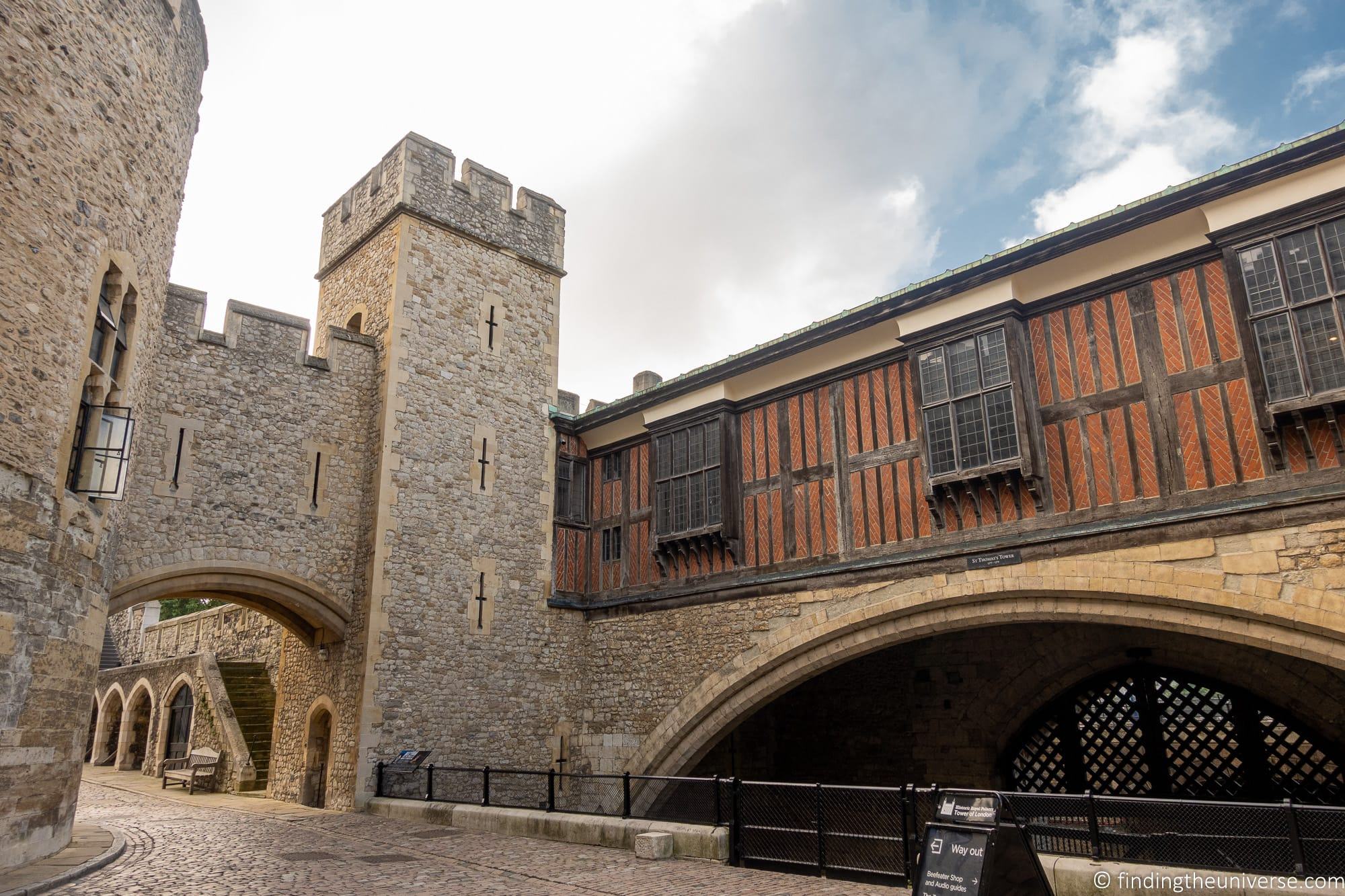
The Crown Jewels in the Waterloo Barracks
A highlight for many visitors to the Tower of London is a visit to see the Crown Jewels of the United Kingdom. This is a collection of royal ceremonial objects, which include the crown worn by the British monarch. It’s the most complete collection of Royal regalia in the world, and the only set still in active use today.
The Tower of London has traditionally been home to the Crown Jewels since the early 13th century. The Jewels on display and in use today primarily date from 1660 when Charles II ascended the throne and restablished the monarchy following the English Civil War.
A highlight of the collection is the Cullinan I diamond, which is the largest clear cut diamond in the world at 530 carats. There are however over 23,000 precious stones in the display, which consists of 142 objects, including plates, swords, sceptres, robes, rings and even a spoon.
My favourite object is the nautical themed silver-gilt Grand Punch Bowl, which can hold 144 bottles of wine, and which is still in regular use!
A visit to the Crown Jewels is a must when visiting the Tower of London. It’s one of the most popular attractions, and one of the only places where photography isn’t allowed. At busier times, there can be quite a queue to visit, so do plan accordingly.
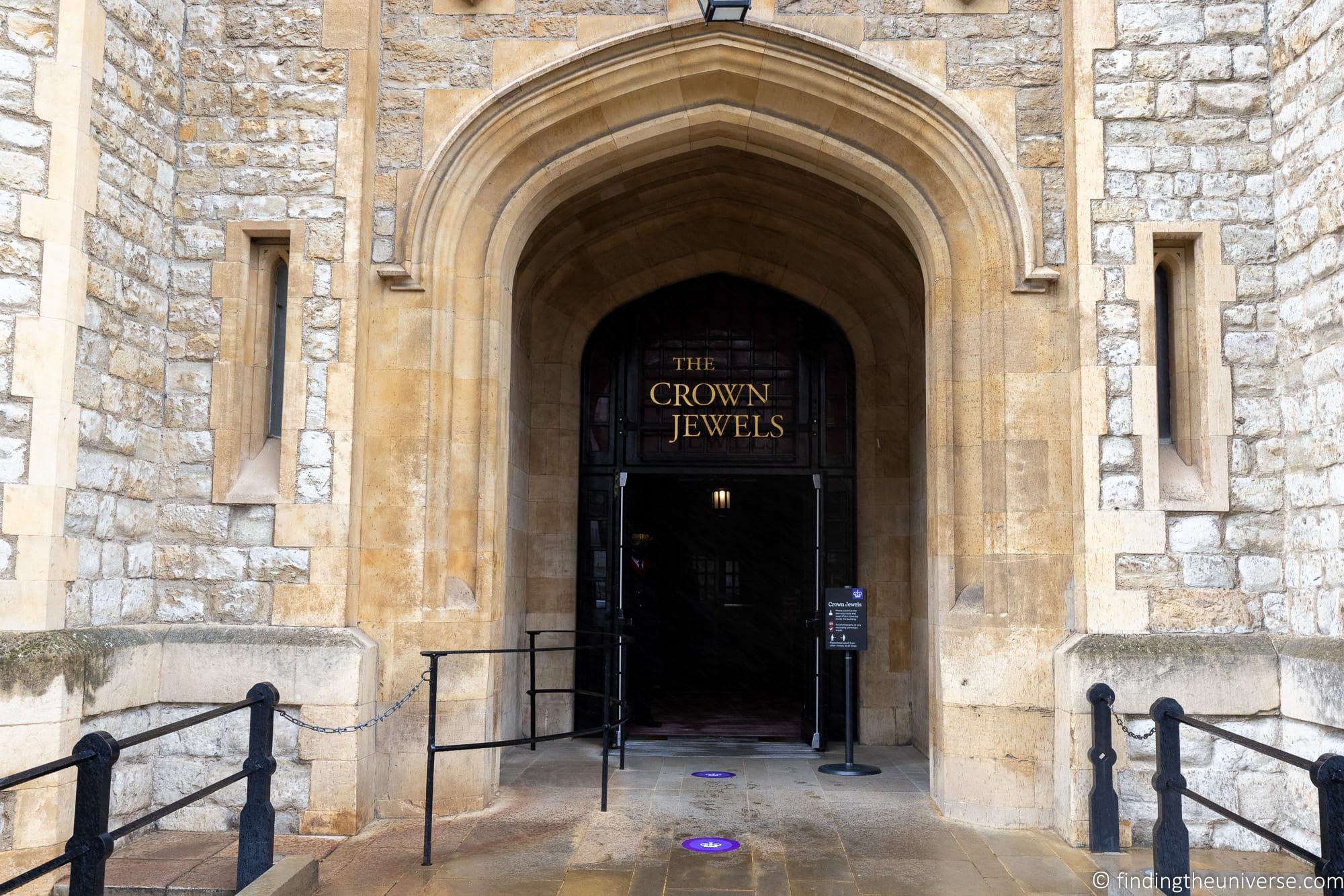
The White Tower
Right at the heart of the Tower of London is the White Tower, the oldest part of the Tower of London and one of the oldest buildings in London.
The building is a keep, which in medieval times was a central fortified tower that normally had the most protection of any building in a castle. It was built in stone in the late 11th century, and fulfilled the role of fortress, royal accommodation, prison and symbol of power. Over the years it’s use evolved, including during the 17th century when the whole tower was used, rather riskily, to store a vast quantity of gunpowder.
Since the 19th century, the White Tower has primarily been a visitor attraction, and a visit to this incredible 11th century medieval palace is a must when inside the Tower of London. Here you will see a number of exhibits including the Line of Kings, which has been on display at the Tower of London since around 1692! Today this historic exhibition is found on the entrance floor of the White Tower.
You’ll also find other interesting armor and weaponry on display, as well as a beautiful 11th century Romanesque chapel, the Chapel of St. John the Evangelist. Note that whilst photography is allowed almost everywhere in the White Tower, it is not permitted in the chapel.
There are also exhibits about the lesser known uses of the Tower of London here including as a jewel, house, records office, Board of Ordnance headquarters, royal mint, menagerie, and royal observatory.
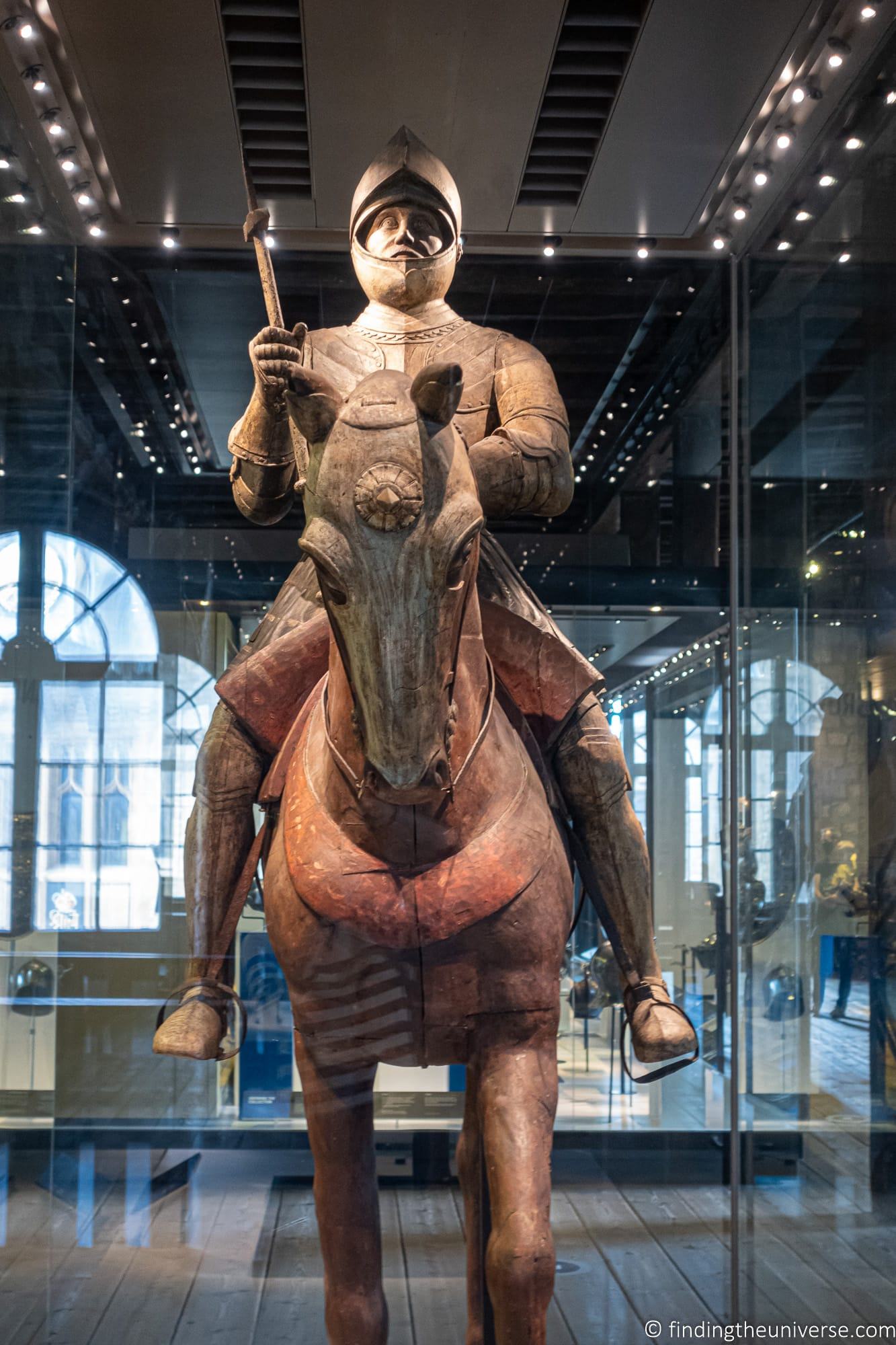
The Bloody Tower
Originally known as the Garden Tower, the Bloody Tower is one of the towers making up the battlements. It gained its rather gruesome name in the 16th century. Two young princes, one of whom was the deposed King and the other was his brother and therefore next in line, were effectively imprisoned in the tower by their uncle the Duke of Gloucester, the future Richard III.
Following their imprisonment and subsequent mysterious disappearance, rumours abounded of their being murdered, and so the Bloody Tower got its name. In 1674, the bones of two children of similar ages were found beneath the staircase in the White Tower at the Tower of London.
Today, you can learn about the Princes and what may have happened to them with a visit to the Bloody Tower. You’ll also learn about other high profile prisoners who stayed here, including Sir Walter Raleigh, who was imprisoned here for 13 years.
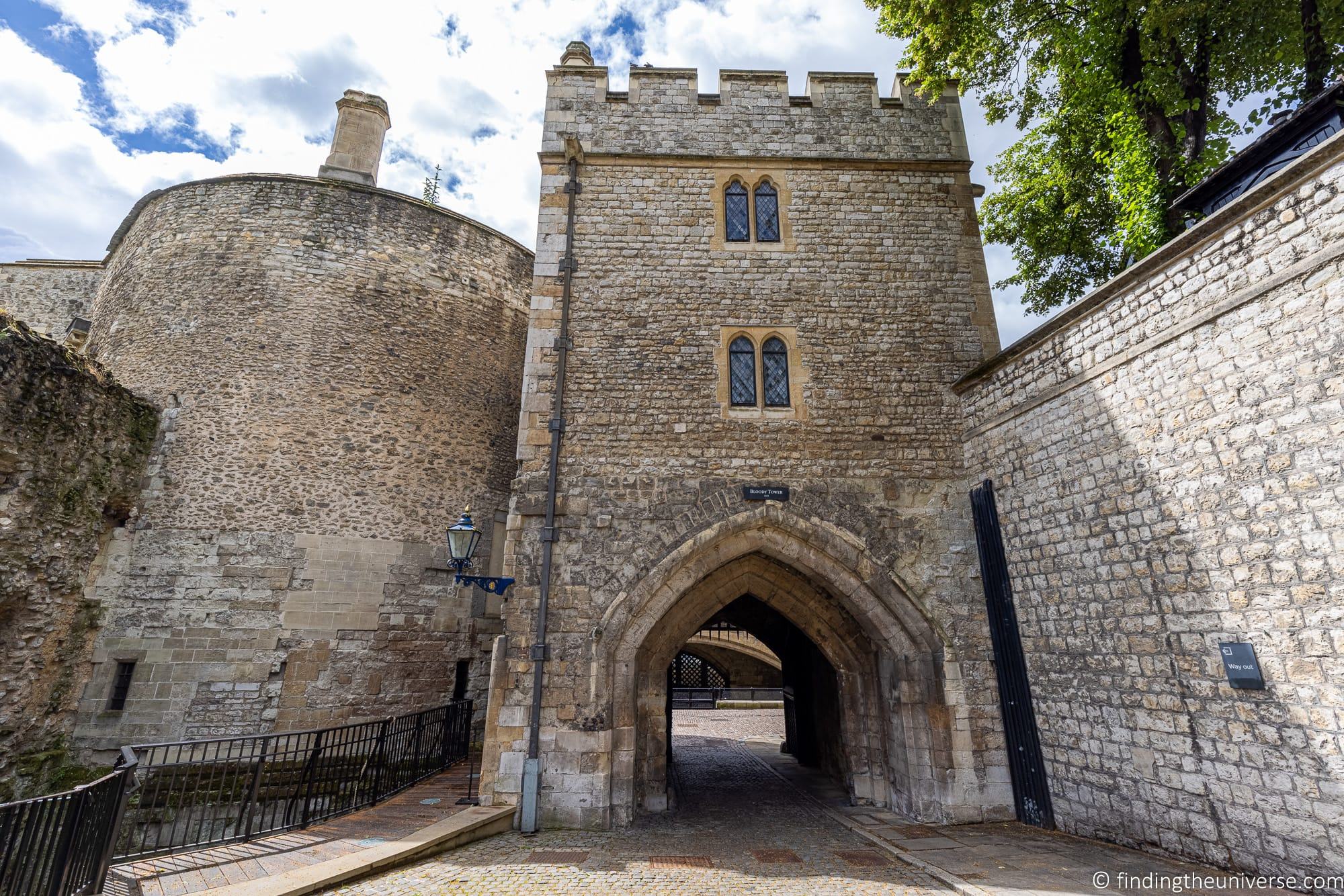
Lower Wakefield Tower
Next to the Bloody Tower is the Wakefield Tower, another of the towers along the inner curtain wall. In the lower part of this tower is the Torture at the Tower exhibit.
Over the centuries, and particularly in the 16th and 17th century, there was much political and religious change in the country. These changes resulted in many prisoners being held at the Tower. Often, it was suspected that they held information on co-conspirators, or where perhaps not forthcoming enough with a confession.
Interrogators at the Tower used a range of rather awful devices to extract information from their prisoners, and you can learn all about these at the Torture at the Tower exhibit.
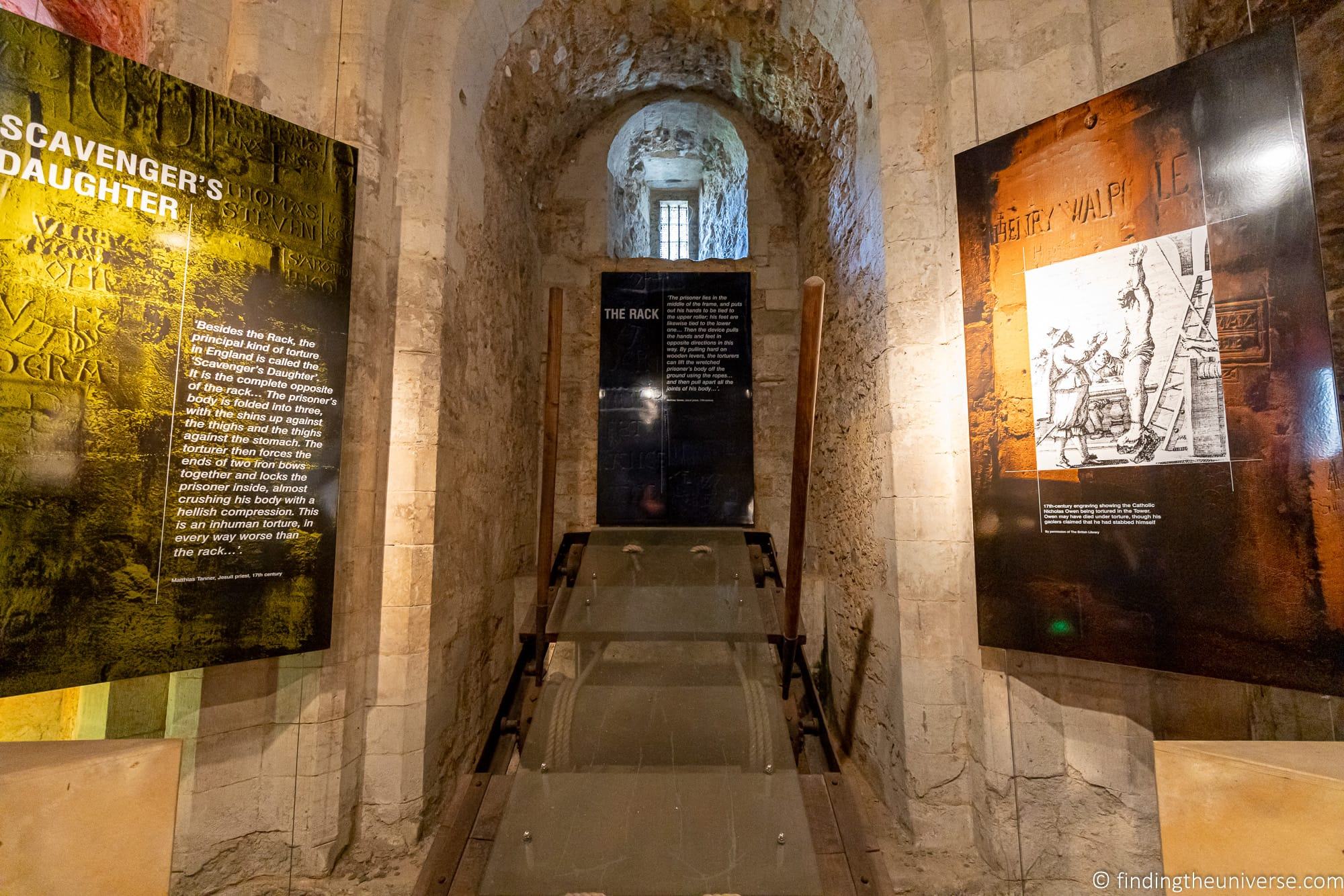
The Fusilier Museum
Formed in June 1685, The Royal Regiment of Fusiliers were originally formed to guard the guns at the Tower of London. Since then, the regiment has seen service in conflicts around the Globe, from the American War of Independence through to the Napoleonic Wars and the Great Wars of the 20th century.
They still have their regimental headquarters inside the walls of the Tower of London, where on the ground floor you can visit the Fusilier Museum . This museum tells the story of the regiment from its formation right up to the present day via a series of objects and information panels, and is well worth the visit.
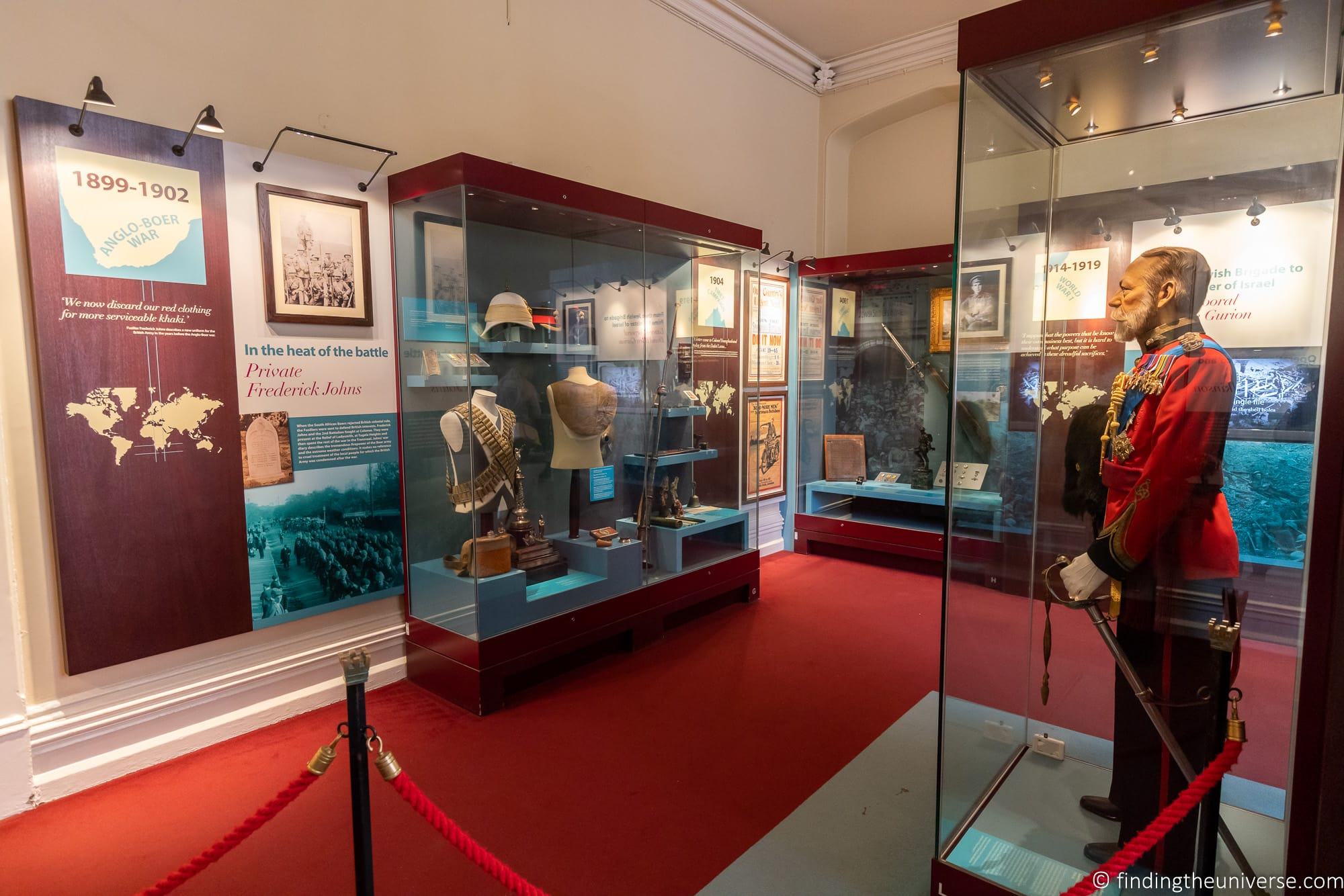
Tower Green & Scaffold Site
To the west of the White Tower, near the Chapel Royal of St. Peter ad Vincula you’ll find an expanse of grass as well as a memorial.
This area, known as Tower Green, was the site of some of the most high profile executions in British history. Only those of high rank had the privilege of being executed here. Ten people were beheaded on the green, including two of Henry VIII’s wives, Queens Anne Boleyn and Catherine Howard.
Today there is a memorial sculpture to those who lives were taken on the green.
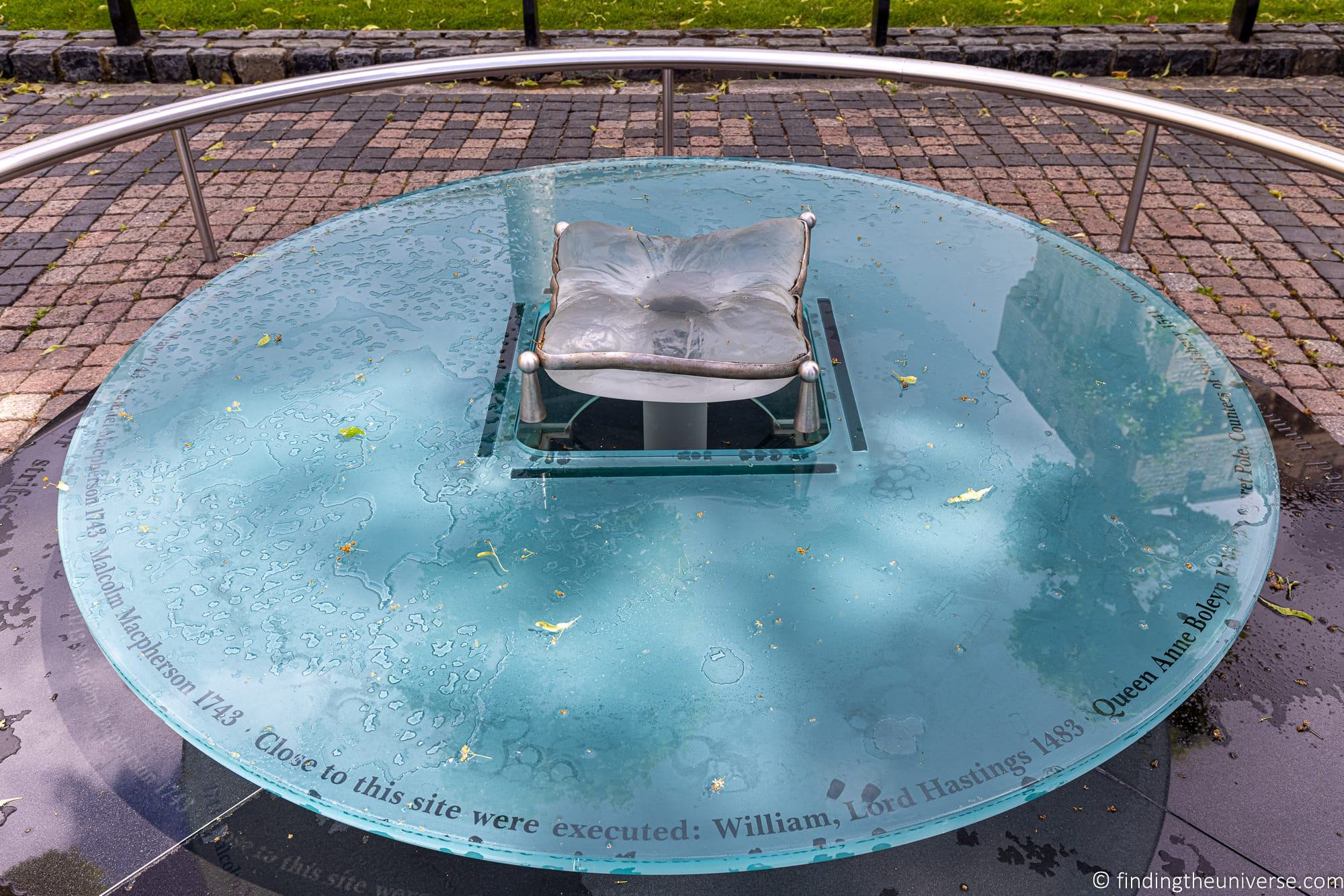
Chapel Royal of St. Peter ad Vincula
Just to the north of Tower Green is the Chapel Royal of St. Peter ad Vincula. “Ad Vincula” is Latin for “in chains”, so this is the Chapel of St. Peter in chains. The chapel is the parish church of the Tower of London, and whilst there has been a chapel on site for many centuries, the current building dates from 1520 and the reign of Henry VIII.
The chapel is perhaps most well known as the final resting place for many of the high profile prisoners who were executed at the Tower. These include Queen Anne Boleyn, Queen Catherine Howard, Lady Jane Grey, and Sir Thomas More. There were many other people interred here, including a number of martyrs who went on to become Saints.
The Chapel Royal is open for visitors and also has prayer services. It’s one of the few places in the Tower of London where photography isn’t allowed.
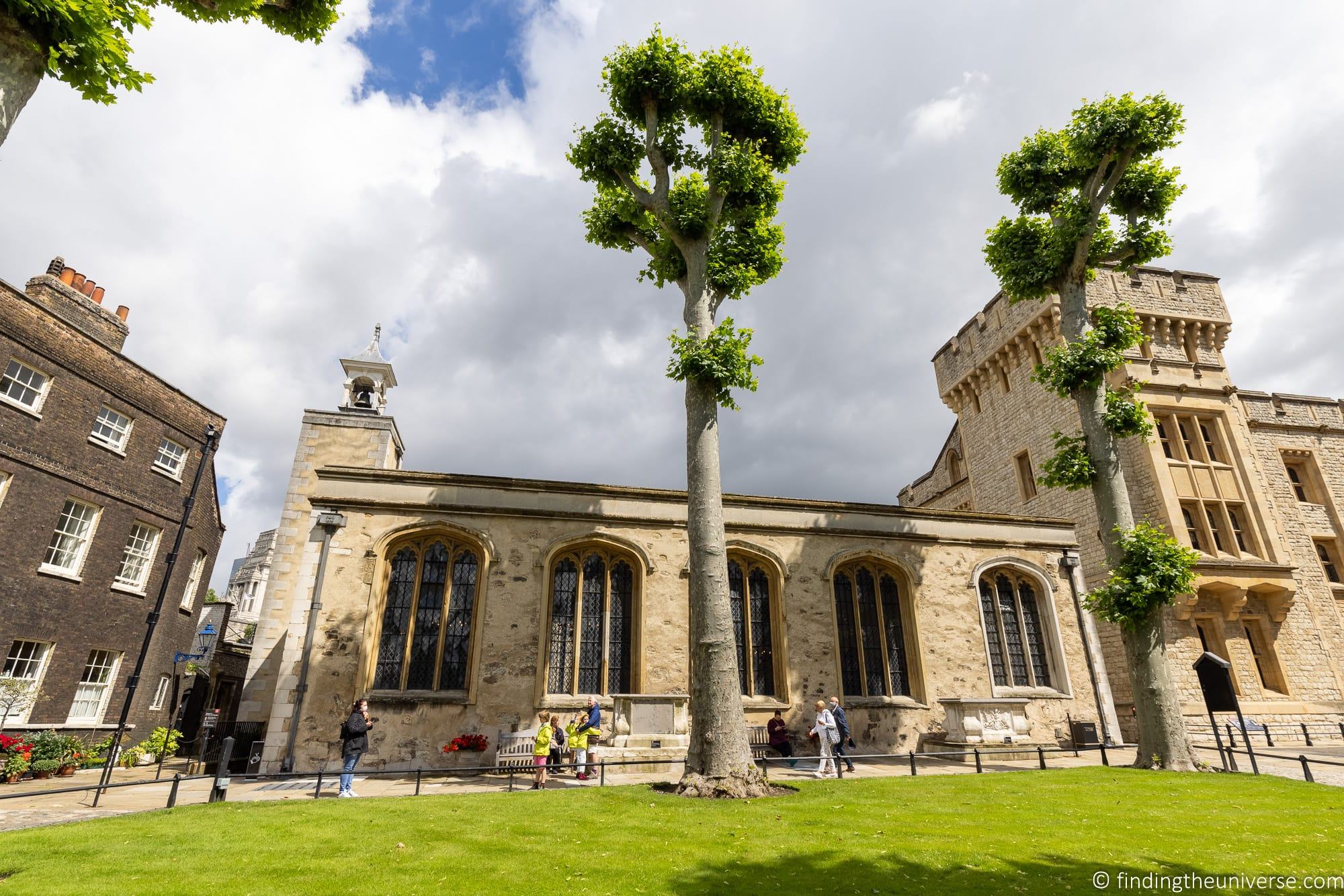
Beauchamp Tower
Another of the towers in the battlements, although not part of the wall walk, is the Beauchamp Tower. This 13th century tower was used as a prison for most of its history. It takes its name from Thomas Beauchamp, who was imprisoned here at the end of the 14th century.
Being imprisoned at the Tower was, for most prisoners, a very challenging experience. Many had already been condemned to death, and were passing time in fairly grim conditions. Not every prisoner had their own apartments, like Sir Walter Raleigh!
To pass the time and alleviate boredom, many prisoners took to carving graffiti into the walls of the castle. This is still visible today, and coming to see this graffiti has in fact long been a popular pastime amongst visitors to the Tower.
The Beauchamp Tower has a number of intricate carvings in the walls, along with more standard names and dates. These can all be visited and seen as part of the Imprisonment at the Tower Exhibition, found within the Beauchamp Tower.
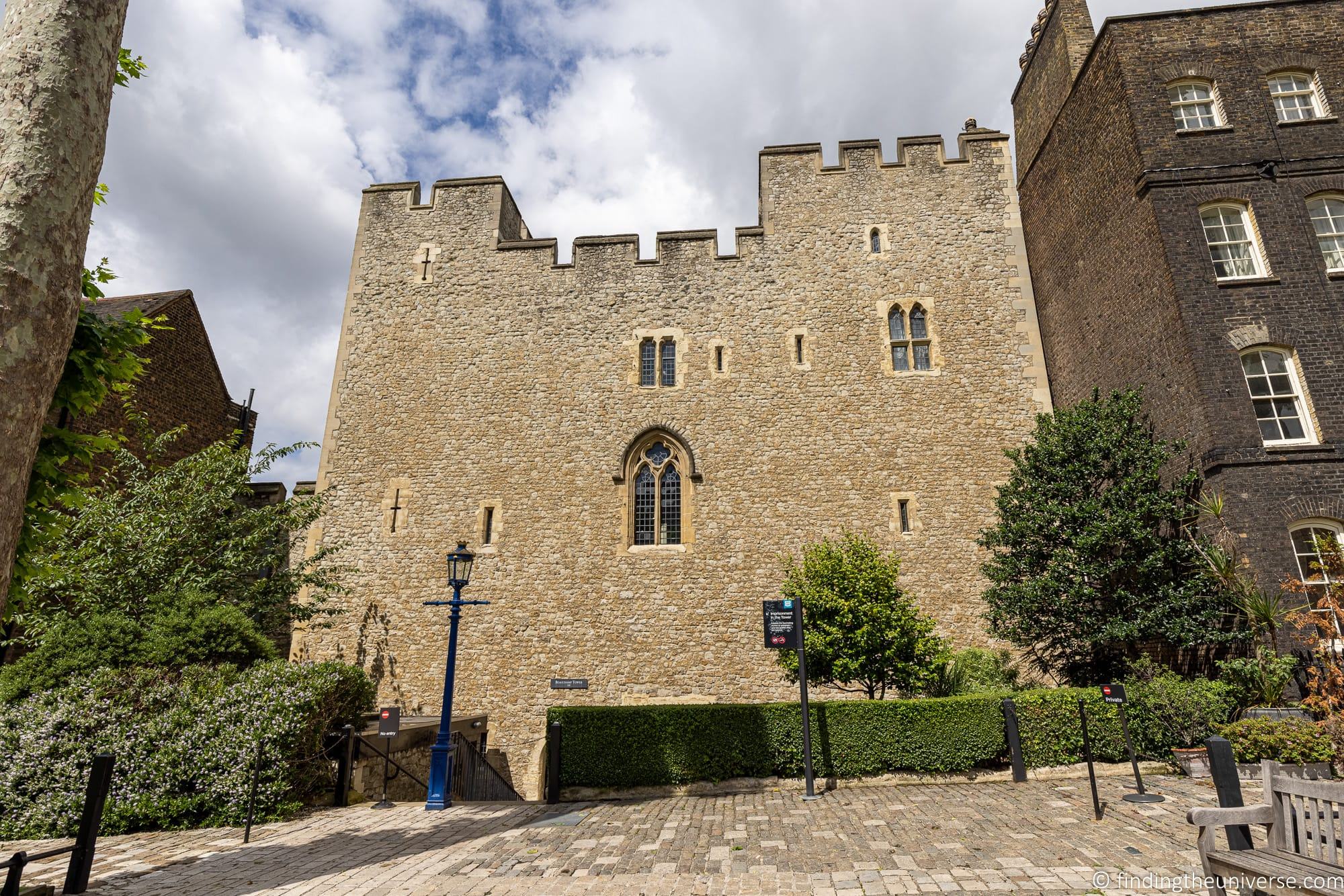
One of the most well known sights at the Tower of London are the Tower Ravens. These large black birds have been a common sight at the Tower of London for centuries. The history of the Ravens at the Tower is one of myth and legends, so it’s hard to know exactly what is fact and what is not.
One story goes that the ravens were first encouraged to take up residence at the Tower to enhance the atmosphere at the executions on Tower Hill. Large black birds flapping ominously overhead would certainly lend a certain something to any execution. This association with ravens at the Tower is then said to have led to a captive population being permanently installed by Charles II in the 17th century.
Other scholars disagree, and surmise that this is all a myth put about by romantic Victorians. Certainly, the first known reference of captive Tower Ravens is in an illustration of 1863.
Whichever version of events you choose to believe, the reality is that these days there are always at least six captive ravens who are resident at the Tower, and who are looked after by the Yeoman Warders. The legend goes that should the ravens leave the Tower of London, the Crown will fall, and Britain with it.
Rather than testing this theory, the ravens are kept and fed at the Tower, and you’ll no doubt encounter them on your visit. They are often to be found hopping around after the Yeoman Warders, because they are clever birds who know where their food comes from.
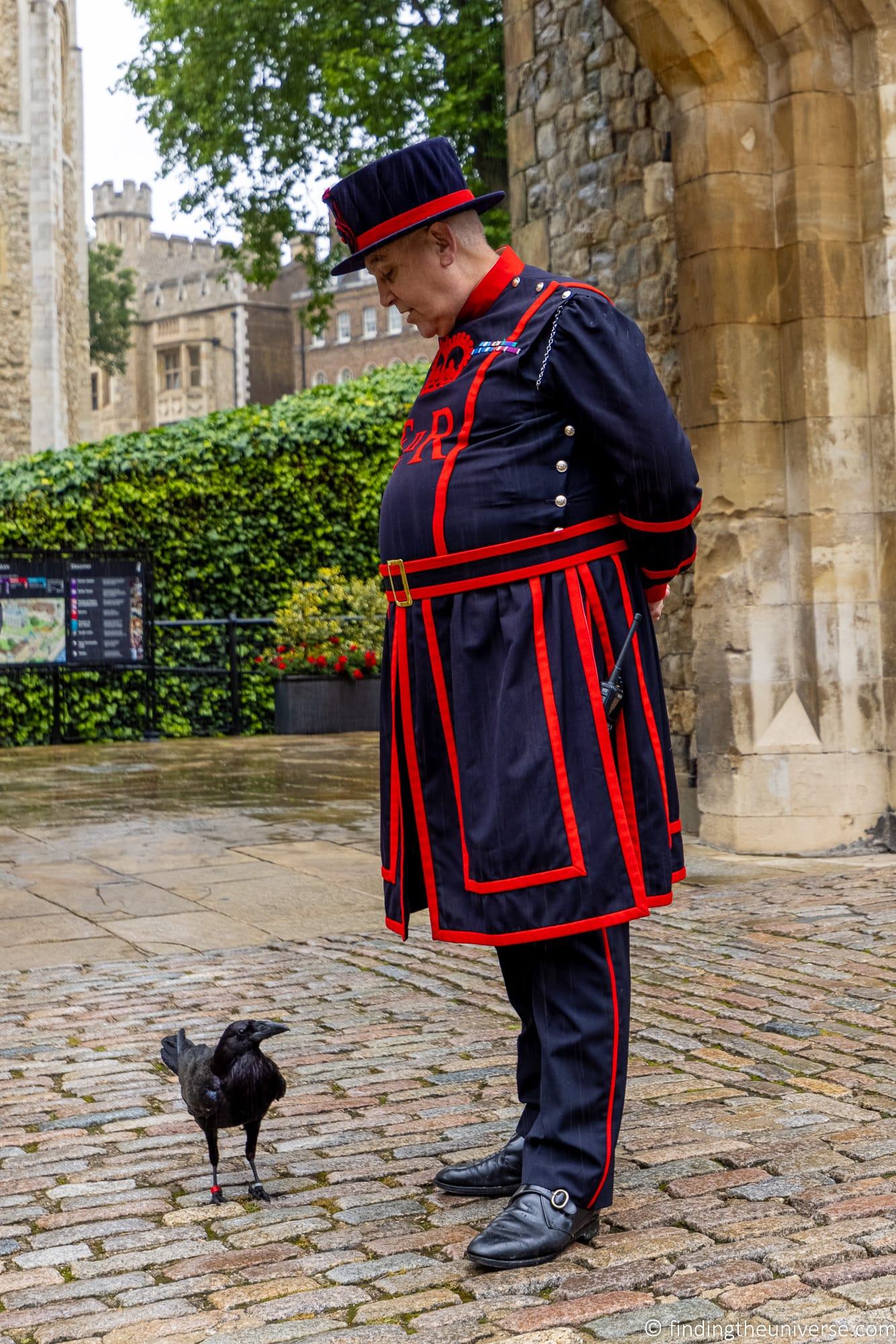
The Yeoman Warders & Guided Tours
An iconic sight at the Tower of London are the Yeoman Warders, commonly known as Beefeaters. These men and women (to date there has only been one woman warder) have the full title Yeomen Warders of Her Majesty’s Royal Palace and Fortress the Tower of London, and Members of the Sovereign’s Body Guard of the Yeoman Guard Extraordinary.
The Yeoman Warders are the ceremonial guards of the Tower of London, with the responsibility of looking after the prisoners in the Tower as well as safeguarding the Crown Jewels. They are also the de facto guides at the Tower, and have been helping tourists find their way around the sight and sharing their knowledge since the 19th century.
Yeoman Warders are commonly known as Beefeaters, a term whose origin is shrouded in mystery, but likely has something to do with the quantities of beef that formed a part of their diet. They were formed in 1485, and are the oldest military corp still in existence.
Yeoman Warders are today all former members of the armed services with a minimum of 22 years service. They live within the grounds of the Tower of London with their families, and they lead free guided tours within the Tower. We highly recommend spending a bit of time chatting to a Warder, as they have some wonderful stories and knowledge to share.
They run free guided tours throughout the day which are included with your tickets, and these are well worth joining. The talks cover different topics, and you can find out more when you visit about what’s on that day.
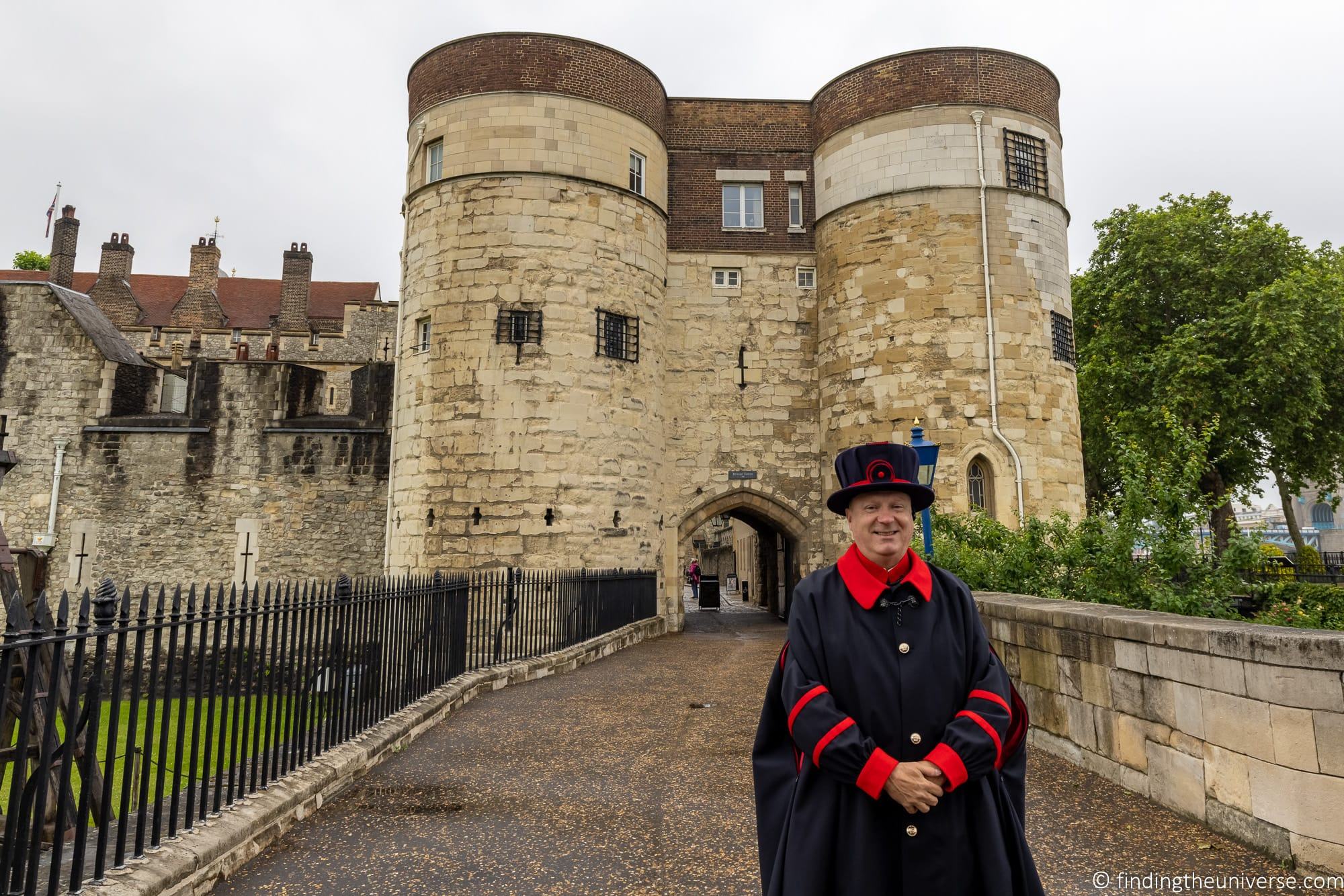
As well as the Yeoman Warders, the Tower of London also has a number of Guards on duty. These are active serving military personnel, responsible for guarding the Jewel House and the Queen’s House.
They are recognisable from their red uniforms and their large furry bearskin caps. As well as their guard role, they also take part in three daily ceremonies at the Tower of London: the Ceremonial Opening, the Ceremony of the Word, and the Ceremony of the Keys.
Whilst photography of the Guards is permitted, you should be aware that these are active military personnel performing an important task. When they are marching or otherwise moving around the site, it is important to stand clear and let them get on with their duties.
Unlike the Yeoman Warders, the Guards are not there to provide visitors with assistance and as such they won’t answer questions. So please be respectful and direct any questions you have to the Yeoman Warders, rather than the Guards.
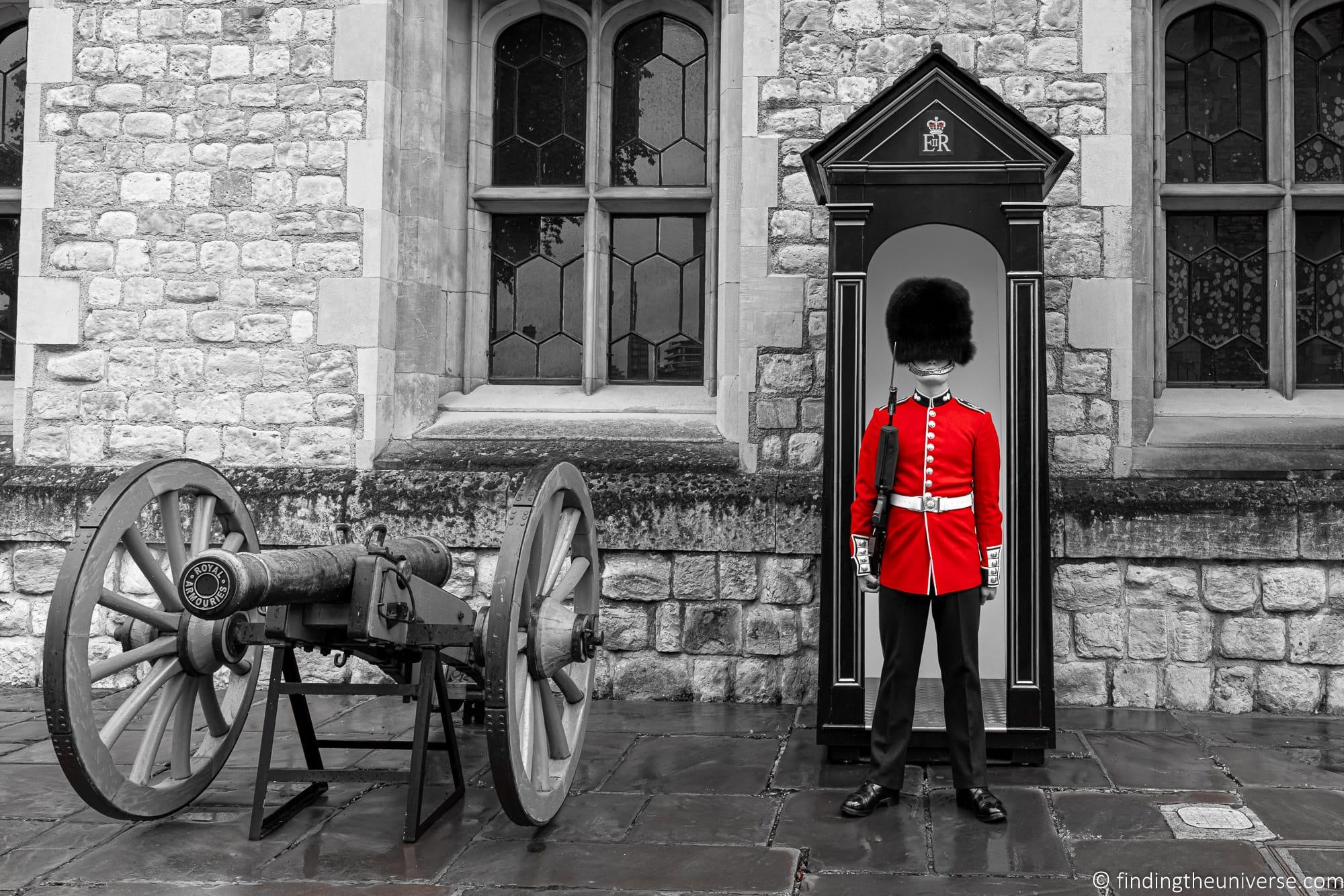
How Long to Visit the Tower of London For?
As you can see, there is a lot to see and do at the Tower of London. We recommend a minimum of two hours for your visit if you just want to see the highlights, but ideally we’d recommend planning to spend around three hours here. At busier times, attractions like the Crown Jewels can involve a queue time of up to an hour, so you will need to consider this as well.
But you can easily spend most of a day here as there is so much to do and see if you visit all the available attractions. In addition to visiting all the various parts of the Tower and attractions, there are also guided tours you can join (most are free with your ticket) as well as the restaurant, café, and gift shops.
Those visiting with children may want to make sure to take some time between visiting buildings and museums to eat and let the kids enjoy the green spaces.
Is the Tower of London Worth It?
Hopefully having read this guide so far, and seeing all that there is to see and do at the Tower of London, you will agree that the Tower of London is definitely worth it.
Whilst the entry price is relatively high, it is on par with other major attractions in London like the London Eye . You could also spend a full day just at the Tower of London if you wanted to as there is plenty to see and do.
We feel it offers great value for what you can see, which includes many things you just can’t see anywhere else like the Crown Jewels.
Practicalities for Visiting the Tower of London
Like any major tourist attraction, there are a few things to be aware of when visiting the Tower of London.
Facilities at the Tower of London
There are a number of toilets at the Tower of London, some of which offer accessible facilities and some of which offer baby changing facilities.
Buggies and push chairs are allowed at the Tower of London, but due to the ancient cobbled ground many parts of the Tower are not exactly pushchair friendly. There is a buggy park outside the White Tower.
There are first aid services at the Tower of London. If you are visiting with children, there is not a meeting point, but children should be instructed to talk with a Yeoman Warder if they need help.
Security at the Tower of London
Like most locations these days, there are security checks when visiting the Tower of London. If you have any kind of small backpack or bag, it will be searched on entry, and the Tower reserves the right to search visitors on entry as well. Large luggage is not permitted in the Tower.
There are a number of prohibited articles which seem fairly obvious to me. Weapons, including knives with a blade in excess of 3 inches are forbidden, as are fireworks, smoke bombs and pepper spray.
Accessibility at the Tower of London
The Tower of London strives to be an accessible venue, with a number of measures in place to make all visitors welcome. However, there are some limitations, as this is a very old building complex with cobbled areas, steep narrow staircases, and low doorways.
There is a full guide to accessibility at the Tower of London, with detailed information on each area of the Tower and accessibility features. You can download this here .
All visitors with disabilities are welcome to bring a carer free of charge. Tickets for carers can be obtained on the day, with presentation of proof of a registered disability.
Luggage storage Near the Tower of London
Whilst small daypacks are allowed, larger luggage and suitcases are not permitted at the Tower of London. There is also no on-site luggage storage. We suggest checking online luggage storage options here and here .
Photography at the Tower of London
As you can see from this guide, I’ve taken a lot of photos at the Tower of London. So I’m pleased to report that photography is allowed almost everywhere within the Tower. The main exceptions to this rule are:
- the Crown Jewels exhibit and the entire inside of the Jewel House
- the Martin Tower
- the Chapel Royal of St Peter ad Vincula.
- the Chapel of St. John in the White Tower
No photography or filming is allowed in these parts of the Tower.
You are also permitted to photograph the Guard and the Yeoman Warders. For the latter, it is always polite to ask permission. For the former, they don’t speak to people usually, but they do expect to have their photos taken. Just be respectful!
If you plan to do any commercial photography or wedding photography, or use photographic equipment such as tripods and selfie sticks, this needs to be arranged in advance. There are also rules in place to safeguard children, young people and vulnerable adults.
Food and Drink at the Tower of London
If you get hungry whilst you are at the Tower of London, you have a few options.
First, you are allowed to bring your own food and drink to the Tower of London. However, do be aware that you are only allowed to consume it in designated areas.
There are also a number of options for eating and drinking at the Tower of London. The largest sit down option is the New Armouries Café. This includes a range of full size hot and cold meals, as well as drinks, snacks, sandwiches, cakes and pastries. This is the best option for a sit down meal.
There are also a number of food and drink kiosks, including an ice cream stand, at various locations around the Tower of London. So you won’t go hungry.
Internet Access at the Tower of London
There is full free WiFi access at the Tower of London. Just connect to the free WiFi network.
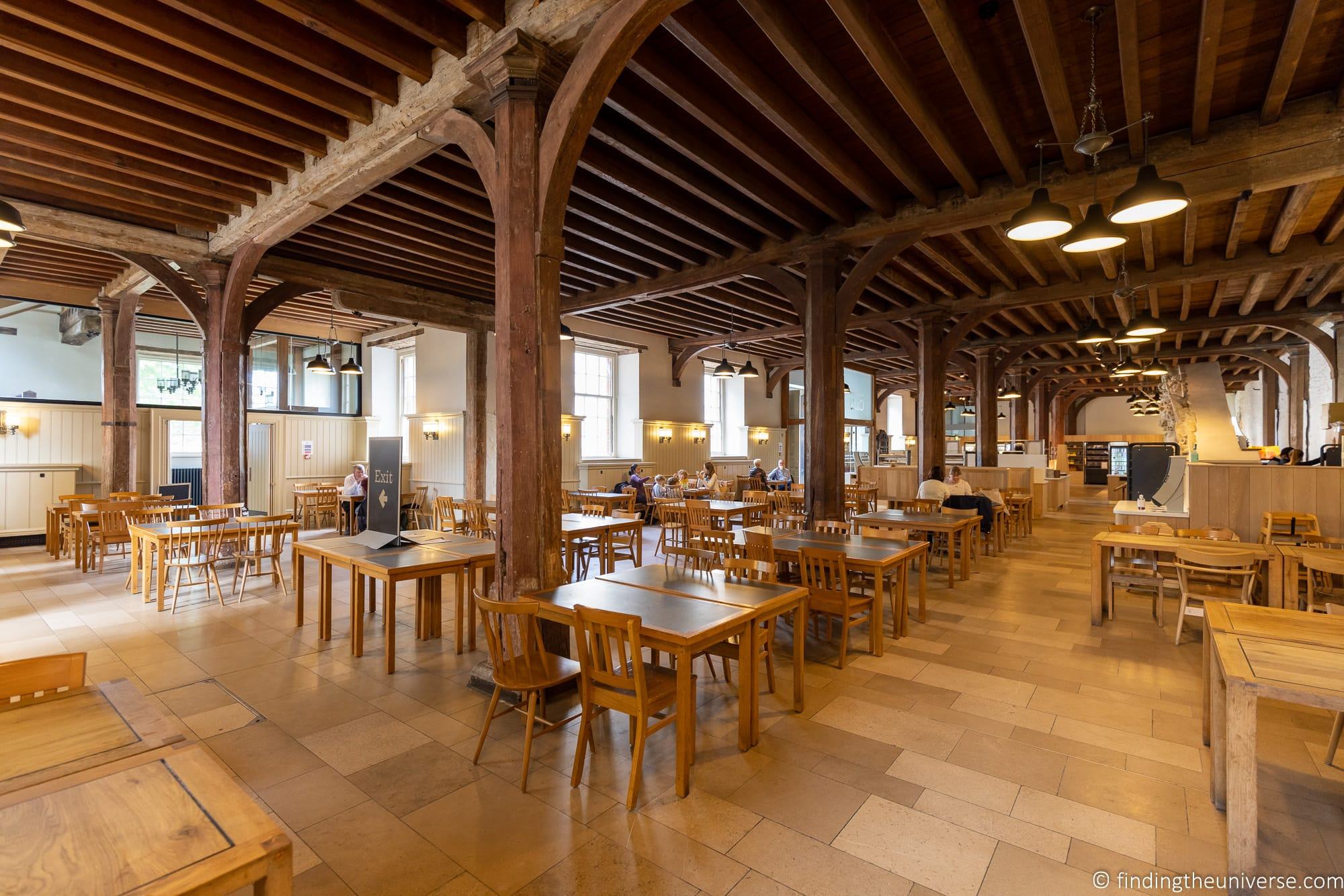
Tours of the Tower of London
You can book a tour which includes the Tower of London. Some of these focus on the Tower itself, whilst others will include other sights and experiences across the city.
One thing to note is that the only external guides who are allowed to guide inside the Tower of London are Accredited Guides or Blue Badge guides.
Some tours you’ll find online will say that they include the Tower of London. However, if the tour is not operated by an accredited blue badge guide, the guide will not actually accompany you inside the Tower of London. So you would have to guide yourself for this part of the tour, or join one of the free tours after you enter with a Yeoman Warder.
Here are some options to consider.
- This Tour of the Tower of London includes early access to the Tower and Crown Jewels. You’ll also get to see the opening ceremony, and have a fully guided experience inside the Tower of London
- This full day tour of London includes many of the highlights of London, and finishes with a fully guided tour of the Tower of London
- If you’d like a private tour, this tour with a blue badge guide focuses on the Tower of London, and the guide will accompany you inside throughout the experience
- If you want to see the evening Ceremony of the Keys and also take a quick tour of the Tower, check out this tour . It includes an hour’s tour with a Yeoman Warder as well as the opportunity to watch the Ceremony of the Keys. I have done this tour and the experience is definitely interesting, however it is quite a quick tour and you don’t see inside the White Tower or the Crown Jewels. So for a more complete experience I would probably recommend this morning tour .
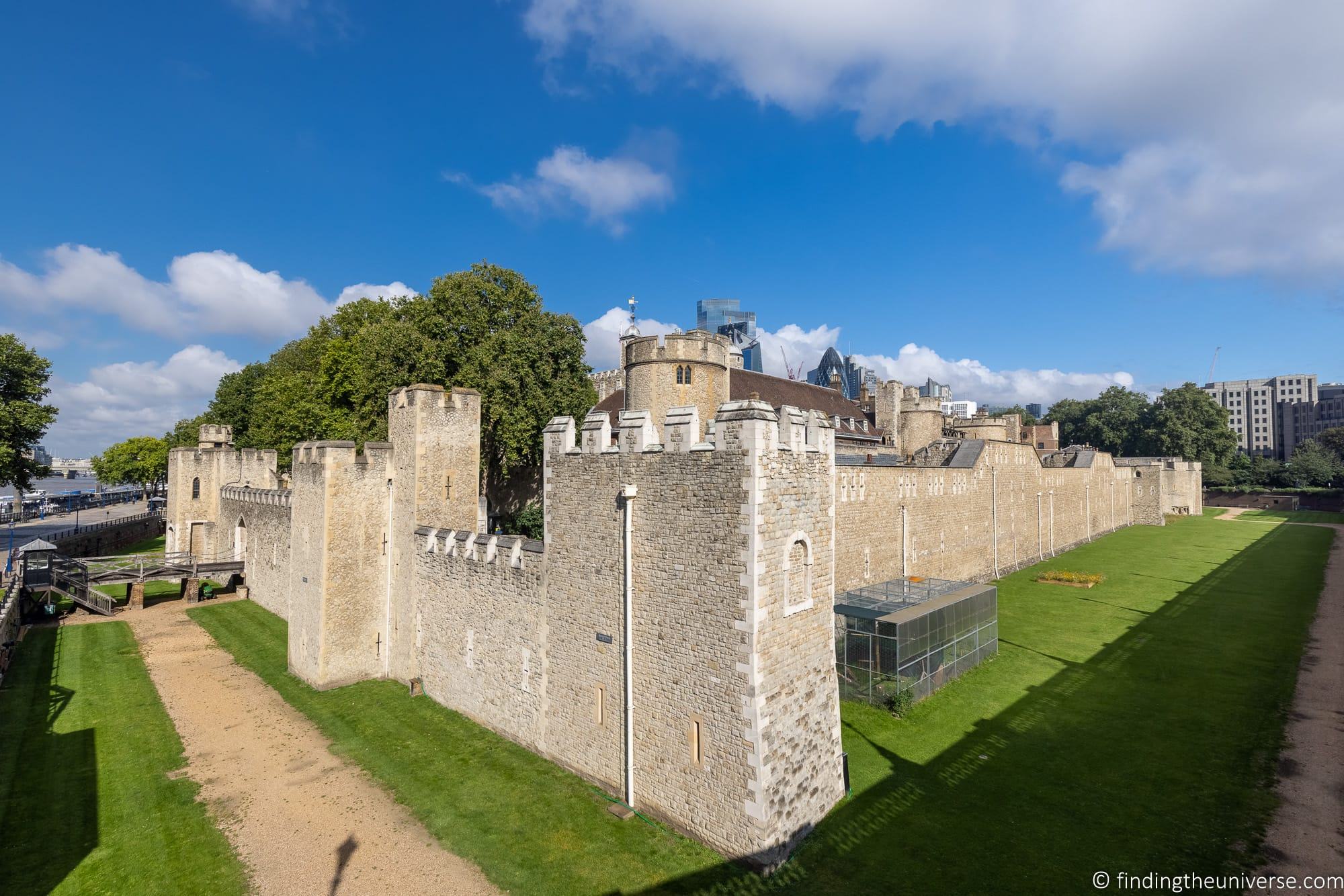
Tips for Visiting the Tower of London
To help you get the most out of your Tower of London visit, we’ve put together these tips based on our multiple visits.
Consider a Guided Tour or Audio guide
As you have probably noticed, there’s a lot to see at the Tower of London, and the building itself has been witness to around a thousand years of history. As such, it can be a bit overwhelming!
For this reason, we usually recommend that visitors consider either taking a guided tour or using the on-site audio guide to enhance their visit. For guided tours, the Yeoman warder led tours which are included in your entry ticket are a great option. Alternatively, see our section on recommended tours for other ideas.
Chat with the Yeoman Warders
Whether or not you opt to take one of the free guided tours, we definitely recommend taking some time to talk with the Yeoman Warders. They’re easily recognisable from their uniforms, and they have a wealth of knowledge about the Tower of London.
So whether you have a question about what it’s like to actually live at the Tower of London, or want to know something about its history, these are the people to talk to!
What to Bring
You’ll be spending a few hours at the Tower of London, so we would recommend bringing comfortable clothes and walking shoes, as well as a refillable water bottle. We also recommend either an umbrella or lightweight rainproof coat, whatever time of year you visit. There are quite a few outdoor areas, and the weather in London can be unpredictable even in the summer time!
For more ideas on packing, see our guide to what to pack for London .
Plan your day in advance
There is a lot to see at the Tower of London, so having a general idea of the layout and what order you intend to visit things is a good idea. If you are not sure if you have the time to visit everything (there is a lot to see), you will want to prioritize the areas you really want to see by visiting them first.
Planning ahead can save you retracing your steps and walking further than you need to. As mentioned previously, the site spans 12 acres with two concentric walls surrounding the centre, and attractions found throughout.
The site is well signposted, and you’ll get a free map when you visit. You can also download this in digital form in advance of your visit from the official website here . If you need directions when you’re on site, just ask a Yeoman Warder.
We highly recommend planning to arrive as close to opening as you can, and to head straight for the Crown Jewels exhibition. This tends to be the busiest attraction on the site, and queues can be up to an hour long during peak visiting times. So if you can get this done first then you’ll be able to have a more relaxing time overall.
Attractions Near the Tower of London
The Tower of London is very close to a number of other London attractions. These include:
- Tower Bridge (6 minute walk)
- HMS Belfast (10 minute walk)
- The Shard (20 minute walk)
- Borough Market (20 minute walk)
- St. Paul’s Cathedral (20 minute walk)
- Shakespeare’s Globe (20 minute walk)
As you can see, it would be easy to incorporate a trip to the Tower of London with other sightseeing. See our suggested itineraries for 1 day in London , 2 days in London , 3 days in London and 6 days in London for some ideas.
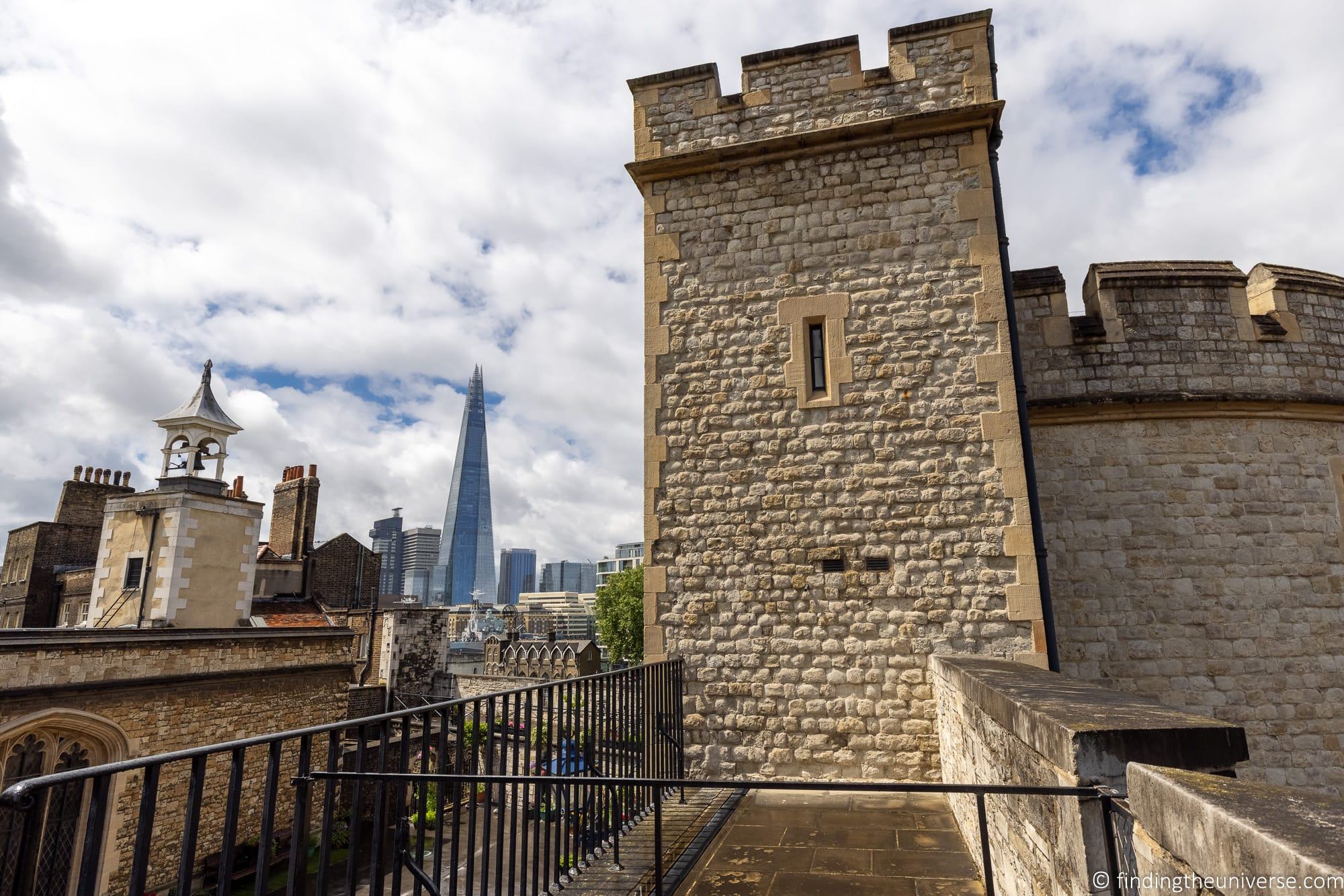
Where to Stay Near the Tower of London
If you want to stay near the Tower of London, we’ve put together some options for you. It’s worth bearing in mind that The Tower of London is right next to the city of London, so this area is largely dominated by office buildings rather than hotels, however there are some options to choose from. We suggest the following.
- Wombats Hostel – just 13 minutes walk from the Tower of London and Tower Bridge, this well reviewed hostel offers basic shared accommodation. There’s also a bar and shared kitchen facilities on site.
- Clayton Hotel – well located for the city’s financial district and just 15 minutes walk from the Tower of London, this is a very well rated 4* hotel offering comfortably sized en-suite stylish rooms. There’s free WiFi throughout and an on-site restaurant and bar.
- New Road Hotel – this excellent value and well reviewed boutique 4* hotel in Whitechapel is found in a former textile factory. It’s 25 minutes walk to the Tower of London. A wide range of rooms are available, from more budget oriented options through to higher end options with hot tubs and terraces. Rooms are all en-suite and air-conditioned, and there’s also an on-site bar and restaurant.
- Shangri-La Hotel at the Shard – found between floors 34 and 52 of the Shard, rooms at the well reviewed 5* Shangri-La offer some of the most spectacular views of the city you’ll find in any hotel in London. Good sized rooms feature marble en-suite bathrooms with shower and separate bath tub. Rooms also feature air-conditioning, coffee machines and free WiFi, as well as a set of binoculars to enjoy the view! There are three dining and drinking menus on site, and it’s a 20 minute walk to the Tower of London
Of course, there are many more options for accommodation all across London. See our guide to where to stay in London for some more options and tips on which London neighborhoods might be the best place to stay depending on what you plan to visit.
Further Reading for Visiting London
That’s it for our complete guide to visiting the Tower of London! We hope you found it useful to help you decide on the best property for your trip to the city. We’ve also got a number of other resources to help you plan your trip to London and the UK in general which we think you’ll find useful.
- We have detailed itineraries for 1 day in London , 2 days in London , 3 days in London and 6 days in London
- Another popular attraction in London is the London Eye. See our complete guide to visiting the London Eye for everything you need to know for the London Eye
- You’ll need somewhere to stay in the city if you’re here for more than a day. See our guide to where to stay in London for some suggestions across all budgets.
- If you plan on doing much sightseeing in the city, you will likely save money with a London Pass. See our complete London Pass review here to see if this might save you money on sightseeing.
- We have a guide to getting around London , and a guide to using the Oyster card in London .
- If you’re flying into one of London’s six airports, see our guide to getting to London from the airport .
- We have a detailed guide to what to pack for London , to help you prepare for your trip to London.
- We put together some tips on finding the best Photography Locations in London
- For the Harry Potter fans amongst you, take a look at our guide to finding Harry Potter in London
- 8 Things to Do in Kensington , London, in case you wanted to focus more on a specific region of the city
- If you enjoy military museums, take a look at our guide to London’s best military museums and memorial . Also see our Winston Churchill in London guide .
- Tips on spending Two Weeks in the UK , should you want to have London as the start of a bigger adventure
- For budget planning, see our guide to how much it costs to travel in the UK
- Our experience taking a full day walking tour of London , in case you like the idea of a fully guided day
- Thoughts on visiting Stonehenge from London as a day trip
- Other good day trips from London include Oxford and Cambridge. See our guide to Oxford in a day as well as things to do in Cambridge for ideas.
- Heading further north? We have loads of content on Scotland , including a 2 Day Edinburgh itinerary , a guide to the North Coast 500 and a 2 Day Glasgow itinerary
- How about heading to Paris from London? We have a detailed guide to the best way to get from London to Paris to help you plan
- The Eyewitness Travel Guide to London , which has all sorts of information within, including more itineraries and ideas for your trip
- Rick Steve’s London guide, the #1 bestseller on Amazon for UK travel guides, and always an excellent source of relevant information
And that’s it! We hope you found our guide to visiting the Tower of London helpful, and as always, if you have any questions, just pop them in the comments and we’ll answer them as soon as we can!
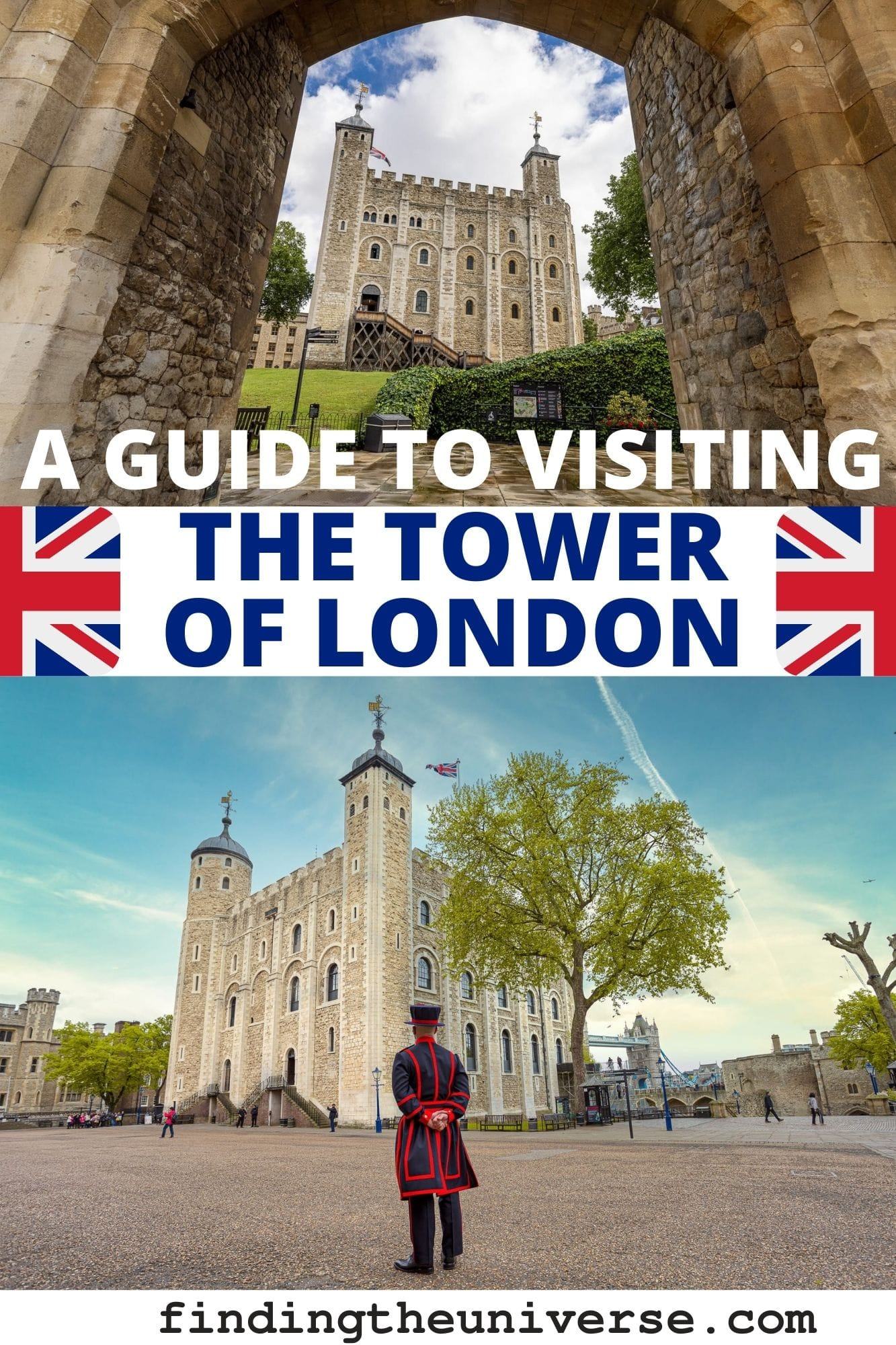
Enjoyed this post? Why not share it!
There are 6 comments on this post
Please scroll to the end to leave a comment
Anne Clough says
8th July 2023 at 3:29 pm
Are there water fountains on site to be able to fill my bottles?
Laurence Norah says
8th July 2023 at 3:51 pm
Yes there are. I can also recommend getting a copy of the “Refill” app for your smartphone which has a map of all the water fountains as well as cafes and bars which offer free refills of water bottles 🙂
Have a great time in London!
Nichelle says
6th January 2023 at 6:48 pm
We will bein London April 2 and April 3rd, when can we purchase tickets for the Tower of London?
The website does not show any tickets available to purchase yet.
14th January 2023 at 10:22 am
Hi Nichelle,
Sorry about the slow response! I’m travelling with limited internet at the moment. You are correct, currently tickets beyond the 1st of March are not available. I contacted the Tower of London about this, and they were not able to give me an updated timeframe for when these tickets will go on sale, only to say that you should keep checking the website. Sorry to not be of more help! Have a great trip to London!
29th December 2021 at 11:18 pm
great site! do you know if beefeaters will be available in May 2022?
30th December 2021 at 10:12 am
Thanks Susan! Yes, the Beefeaters should be leading their tours in May and also be there for any photos or questions you have. They live on site so they are pretty much always there 🙂
Leave a Reply Cancel reply
Your email address will not be published. Required fields are marked *
Let me know when there's a reply to my comment (just replies to your comment, no other e-mails, we promise!)
Subscribe to our monthly Newsletter where we share our latest travel news and tips. This also makes you eligible to enter our monthly giveaways!
We only ask for your e-mail so we can verify you are human and if requested notify you of a reply. To do this, we store your data as outlined in our privacy policy . Your e-mail will not be published or used for any other reason other than those outlined above.

Honest Visitor’s Guide to the Tower of London (2024)
This post contains affiliate links for which I may make a small commission to help keep the site running. You will not be charged extra for these items had you not clicked the links. Thank you for your help to keep the site running!
Visiting the Tower of Londo n is one of the most important things on the list of many London tourists.
Not only is it a fortress in the middle of London with some pretty amazing views, but it’s also home to the Crown Jewels and thousands of years of history (including some pretty gnarly medieval torture!)
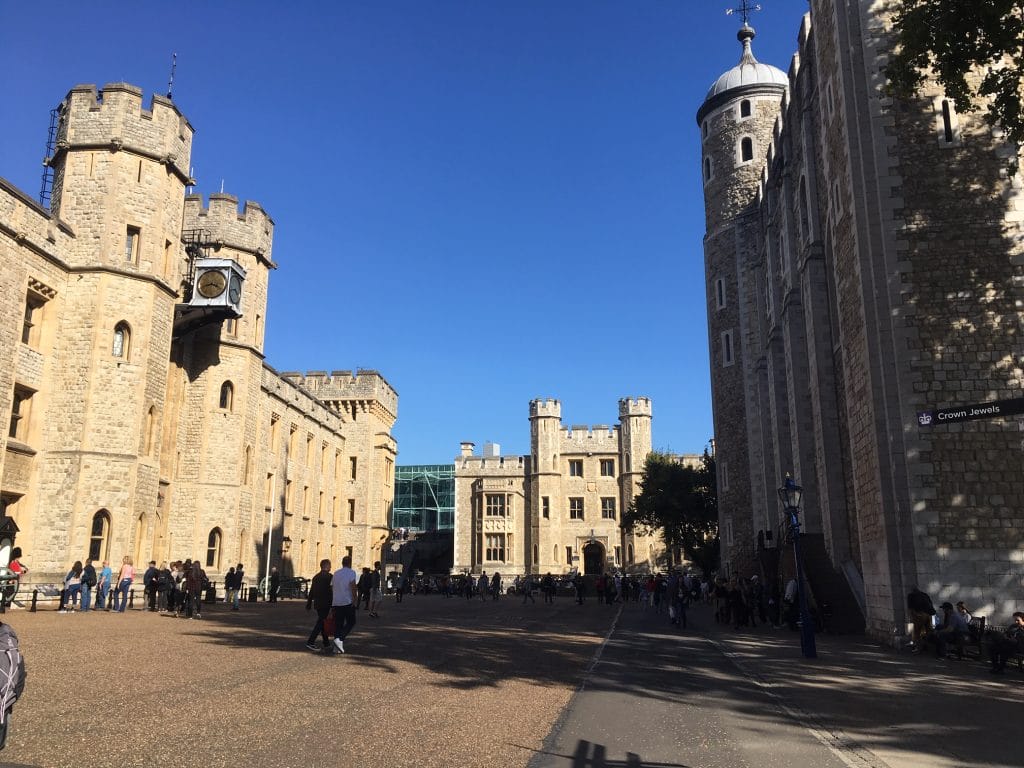
In this guide, I want to answer some of the main questions visitors have about visiting the Tower of London, an iconic London attraction , including the price, when to visit the Tower of London, and the different tour options.
GET A FREE LONDON INTRO GUIDE and ACCESS TO MY FB GROUP
Start your planning with this “Intro to London” guide and access to my London planning Facebook group!
I consent to receive this book and other e-mails from Girl Gone London
Check out the YouTube channel for more London tips
Where is the Tower of London?
You’ll find the Tower of London on the edge of the Thames River, near Tower Bridge .
The exact address is: Tower of London, London, EC3N 4AB.
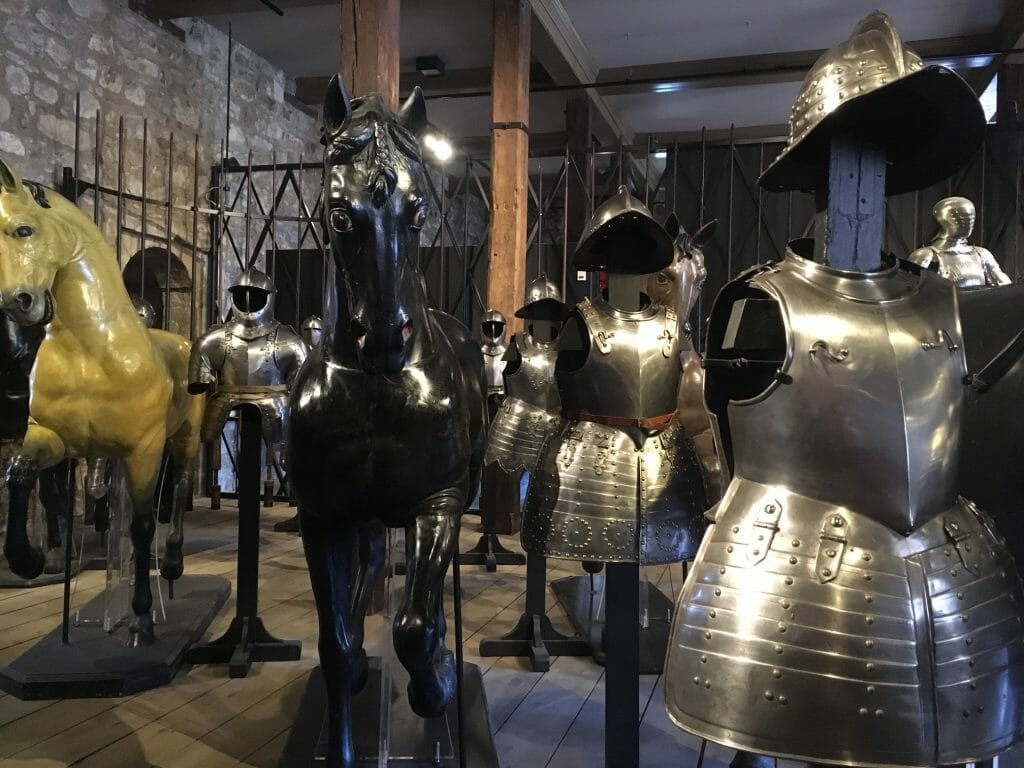
The Absolute Must-Knows (from a Londoner)
- 😍 Cheapest Way to See it All: Get the London Pass here (yes, it’s worth it)
- 🎭 Cheapest site for West End theatre tickets: London Theatre Direct
- 🚕 Cheapest and most reliable airport transfer service: Welcome Pickups
- 🚉 Cheapest Way to Book Train and Bus Tickets: Omio
- 🔌 Most Reliable Adapter for UK Plugs: This one
Hey! Want more honest UK tips and planning advice? Click here to join my London and UK Travel Tips Facebook group , where I can answer more of your questions!
How to Get to the Tower of London
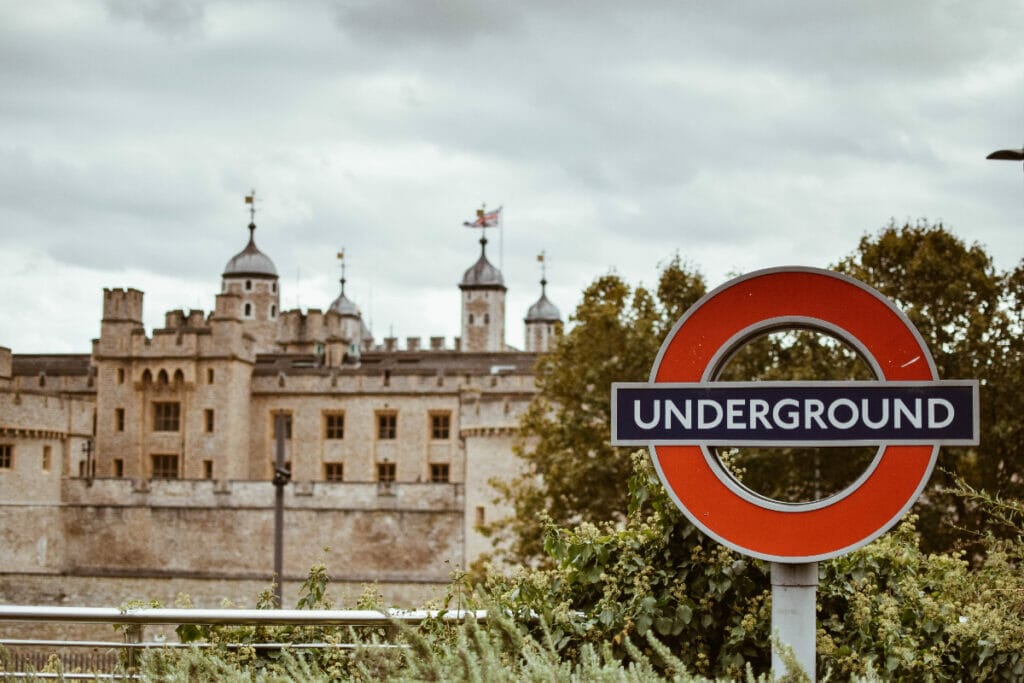
The easiest way to get to the Tower of London is by public transportation or Uber/London taxi.
If you’re traveling by taxi, they won’t need the address, just tell them where you’re going!
If you’re traveling by public transportation, take the London Underground to Tower Hill Station (which serves the Circle and District lines) and then you’ll see the Tower as soon as you walk out of the station, just across the road.
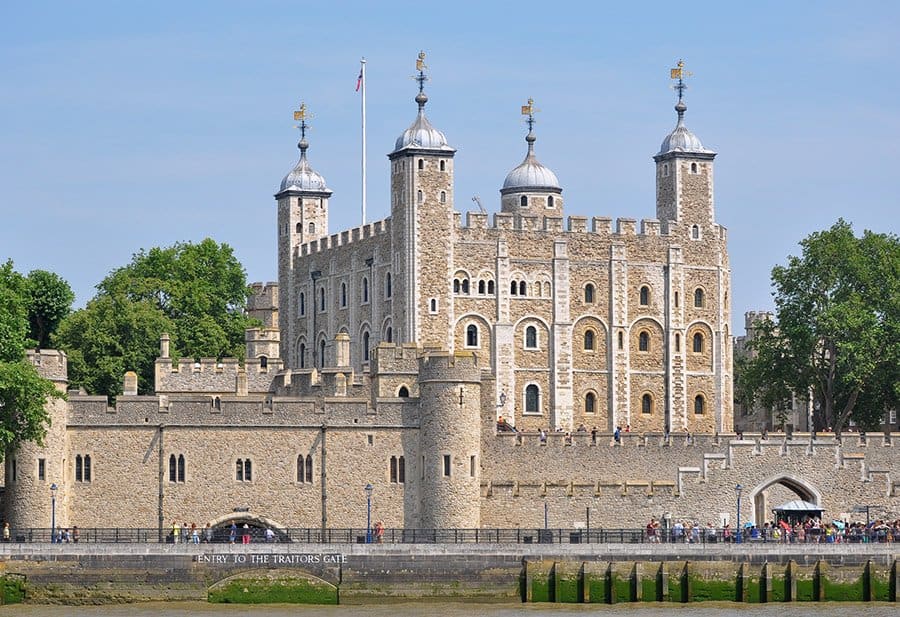
⭐️ Top tip! ⭐️
To save yourself time, make sure to book your Tower of London tickets in advance here (and you’ll save some money!)
>>Click here to book in advance
Should I Visit the Tower of London?
Absolutely, yes!
This is a fan favorite amongst Londoners and London visitors alike.
One of the best things to do in London with kids , best things to do in London for couples , and best things to do in London overall.
Yes, it’s worth the money, yes it’s worth the time, and yes, if you can fit it in, you should definitely do it!

IMPORTANT: are you coming to the UK from abroad?
In case you’re reading this from outside the UK and will be a foreign visitor here, you need to know these 2 things to stay safe and save money.
- Travel insurance – you need it when going overseas! I use this site to get the best quotes and purchase my packages from. Do not skip this – having medical coverage abroad as well as other coverage in case of missed flights, lost luggage, etc is essential. As I said, I have never gone wrong using this site .
- International debit cards without fees – do not get stuck paying extortionate foreign fees when using your card abroad (and the UK is almost all card these days). I use the Wise debit and travel card which you can apply and learn more about here .
Buying Tickets to the Tower of London
You can buy tickets to the Tower of London on the day of try, but it’s a few pounds more than buying them online ahead of time.
I always recommend buying tickets online ahead of time if you can , though it is a massive place so you don’t need to buy them too far ahead of time to guarantee entry like some other London attractions.
The current prices for adults are £32.90 and starting at £16.40 for kids (with the online discount).
Kids under the age of 5 go free, and if you want an audio guide, they start at £4.00 extra.
You should also know that if you are buying tickets on the day, you need to go to the ticket office which is across the main entrance from the Tower of London.
It will be obvious if you’re walking from the tube station, but if you’re coming from a walk along the river, you’ll note that they do not sell tickets at the entrance directly facing the river.

Can I Use the London Pass at the Tower of London?
Yes, you can use the London Pass at the Tower of London.
Simply show your pass and you’ll be let in (there may be a line to get to the entrance, but once you get in, you’re in).
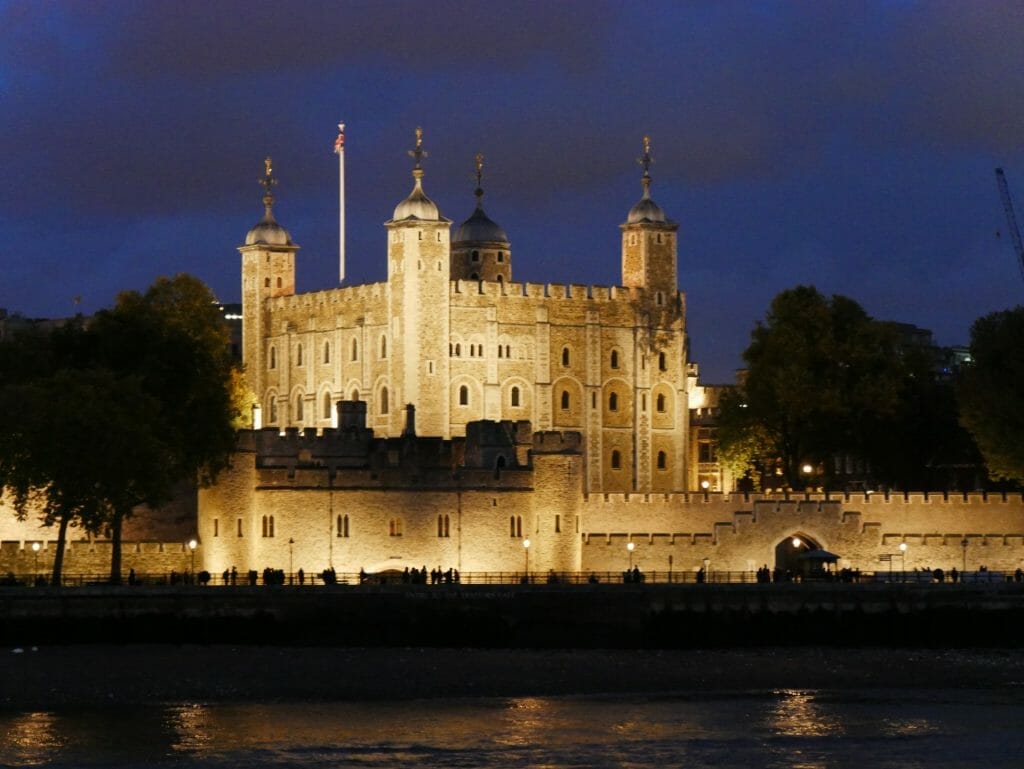
When Should I Visit the Tower of London?
As one of London’s most popular attractions, the Tower of London does get busy, particularly in the summer months.
London in August is very crowded, and this rings true for the Tower of London lines.
It’s always best to visit on a weekday for lower crowds, no matter the time of year, and if you’re really intent on getting in as fast as possible, try and arrange to be there at opening rather than mid-day.
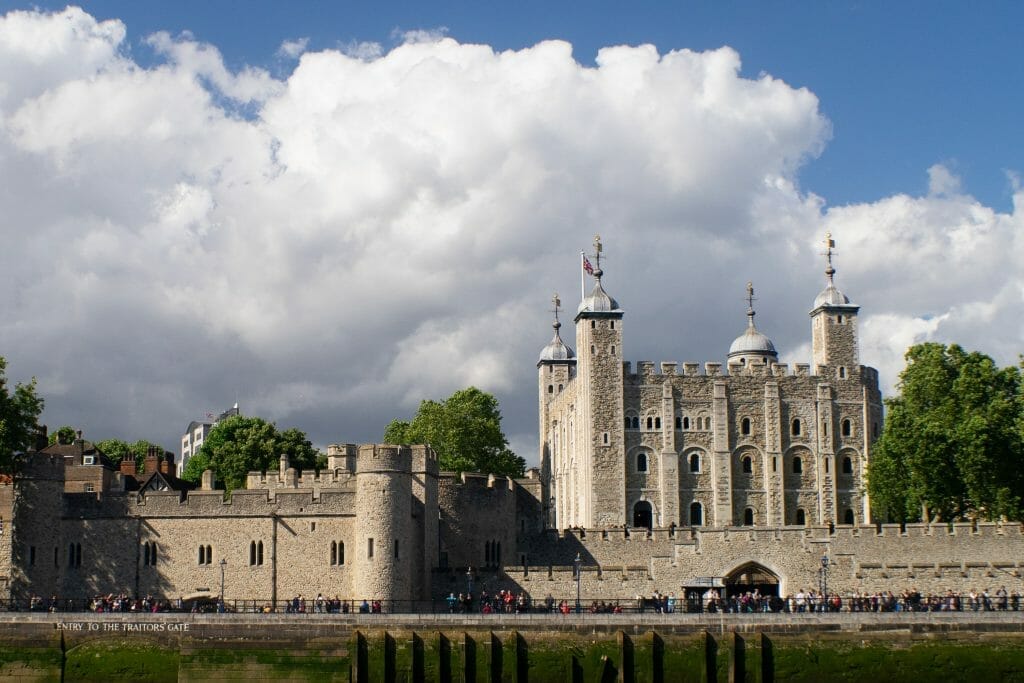
Are there Tours at the Tower of London?
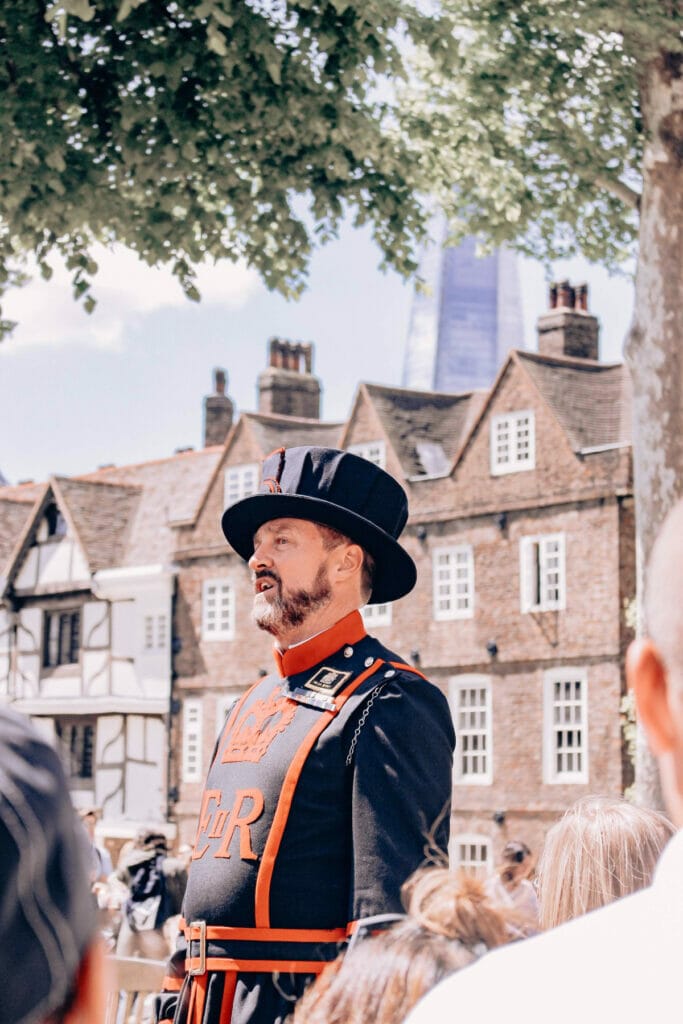
The Tower of London is, for the most part, a self-guided experience as you wander your away around the tower and the surrounding buildings to see what life was like for London residents (and prisoners) back in the day.
However, there are regular “beefeater” tours run by the yeoman warders throughout the day which are fantastic and worth doing.
Officially, they are “defenders of the tower,” but in reality they spend their time giving tours and educating visitors about the importance of what has and does go on at the Tower of London.
The regular beefeater tours are free with entry, you just need to get the daily guide that tells you the times and then meet at the starting point for the next tour.
As I mentioned, you can also get an audio guide to help you around the tower, particularly if you learn better listening to things rather than reading informational plaques.
If you want a more personalized experience with a smaller group than a standard Beefeater tour, you can also book onto a small group Beefeater tour with more opportunity to ask questions.
And, of course, if the Tower of London is even more important to you than that, you can take an exclusive pre-opening tour without the crowds and get to enjoy the opening ceremony, which is a truly special London experience .
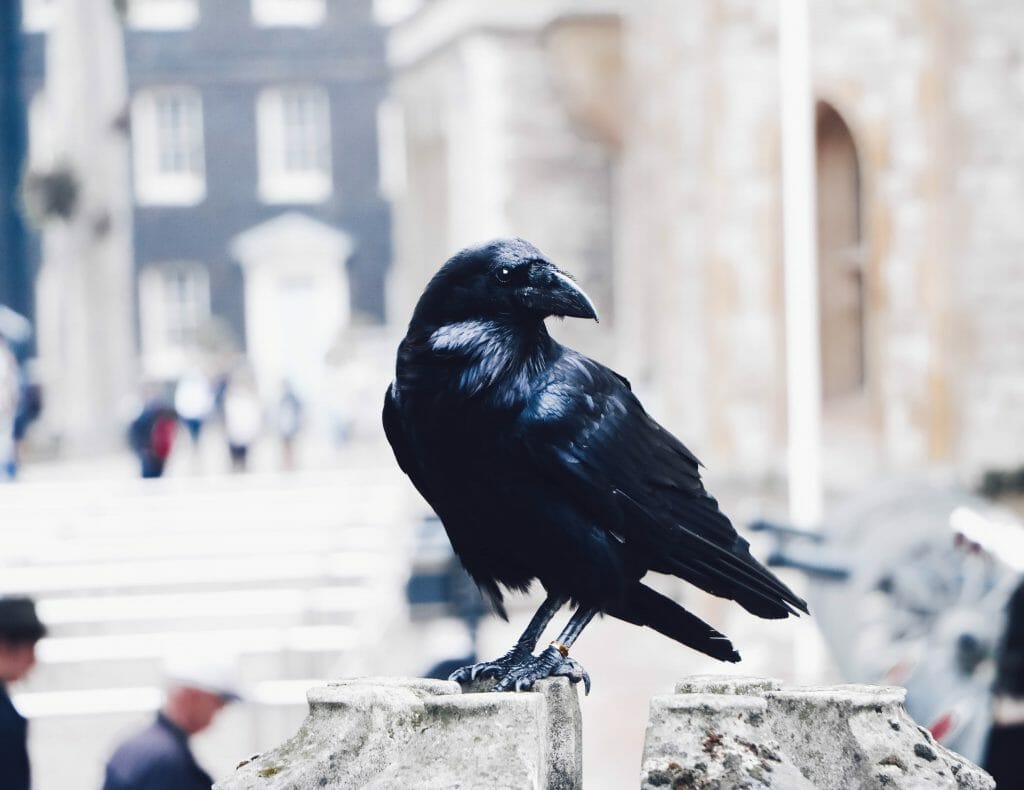
Tower of London Touring Plan
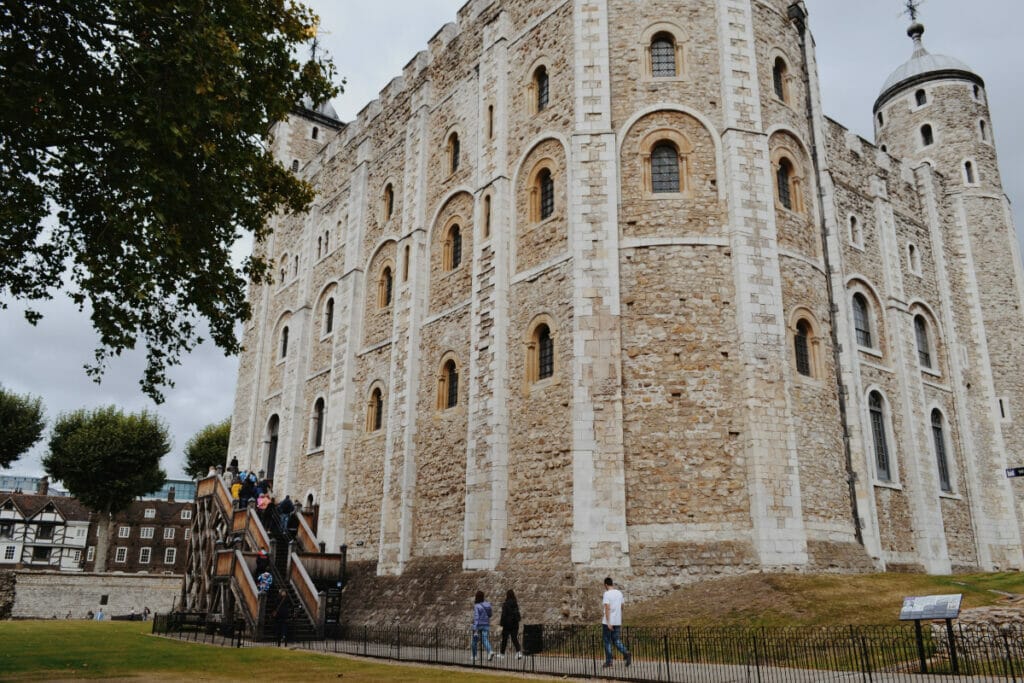
Once you gain access into the Tower over the moat, you’ll have a ton of history, artifacts and displays at your fingertips.
The Tower of London is very much an entire day’s event if you are truly interested in seeing every nook and cranny, but if you don’t have that much time, you should start by lining up to see the Crown Jewels.
These are the real, authentic, actually-have-been-on-the-Kings-and-Queens heads crowns, jewelry, and other precious Royal Family heirlooms.
To see them, you go through an exhibit that shows Queen Elizabeth II’s coronation on the screen, and then proceed into the Crown Jewels room which has two moving walkways on either side.
You are not allowed to take pictures, and while you can go back and get on the walkways again, you cannot walk “backwards” on yourself while on them – the point is to give people enough time to see them without there being huge crowds of people surrounding them, blocking the view.
The Crown Jewels exhibit can have long lines if you go in peak summer months, which is why I prefer to do it first to get it “out of the way,” as it were.
After that, you could go explore the Medieval Palace, decorated how it would have looked when it was used by medieval royal residents.
Head to the Raven area to learn about the influence of these precious birds on the Tower’s history and folklore.
Stop by the “Torture at the Tower” and Tower Imprisonment exhibits to learn more about prisoners in the Tower of London and how they were treated (it’s pretty gruesome, but it’s medieval torture, so what do you expect?).
There’s also a super cool room based around animals at the Tower, as it was used to house animals who were gifted from all over the world at one point (not today, mind you!).
And of course you’ve got the White Tower in the center of it all, keeping everyone under control and under a watchful eye!
There are also various museums throughout the tower, as well as green patches and monuments to important historic moments, though some rather horrifying ones like public executions.

How Long Should I Spend at the Tower of London?
You’ll want to set aside at least 2 hours for a visit to the Tower of London, but you can easily spend 3-4 here if you take the Beefeater tour and want to explore all of the nooks and crannies.
And if you’re really interested in the Tower history specifically, this could be a full day event including lunch at the café by the time you see all of the exhibits, immerse yourself in the museums, and enjoy the events and talks.
Planning this in advance can help you decide how many days to spend in London .
Is the Tower of London Good for Kids?
The Tower of London is amazing for kids.
First of all, it’s a fortress, so what’s not to love?
Secondly, there are plenty of kid-friendly exhibits, lots of big signs and interactive things to enjoy, and they’ve kid-proofed the place so you don’t fear they’re about to knock over some ancient artifact or something – the important stuff is all behind sturdy glass!
Is the Tower of London Accessible?
One thing to be aware of about visiting the Tower of London with mobility issues is that you will be able to gain entrance and there will be accessibility ramps in some areas, as well as staff members who can guide you, but sadly the Tower was not built with care for those with mobility issues in mind and there is a limit to how many modifications can be made because of its historic nature.
Make sure to enquire with the Tower of London ahead of time what support there will be for you if you require extra assistance.
What else should I not miss in London?
If you’re visiting London soon, here’s a very brief rundown of a few of my other favorites to make sure you don’t miss anything!
- Hidden London Walking Tour – this tour is the absolute best if you want to see London in a different light and uncover hidden nooks, crannies, and histories that you won’t get on your normal, run-of-the-mill London walking tour. Click here to check prices and book.
- Historical Westminster Walking Tour with Churchill War Rooms – if you’re a history buff or even mildly interested in all of the insane things that have happened in London, particular during the wars, you have to book this tour which is an absolute bargain for the tour + entry to the Churchill War Rooms (basically two must-dos in one). Click here to check prices and book .
- Cutest London Afternoon Tea on a Bus – want to see the sights and enjoy afternoon tea at the same time on the upper deck? Yes, absolutely you do. This afternoon tea is a real delight and helps you get out and about while also putting your pinkies up. Click here to check prices and book.
UK Travel Planning Guide: the FAQs
🏥 Should I buy UK travel insurance?
Absolutely yes. Basic coverage is not expensive, and as a visitor you are NOT covered under the NHS. Compare policies and prices with Travel Insurance Master here , a big name in the travel insurance business, and cross that off your list.
🔌 Do I need travel adapters for the UK?
Yes, you do, otherwise you won’t be able to plug in your electronics/phone/lifelines. I recommend this one , which is all-in-one so you can use it in other countries.
🚗 What do I need to drive in the UK?
The first thing you need to check out if you’re planning on renting a car in the UK is this guide to driving in the UK for visitors – the roads, signs, and driving experience will likely not be what you’re used to and it’s essential to prepare yourself to stay safe and aware.
🛌 What’s the best way to book hotels in the UK?
For UK hotels, Booking is the best site as it offers free cancellation on many properties. If you want an apartment, I always recommend VRBO over AirBnb.
📳 Will my phone work in the UK?
Yes – if you set it up right. Check out my guide on making your foreign phone work in the UK to ensure that you get the type of service you need.
🚿 Can I drink the water in the UK?
Yes, UK water is great and perfectly safe. But drink out of taps in any kitchen or use water fountains. Double check before drinking out of the taps in hotel bathrooms, though, as they may be on a different system. London water is safe to drink .
Heading to London? Want the best tips?
Check out my Ultimate Guide to London for Visitors. Using text, images and video, this guide is packed full of tips, tricks, safety advice, knowledge on how to get around and what to do, and more!

Moving to the UK or already an Expat?
Grab my book which covers moving to the UK, struggles I faced and that you might face too, and uplifting advice to help you along the way! Available in hard copy and on Kindle.

Leave a Comment Cancel Reply
Your email address will not be published. Required fields are marked *
This site uses Akismet to reduce spam. Learn how your comment data is processed .

Visiting the Tower of London (FAQs + best tickets & tours)
By: Author Tracy Collins
Posted on Last updated: March 12, 2023
If you’re planning on visiting the Tower of London, then this article is for you!
In this post we cover everything you need to know so you can plan the perfect visit, including why you must go, ticket and tour options, frequently asked questions and the passes you can purchase that include entrance to Tower of London.
If you want to know about opening times for the Tower of London, what there is to see and how to get to the London Tower, stay right here for the full lowdown.
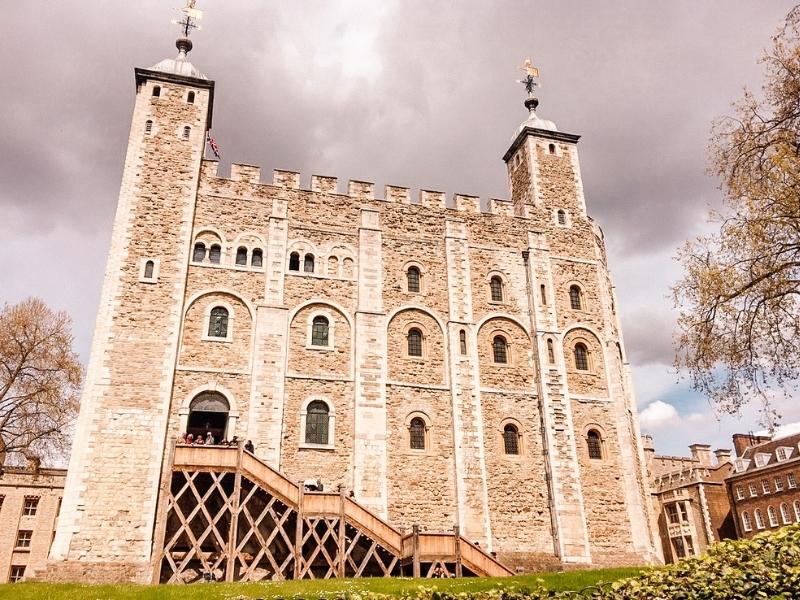
Tower of London – Tickets & Tours Quick Picks
Why visiting the tower of london is a must-do, what are the tower of london opening times, what is the cost to visit the tower of london, is it worth booking a tour of the tower of london, how do i get to the tower of london, when is the best time to visit the tower of london, how accessible is the tower of london, what about other places to visit near the tower of london, purchase online via the official tower of london site, purchase a ticket through get your guide, buy inclusive tower of london tour tickets, visit as part of a multi-venue tour , buy your ticket as part of a multi ticket option, how will you visit the tower of london , london travel guide & itinerary planner (+ 4 bonus ebooks).

Whether as part of a group or on a more independent basis, taking a London Tower tour is a must for just about anyone visiting the capital of England.
The Tower of London history is a rich, varied and very royal one. Visitors to the Tower can see the crown jewels in all their noble glory, as well as the uniformed guards who protect them.
You can also explore structures like the Bloody Tower, the Medieval Palace and the Norman style White Tower.
During your visit you can also explore the Fusilier Museum, enjoy a hands-on armoury experience, see the armour of past Kings and learn lots of Tower of London facts about the tower’s ravens and how the site was used in the past for torture, execution and imprisonment.
Admission to the Tower of London opens the door to a fun-filled day packed with fascinating historical insights. Everything about the place is so quintessentially British that it really would be a crime to miss it off your list.
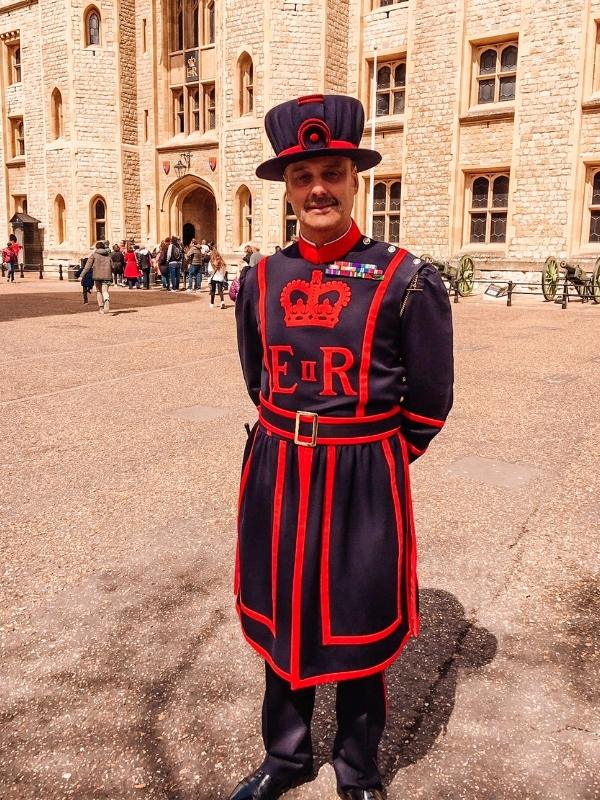
Visiting the Tower of London FAQs
So what are the Tower of London visiting hours – when can you go? Times actually vary according to the season, so it’s best to check the latest details here .
At the time of writing, the cost of visiting the Tower of London varies according to when you go, your age and if you’re eligible for any concessions.
You can buy two types of family ticket to the Tower of London, and kids under five go free.
Booking the best Tower of London tours allows you to make the most of your day there, so you can spend your time wisely and learn from knowledgeable and enthusiastic history experts.
A guided tour of the Tower of London costs extra, but this can be from just a few more pounds if you opt for an audio tour .
Those wondering how to go to the Tower of London have several options, including the London Underground , mainline train and river or uber boat.
The closest tube station is Tower Hill on the Circle and District lines. It’s also possible to walk from London Bridge station in 10-15 minutes, Liverpool Street in 20 or Charing Cross in 25.
Transport for London’s journey planner can be accessed here .
Entry to the Tower of London can be quicker and easier during weekdays. Whichever day you go, arrive during the early morning if you can.
The crowds will generally get smaller after about 3 pm on weekdays, but as the Tower sometimes closes as early as 4.30 pm this would leave you with very little time to see all the sights.
Historic Royal Palaces, who operate Tower of London tickets and entry, are committed to accessibility.
The Tower is, however, a historic building containing features like steep staircases, narrow passageways, low doorways and cobblestones. This does limit wheelchair access.
Outdoor areas are open, and all registered disabled persons may bring a carer free of charge. Proof will be required to obtain this complimentary ticket.
The most obvious place to see nearby is Tower Bridge. If you can, the walk from here to visit London Bridge is worthwhile – plus it’s free and you can get some fresh air by the river.
There are some interesting sights to look out for along the way, such as the Shard, the city skyscrapers, Butler’s Wharf, HMS Belfast and St Katharine Docks.
Other London attractions that aren’t too far from the Tower include Borough Market and the Golden Hinde galleon, both of which are near London Bridge station. You could also cross the river to wander around the Tate Modern or to see Shakespeare’s Globe theatre.
Or head west instead of east from Tower Bridge, looking out for iconic landmarks like the OXO tower, Westminster and the London Eye as you stroll along the riverbank.
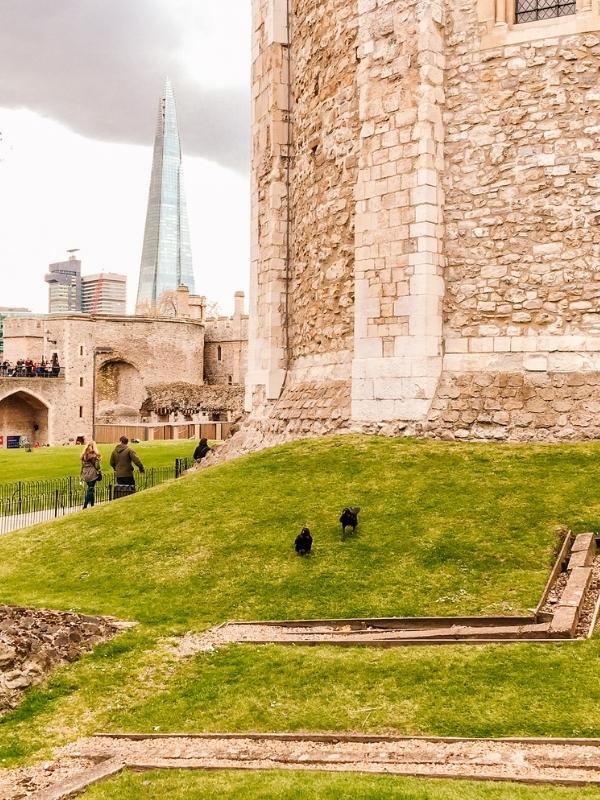
How to visit the Tower of London – Best Tours and Tickets for the Tower of London
There are various options open to you when it comes to purchasing Tower of London tickets, and each has its plus points.
Factors to bear in mind include what is included, such as free cancellation, skipping the queue or a guided tour. Also how is the ticket delivered – will it be available as a download on your smartphone or printed on paper?
These are the main options when you want to buy Tower of London tickets.
You can of course buy tickets from the official Tower of London website.
You can book your tickets and see what there is to do while you’re there all in one place.
Tickets purchased via the site can only be amended or cancelled six weeks in advance.
At the time of writing, standard adult ticket prices cost from £28.90 when booked directly.
You can buy tickets via Historic Royal Palaces here .
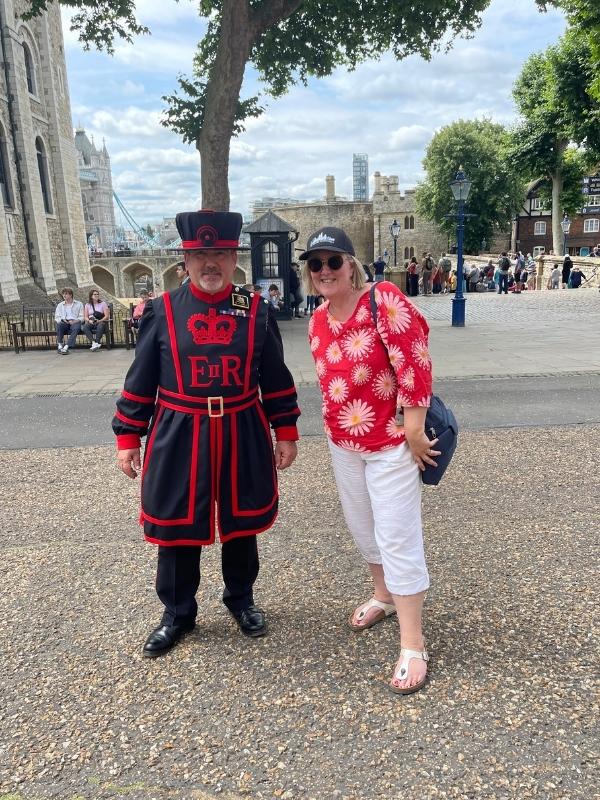
Cancellations and amendments are permitted up to 24 hours in advance for a full refund, and you also get to skip the queue when buying via Get Your Guide.
You may also need to visit the official Tower of London site for further information.
Standard adult ticket prices also cost from £28.90 when booked via Get Your Guide – but unlike tickets purchased from the official site, these can be cancelled up to a day before if required.
Due to the flexibility of this ticket – and the fact that you won’t need to wait in line – we recommend buying them, at no extra cost, from Get Your Guide here .
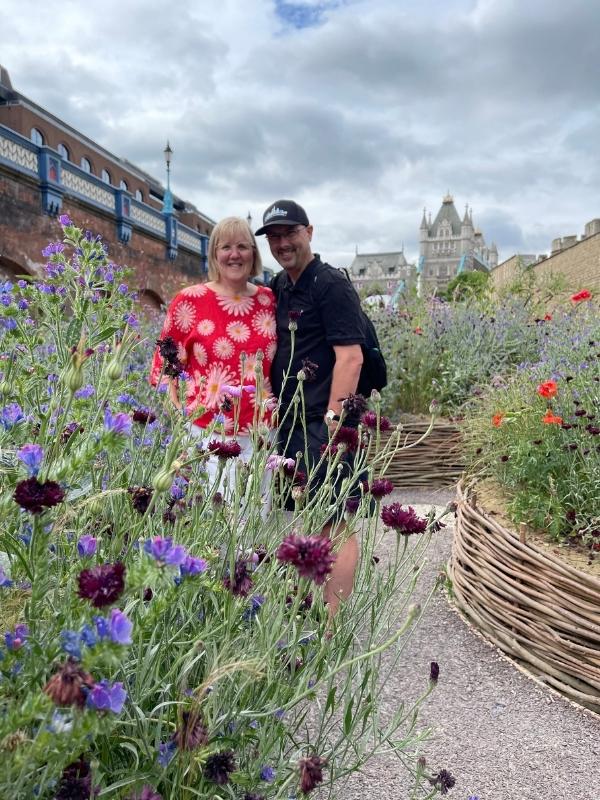
Guided tours include extras as well as expert guidance. You can witness the opening ceremony, tour the Tower with a Beefeater, take a two-hour private tour or gain exclusive early entry to the Crown Jewels.
These options do cost more than a stand-alone entry ticket.
The cost varies according to the option selected: click the links below for more info.
- Buy the Tower of London small group Beefeater tour here
- Buy the Tower of London opening ceremony and early access tour here
- Buy the Tower of London two-hour private guided tour here
- Buy the Tower of London opening ceremony, early access and guided tour here ( read our review of this tour )
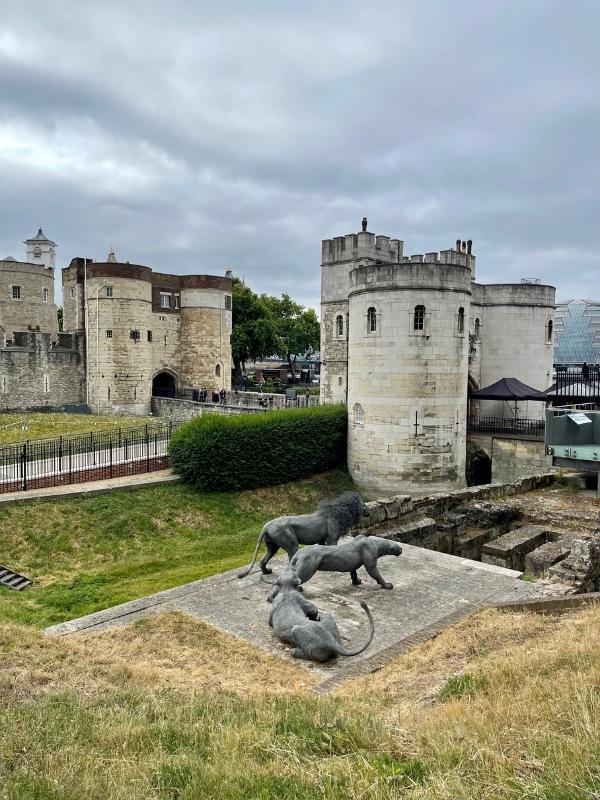
Multi-venue tours are ideal for those with limited time in London, as you can pack more into a day than you otherwise would. These packages can also be good value for money.
One day tour even includes visits to Westminster Abbey, St Paul’s Cathedral and Buckingham Palace as well as the Tower of London, and even includes a cruise on the Thames.
You’ll have less time to spend at the Tower of London.
Each tour is priced differently. To find out more, you can click the links below.
>Buy the Tower of London and Tower Bridge tour here
>Buy the Tower of London and Westminster walking tour here
>Buy the Tower of London, Changing of the Guard and Westminster tour here
>Buy the Tower of London full day London sightseeing tour with river cruise here

You can also buy London Tower admission as part of a multi-ticket such as the London Pass or the Go City London Pass.
This is delivered as a smartphone app , and can save money compared to buying separate tickets. You have 60 days to use it and can pick where to visit as you go.
You’ll have to buy at least 2 credits, and it may end up costing you more if you don’t use them all.
Prices start at £34 for an adult 2 choice pass, and go up to £118 for a 7 credit pass.
Find out more about the London pass in our complete review here or the Go City London Explorer here .
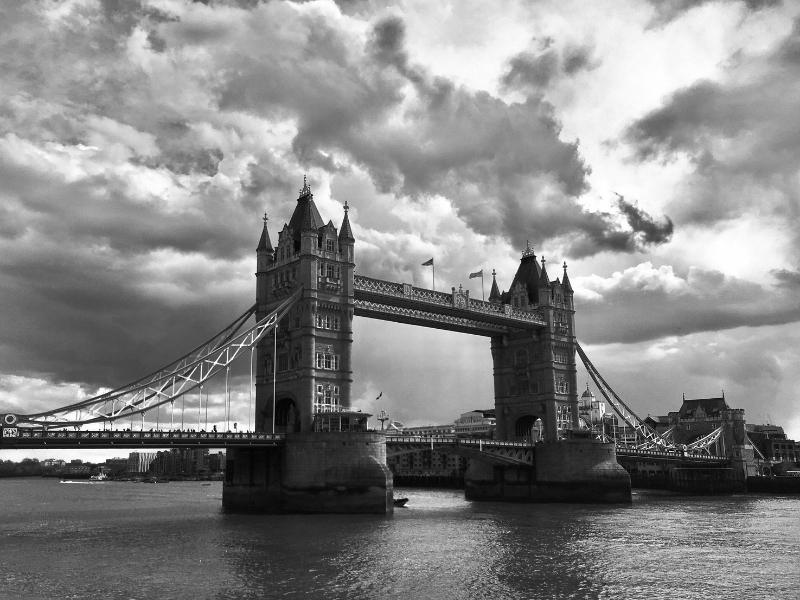
We hope these visiting the Tower of London tips, tricks and ticket options have helped you plan your trip.
The Tower of London is one of those UK sights that you really cannot miss, and for most people, the memories will last a lifetime. Happy travels!
Related reading
- How to purchase London attraction tickets
- Guide to the best London bus tours
- Best day trips and tours from London
- 22 London landmarks to add to your itinerary
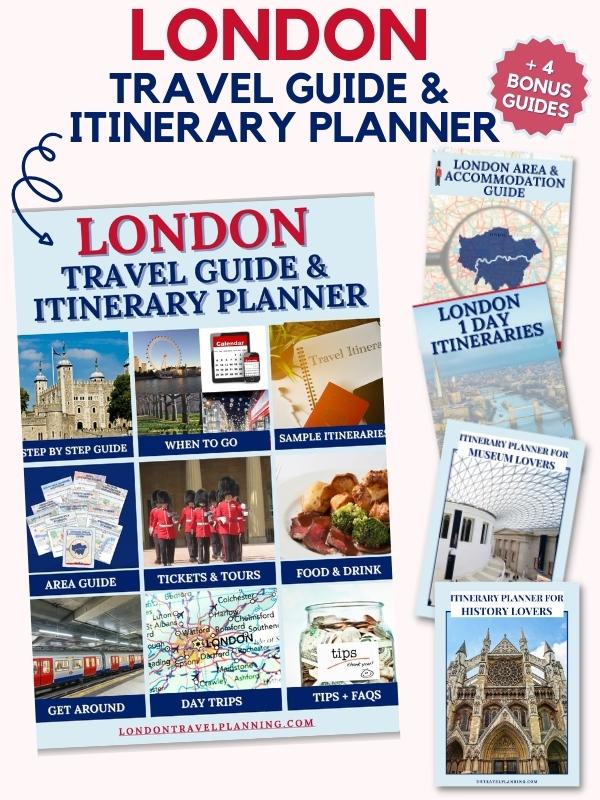
- London Attractions
- London Tours
- Tower of London
- Crown Jewels
- White Tower
- Beefeater Tour
- Fusilier Museum
- Visitor Facilities
- Plan Your Visit
- Guided Tours
- Restaurants
- Nearby Attractions
- London Theatre Tickets
- Harry Potter London Tours
- Heathrow Airport transfers
- Madame Tussauds London
- SEA LIFE London Aquarium
- Up At The O2 Climb
- Buckingham Palace
- London To Stonehenge Tours
- St. Paul's Cathedral
- London To Windsor Castle Tours
- Tower Bridge
- National Express London
- Westminster Abbey
- Kew Gardens
- Hampton Court Palace
- Downton Abbey
- Frameless London
- Hop-On Hop-Off Tours
- Sightseeing Cruises
- Dinner Cruises
- Lunch Cruises
- Travel Guide
- Things to do
- Trip Planner
- Where to Eat
- Festivals and Events
- Travel Tips
Plan Your Visit to Tower of London | A Complete Guide
Visiting the tower of london in london.
The Tower of London is a historic and fascinating castle in London, founded in the 11th century. It is a UNESCO World Heritage Site and one of London’s popular attractions.
Tower of London | Visitor Information At A Glance

What are the Tower of London's opening hours?
The Tower of London’s opening hours vary according to the month. It is generally open from 10 AM to 5:30 PM daily.
Where is the Tower of London located?
The Tower of London is located at London EC3N 4AB, United Kingdom. Get Directions
How many entrances does the Tower of London have?
The Tower of London has two entrances: the West Gate Entrance and the Middle Drawbridge Entrance.
How many visitors does the Tower of London see per year?
The Tower of London attracts over three million visitors yearly.
What Are The Tower of London's Opening Hours?
Below are the opening hours to visit the Tower of London:
17 April to 26 May
- 10 AM to 5:30 PM (Mondays and Sundays)
- 9 AM to 5:30 PM (Tuesday to Saturday)
27 May to 4 June: 9 AM to 5:30 PM
5 June to 21 July
22 July to 1 September: 9 AM to 5:30 PM (Daily)
2 September to 20 October: 9 AM to 5:30 PM (Daily)
21 to 31 October: 9 AM to 5:30 PM (Daily)
What's The Best Time to Visit the Tower of London?
The Tower of London is a popular attraction in the English capital. It guarded royal possessions and families for centuries and emerged as a luxurious place with time. The Tower of London also served various functions, like a prison and a place for execution in the past, making it even more famous among tourists.
While you can visit the Tower of London throughout the year, September to October is a good time for visiting. The weather is mild and less taxing, and the rush is less. You can explore the Tower of London peacefully without affecting your health.
Coming to the best time to visit the Tower of London, try visiting early in the morning on weekdays. Fewer tourists are around in the morning, allowing you to enter the Tower quickly and explore its various sections. Weekends are not recommended because tourists arrive in London from nearby cities, making it crowded.
Where is the Tower of London Located?
Address: London EC3N 4AB, UK | Find On Map
The Tower of London lies on the north bank of the River Thames. It is on the western end of the Tower Hamlets borough and borders Central London.
Closest Landmark: Roman Wall (0.3 miles)
Getting to the Tower of London

Nearest Station: Tower Hill Underground Station
The Tube can help you move around Greater London and adjacent home counties like Buckinghamshire, Essex, and Hertfordshire. The Tower Hill Underground Station is closest and served by the District and Circle lines. Monument, Bank, Aldgate, and Aldgate East London Underground stations are nearby.

Nearest Station: London Bridge Station
The local railway system can help you reach various parts of London. The London Bridge or Fenchurch Street stations are closest. They're both within 10-15 minutes from the Tower of London. Alternatively, you can alight at Liverpool Street or London Charing Cross station.

Buses covering routes 15, 42, 78, 100, 343, and RV1 stop near the Tower of London. Sightseeing bus tours also pass by the attraction and are a popular option for exploring London.

By Riverboat
Nearest Stop: Tower Millennium Pier (0.1 miles)
River boats from Westminster, London Eye, and other piers reach the Tower of London. It is a unique way to travel, giving you views of London from the water. Tower Pier is the closest stop near the Tower of London.

You can drive to the Tower of London if you have time. Beginning from Kings Cross Station, take Pentonville Rd, A1 and Cannon St to Eastcheap in the City of London. Continue on Eastcheap to Byward St/A100 before turning left onto Byward St/A100. You can park at the Tower Hill Coach and Car Park , which is two minutes from the Tower of London.
How To Skip the Line at the Tower of London?
Over three million visitors are attracted to the Tower of London. It is busy throughout the year, but you can skip the line tickets in several ways.

Arrive Early
The Tower of London is usually open from 10 AM to 5:30 PM. You can visit early in the morning to avoid long queues. Fewer people visit the attraction in the morning, making it the best time to visit the Tower of London. You can quickly enter the attraction due to fewer queues and explore it at your convenience.

Book a Guided Tour
Guided tours are an excellent way to visit the Tower of London. Guided tours provide skip-the-line access to the Tower of London, meaning you can enter the attraction without standing in queues. Guided tours also provide insight into various facets of the Tower of London, including its history and importance to the United Kingdom.

Choose Weekdays
You can visit the Tower of London whenever you want to, but weekdays are better. Fewer locals and tourists visit the attraction on weekdays, making it the best time to visit the Tower of London during the week.
Accessibility Measures at the Tower of London
Hearing Impairments
- Induction loops are available throughout the Tower of London in the ticket boxes and welcome center.
- A British Sign Language digital visitor guide is available for guiding visitors with hearing issues on fascinating stories about the Tower of London. It is free of charge.
Hidden Disabilities
- Visitors with hidden disabilities must collect a wristband from the ticket office or entrance.
- The staff can recognise the band and provide extra care and support.
Physical Disability
- Visitors with mobility issues can request a wheelchair free of charge. There’s no need to pre-book, although they are issued on a first-come first-served basis.
- A lift is available in the White Tower to take visitors to and from the basement. However, only one wheelchair user is allowed in the basement at a time.
- Ramps are available at the New Armouries café and near the Raven shop.
Visitor Rules & Tips
- Footwear: Your footwear is extremely important when visiting the Tower of London. It has many uneven surfaces, like cobbles and worn steps. Wear the right footwear for a pleasant experience.
- Weather: Avoid visiting when London experiences heavy rains. Some surfaces of the Tower of London might become too slippery, making it dangerous to walk.
- Steps: The light intensity is low at certain places. Hence, ensure you’re careful, especially when using stairs.
- Children: Kids are welcome inside the Tower of London. However, they must be accompanied by adults. Some areas have steep slopes and drops from heights.
- Follow the advice: The Tower of London’s staff is available to make your experiences pleasant. Seek their advice if you need help with anything and follow their safety signs.
- Book online: Ensure you book your Tower of London tickets online. You’ll get discounts and deals.
Frequently Asked Questions: Visiting The Tower of London in London
The Tower of London's opening hours vary basis the month. However, it is generally open from 10 AM to 5:30 PM.
Weekdays and early mornings are the best time to visit the Tower of London.
Yes. You can enter anytime during the operating hours.
2-3 hours is enough to explore Buckingham Palace at length.
You’ll need 2-3 hours to explore the Tower of London.
Check with the staff to know if you can enter the Tower of London after exiting.
No. You cannot enter the Tower of London for free.
The Tower of London is located at London EC3N 4AB, United Kingdom..
The Tube is the best way to reach the Tower of London.
There are two entrances to the Tower of London.
No. There is no dress code to follow at the Tower of London.
No. Luggage isn’t allowed inside the Tower of London.

Tower of London Opening Hours

Tower of London Location

About Tower of London
- Visit 100 Countries
- Visit 500 UNESCO Sites
- Landmarks of the World

Construction began on the Tower of London in 1066 by William the Conqueror as a means to keep hostile Londoners at bay, and since then it has seen the good, the bad, and the ugly of London.
Over the past 1000 years it has been a prison, with its most famous inmates including two young princes (who were presumably murdered), Anne Boleyn (who was then beheaded on Tower Green), Lady Jane Grey (only queen for nine days and then she too was executed), Princess Elizabeth (who thankfully survived and went on to become Queen Elizabeth I), and Guy Fawkes who was tortured at the Tower following the failed Gunpowder Plot.
Want to save this for later? Click the Pinterest button on the left for a pinnable image!
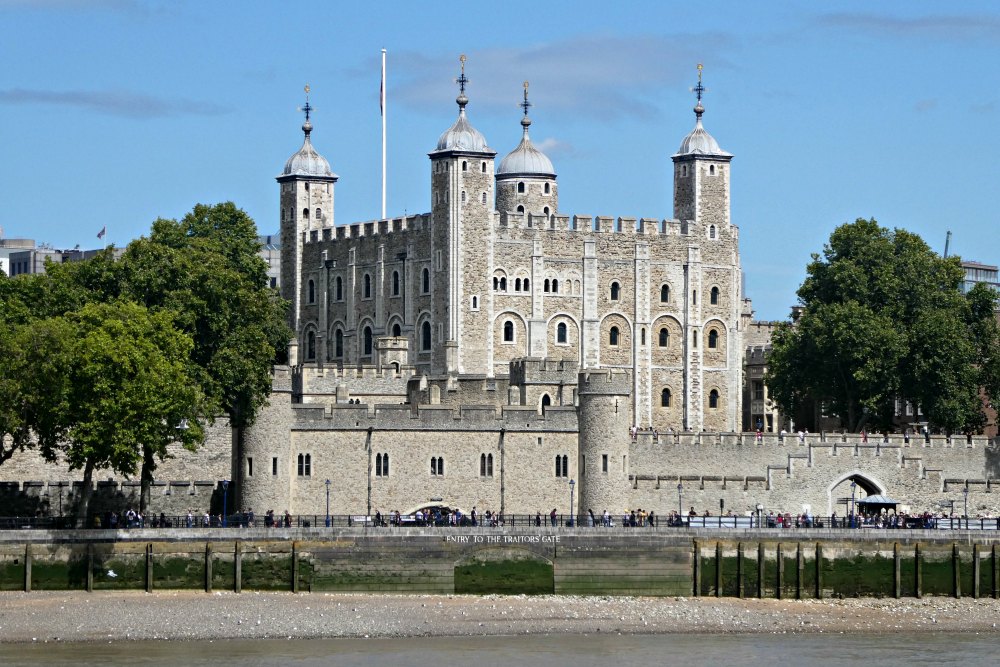
In addition to prison, the Tower of London has also been a palace, held a royal menagerie ( including a polar bear that was said to like to fish in the Thames! ), a munitions store during the Civil War (1642-49), and a recruitment and training site for troops during WWI.
HIGHLIGHTS OF THE TOWER OF LONDON
With stories from over 1000 years of history, you can imagine there would be a lot to see at the Tower. And there is! Here are some of the highlights to get you started when planning your trip to the Tower of London.
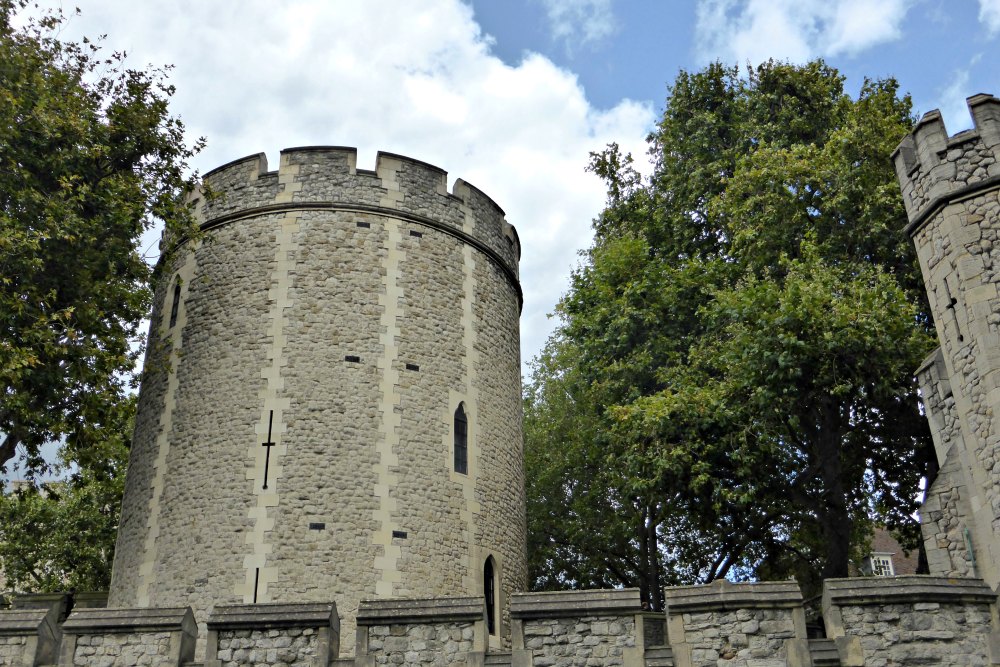
YEOMAN WARDER TOURS
To really understand the Tower and its history, we think a guided tour with one of the Yeoman Warders is a must-do. Sometimes called “Beefeaters” (due to the large rations of beef given to them in the past), they have been a part of the Tower’s history since 1485 and today their official role is to guard the Tower and the Crown Jewels.
To qualify for this role they must have served at least 22 years in the Armed Forces and have earned a Long Service and Good Conduct Medal. Once they have earned the role, they also earn a place to live within the Tower’s outer walls! Few people likely realise the Tower of London is like a miniature village and may be surprised to see the Yeoman Warder’s washing hanging out on the line beside the castle walls.
The Yeoman Warders lead daily hour-long tours which are included in the admission price. The tours leave from just inside the portcullis in the Middle Tower every 30 minutes. The tours are entertaining with lots of tales of beheadings and torture, but also they are informative so you will learn about the history of the Tower.
If you’d rather proceed at your own pace, you can also pick up an audio-guide for £4.00 (though try to get one early as they can run out during peak season), or there are official guidebooks for sale (£4.99) to read about the Tower and its history.
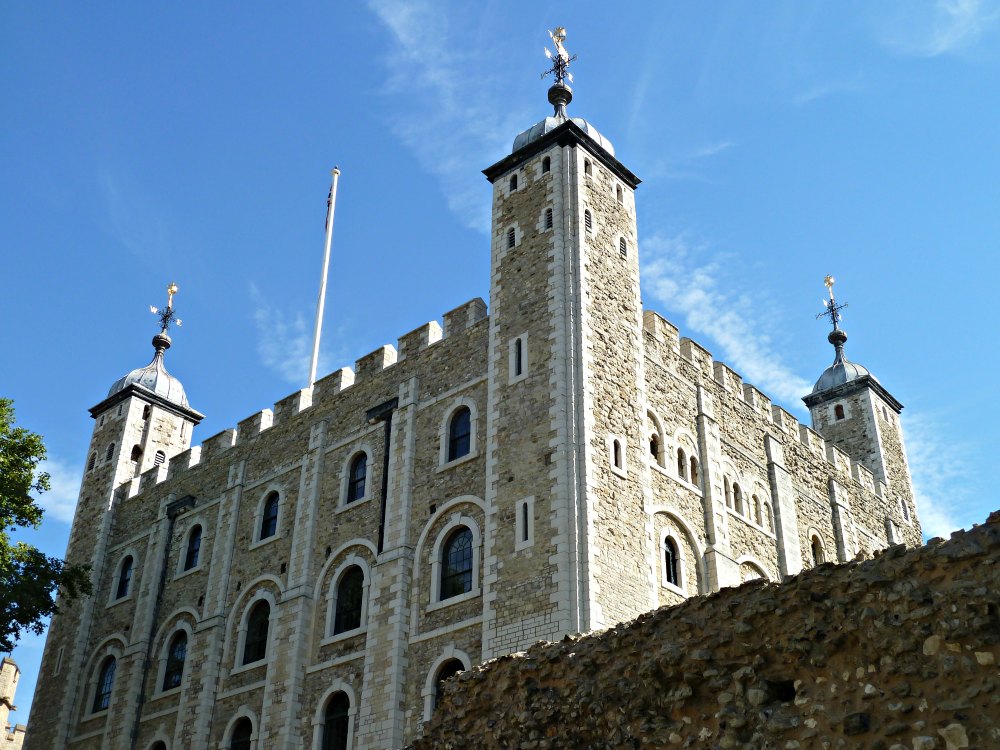
THE WHITE TOWER
The most recognizable building in the complex, the White Tower is a Norman tower with a turret on each of its four corners and a golden weather vane that spins atop each turret. It is the original royal palace of the Tower of London, but it hasn’t been used as a royal residence since 1603.
The White Tower includes a few remnants of its Norman architecture, including a fireplace and a garderobe (toilet), but mainly the interior is now a museum. The exhibits from the Royal Armouries include a collection of cannons, guns, medieval weapons, and suits of armour – including a suit of armour that once belonged to Henry VIII.
The original moat was drained of disease-ridden sewage in the 19 th century because of the persistent cholera outbreaks; today there is a dry moat in its place that is used for different events.
PLEASE NOTE : There are about 100 stairs to climb to tour the White Tower, some of which are quite steep and uneven.
CROWN JEWELS TREASURY
Visitors may think the Crown Jewels are the Queen’s personal collection, but they are actually the ceremonial regalia used during Coronation ceremonies. The collection also includes items other than jewellery, such as candlesticks, trumpets, swords, and the Grand Punch Bowl (which is the mother of all punch bowls!).
A very slow-moving travellator takes you past the exhibits including the Sceptre and the Imperial State Crown, which contains a famous diamond known as the Star of Africa. The Crown Jewels aren’t actually insured, because they could never be replaced.
TIP : Due to limited capacity and popularity, there is very frequently a line to enter the building to see the Crown Jewels. If you arrive early, check here first to see if there is a line and if not, grab your opportunity to get in with minimal wait time. Many people start with the Yeoman Warder tour since it is near the entrance, but you can easily come back to the entrance and join another tour later on your visit.
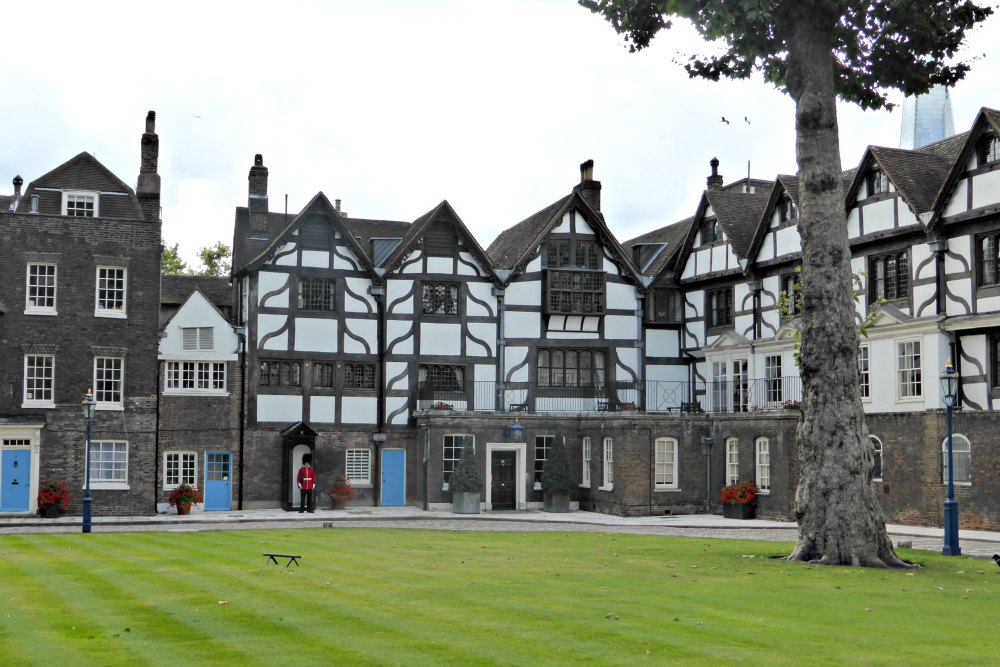
TOWER GREEN AND THE RAVENS
Along the green, you can see a collection of black-and-white half-timbered Tudor houses (some with Yeoman Warders standing guard outside) that are home to the Tower of London staff.
The green is also where you will find the Scaffold Site, with a circular glass memorial, where seven people, including two of Henry VIII’s wives (Anne Boleyn and Catherine Howard), were executed by beheading in Tudor times. Most executions actually took place outside the Tower on Tower Hill and were attended by thousands of spectators, but to spare the monarch embarrassment these queens were beheaded behind the tower walls. Perhaps to save himself embarrassment Henry VIII shouldn’t have ordered their execution!
On the green, you’ll also see the famous ravens. They are believed to have first arrived at the Tower in the 1200s to feast on dripping corpses of the executed who had been taken from Tower Hill and hung outside the battlements as a warning. Legend states that if the resident ravens ever leave the Tower the monarchy would fall, so a royal decree states that there must be at least six ravens at the Tower at any time (with their wings clipped to ensure they don’t leave).
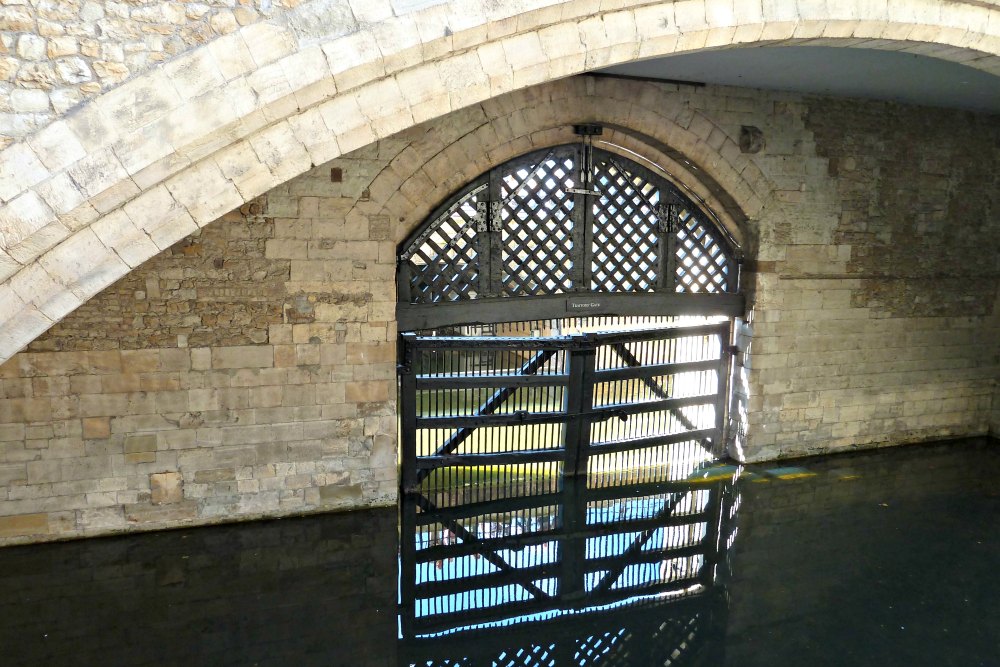
BLOODY TOWER AND TRAITOR’S GATE
Just past the Bell Tower along the Water Lane between the walls, you’ll find the famous Traitor’s Gate. This is the gate where prisoners being brought by the River Thames entered the Tower.
Just a little further along inside the walls you’ll find the Bloody Tower. This tower got its nickname from the story about the “princes in the tower” (Edward V and his younger brother) who were murdered, likely by their uncle Richard III, to annul their claims to the throne. Sir Walter Raleigh, the Elizabethan adventurer, and Elizabeth I were also both imprisoned in this tower in the 1600s.
CEREMONY OF THE KEYS
There are three ceremonies that take place at the Tower each day.
The first is the Official Opening at 9:00 am, followed by the Ceremony of the Word which is when the day’s password is issued.
The last ceremony of the day is at 10:00 pm where visitors are welcome to attend the Ceremony of the Keys. This is when the gates are locked and the castle is closed to all but those who live within its walls. It is free to attend, but reservations must be done in advance (usually many months in advance).
HELPFUL LINK:
- Click here to make your reservation for the Ceremony of the Keys.
PLAN YOUR VISIT TO THE TOWER OF LONDON
Information last updated September 2019

HOW TO GET THERE
The address for the Tower of London is: Tower of London, London, EC3N 4AB
The closest tube station is Tower Hill (District and Circle Lines) which is about a 5-minute walk away. Other nearby options are Fenchurch Street (National Rail) and Tower Gateway (DLR line).
Buses on routes 15, 42, 78, 199, and RV1 all stop near the Tower of London.
The Tower of London is also on many of the Hop-On/Hop-Off bus tour routes including the Yellow Route with the Original Tour (which we personally recommend).
There is no on-site parking and parking in the general area is limited as the Tower is in the Congestion Charge Zone . The nearest public parking is at Tower Hill Coach and Car Park at 50 Lower Thames Street, London, EC3R 6DT which is less than a 5-minute walk to the Tower and is fully accessible.
You can also travel to the Tower by boat! Tower Pier, right next to the Tower of London, is served by riverboats travelling from Westminster and North Greenwich Pier. This offers great views of the Tower from the water, which may even allow you to see Traitor’s Gate, depending on the direction you’re coming from.
Options for travelling by boat include the River Bus (run by Transport for London) which work on the same payment system as the tube or City Cruises . We’ve used both services on multiple occasions and like that they offer a different view of the city and a neat way to get between places.
HELPFUL LINKS:
- If you need an app that will navigate you around whether walking, driving or using public transport and even works offline then click for a guide about how to use Here WeGo .
- The Tube Map London Underground App (Android) is very useful for getting around London. It’s free, has a route planner, and works offline.
- Transport for London website’s “ Plan Your Journey” tool will give you results for trip time on the Tube, bus, or walking. Note the walking time as sometimes it is the quickest, easiest, option!
OPENING HOURS
Summer Hours : Opening hours are Tuesday-Saturday 09:00-17:30 and Sunday-Monday 10:00-17:30 from March 1st -October 31st. Last admission is 30 minutes before closing time (17:00).
Winter Hours : Opening hours are Tuesday-Saturday 09:00-16:30 and Sunday-Monday 10:00-16:30 from November 1st through February 28th. Last admission is 30 minutes before closing time (16:00).
The Tower is closed on December 24-26th and January 1st.
Leave yourself about 3-4 hours for a visit. The Yeoman Warder tour takes about 1 hour and then you will still have a few hours to explore on your own.
TIP : During peak days (in the summer) it can be quieter after 3:00 pm when big groups have left for the day. During the winter it is far less crowded so you can visit any time of the day.
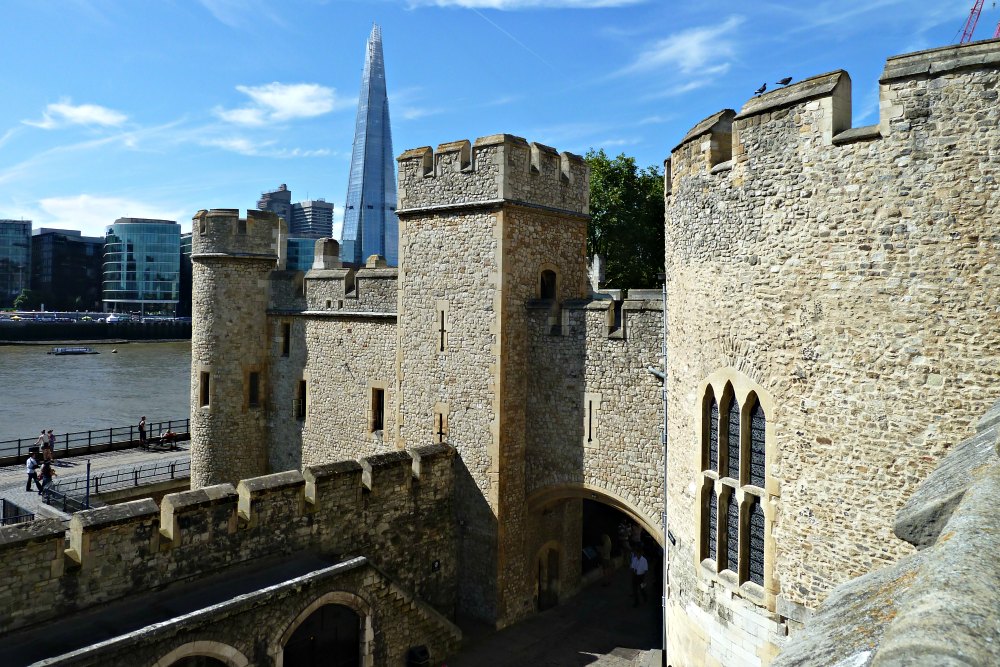
HOW TO BUY TICKETS & SAVE MONEY ON ADMISSION
Admission prices for tickets purchased at the Ticket Office on-site are £27.50 adults (age 18-64), £13.10 children (age 5-15), £21.50 for students, disabled visitors and adults over 65 years. Children under 5 are free.
Your admission ticket gives you entry to the Crown Jewels, all public areas of the Tower of London (including the White Tower, Bloody Tower, and battlements), the Yeoman Warder tours, and children’s activities and trails.
Audio guides are priced from £4.00 and guidebooks are priced from £4.99.
If you purchase your tickets online you will save 10% and prices are as follows:
£24.70 adults (age 18-64), £11.70 children (age 5-15), £19.30 for students, disabled visitors and adults over 65 years. Children under 5 are free.
If you purchase your tickets online, you must present a physical ticket at the gate, as the ticket scanners can’t scan mobile phones. You can either print your tickets at home (which allows you to go straight to the entrance gate) or you can collect your tickets from the group ticket office where a member of staff will print your tickets for you.
They also offer “Family Saver” rates (both online and if purchase on-site) which can provide savings to families. For 1 adult and up to 3 children (age 5-15), the rate is £49.40 (on-site price) or £44.90 (online price). For 2 adults and up to 3 children (age 5-15), the rate is £69.90 (on-site price) or £62.90 (online price).
If you are travelling by train on the National Rail you may also be eligible for great savings with the 2 for 1 London offer by Days Out Guide . It’s not available all the time but is well worth a quick look on their website to see if it’s available for when you’d like to visit. The Tower of London is also included with the London Pass as another money-saving option.
ACCESSIBILITY
Because the Tower of London is a historic building with steep stairs, narrow passageways and low doorways, access may be difficult in some areas for those with limited mobility.
Please find their complete Access Guide here which includes detailed information for visitors.
IS THE TOWER OF LONDON WORTH THE VISIT?
The Tower of London is quietly likely my favourite attraction in all of London. It’s hard to believe I missed visiting it on my very first visit to the city, but I’ve more than made up for it since and it’s the one attraction I recommend to all friends, family, colleagues – everyone actually- to visit on their first visit to London.
Certainly it is one of the more expensive attractions in London but I believe it is worth the visit because of how much there is to see and do for anyone that is interested in history, the monarchy, or warfare. It’s also a great attraction to bring kids as they have put together Activity Trails and Digital Missions to help bring the Tower alive for young visitors.
It’s also one of the busiest attractions in London, but the highlights outweigh the inconvenience of the queues. Once past the entrance line, you may end up queuing for the Crown Jewels, but otherwise, you can explore the site at your leisure. You’ll even find some places along the walls, or the lesser-known exhibits, to be quite quiet.
See what others think of this attraction on Trip Advisor .
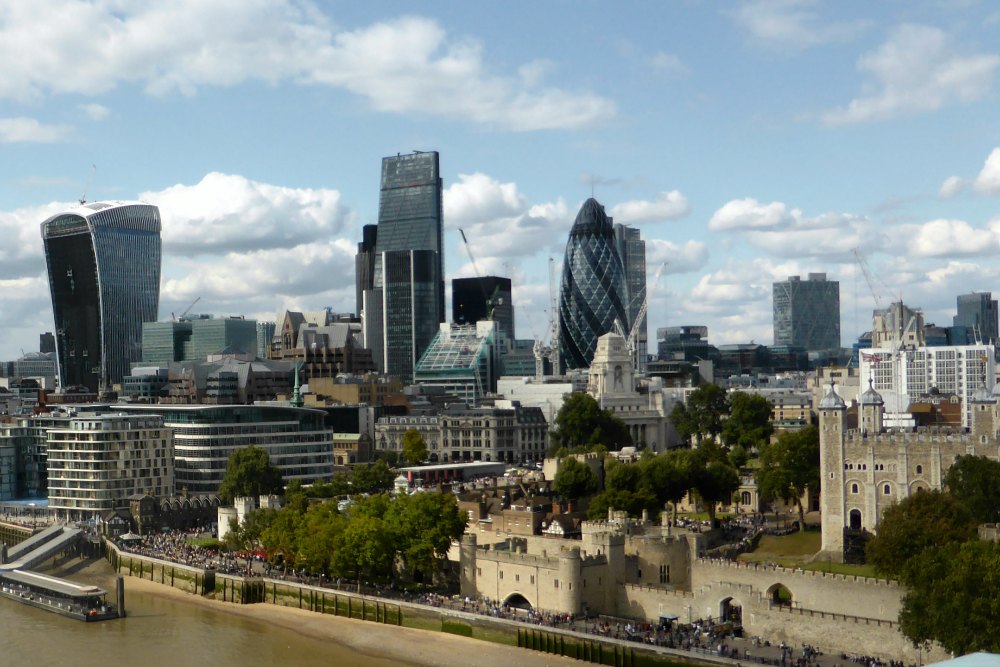
ADD TO YOUR ITINERARY
“When a man is tired of London, he is tired of life” said Samuel Johnson, so it’s no surprise that there are a plethora of things to do in the UK’s capital city. Here are a few choice selections to whet your appetite.
IN THE AREA
- Nearby Tower Bridge offers wonderful views of the city, including straight down to the road and river below through the glass floor!
- Take a double-decker bus from the Tower Hill stop to the Monument stop ( line 15 ) on one of the old Routemaster buses . These are becoming quite rare so take your ride on one while they are still available.
- See a portion of the old Roman Wall , that once enclosed the city, at the Tower Hill tube stop.
- Visit the All Hallows-by-the-Tower church next door to the Tower which is the parish where the famous diarist, Samuel Pepys, recorded his observations of the Great Fire of London in 1666. The current church was rebuilt after WWII but a church has stood on this site since AD675.
- While in a “medieval torture” mood, you can grab a bite to eat at the very aptly named pub called the “ Hung, Drawn, and Quartered ” that is just around the corner on Great Tower Street.
OTHER UNESCO WORLD HERITAGE SITES IN LONDON
If you like to explore UNESCO World Heritage sites around the world, we think you’ll also like:
- Visit the final resting place of kings, queens, writers, and scientists at Westminster Abbey , and then enjoy the neo-Gothic architecture of the Palace of Westminster while learning all about the parliamentary system of government.
- Stand in two hemispheres at once on the Prime Meridian in the Meridian Courtyard, do a little star gazing in the Royal Observatory , learn about tales of exploration and endeavour at the National Maritime Museum , and take in a unique view of London from the hillside park. All this, and even more, is waiting to be discovered at Maritime Greenwich .
- Wander through countless species of trees and flowers at the Arboretum, view 800 paintings from 19th-century artists in the Marianne North Gallery, tour the Royal Kew Palace , and visit a Japanese Garden at the Royal Botanic Kew Gardens .
RESOURCES | PLAN YOUR TRIP TO LONDON
To book flights, rental cars, accommodations, and activities for your trip, please check out our recommended travel providers, favourite apps and websites.
These are a few tours that include the Tower of London that we would recommend for your trip to London.
Some of the links in the post above are affiliate links. This means if you click on the link and purchase the item, we will receive an affiliate commission but this does not affect the price to you. Please read our full disclosure policy here .

RELATED POSTS
Guide to visiting london’s hms belfast, exploring london in one day ultimate itinerary, guide to visiting the london transport museum, london itinerary: a royal day out, 8 great unesco sites to visit from london.
- London Tourism
- London Hotels
- London Bed and Breakfast
- London Vacation Rentals
- Flights to London
- London Restaurants
- Things to Do in London
- London Travel Forum
- London Photos
- All London Hotels
- London Hotel Deals
- Last Minute Hotels in London
- Things to Do
- Restaurants
- Vacation Rentals
- Travel Stories
- Rental Cars
- Add a Place
- Travel Forum
- Travelers' Choice
- Help Center
Best day/time to visit Tower of London - London Forum
- Europe
- United Kingdom (UK)
- England
- London
Best day/time to visit Tower of London
- United States Forums
- Europe Forums
- Canada Forums
- Asia Forums
- Central America Forums
- Africa Forums
- Caribbean Forums
- Mexico Forums
- South Pacific Forums
- South America Forums
- Middle East Forums
- Honeymoons and Romance
- Business Travel
- Train Travel
- Traveling With Disabilities
- Tripadvisor Support
- Solo Travel
- Bargain Travel
- Timeshares / Vacation Rentals
- England forums
- London forum

Tripadvisor staff removed this post because it did not meet Tripadvisor's forum posting guidelines with prohibiting self-promotional advertising or solicitation.

We went mid-week in the third week of July. Arrived at the ticket booth at 10 am. No lines or crowds when we arrived, but they did build. We went directly to the crown jewels first (others around us clearly hadn't done their research and were milling around the entrance with the map as we paced right past them) and had no waits and no crowds inside. We were even able to easily do a couple of loops around on the moving walkway to look at the crowns. By the time we got out of there, a line was forming. The White Tower is a magnet and draws people and was fairly full, but there's several other very interesting exhibits around the place and you do have to hunt them out a little, but it was worth it. The one's that were the most out of the way were also the quietest. As these are free tickets, I would think you can probably just see what you want to see quickly and then escape as the crowds pick up...although to be honest, we had lunch in the cafe there and so we were there right in the middle of the day and I don't recall it ever feeling really crowded. Busy, sure, but not so busy that we couldn't see the exhibits or had to wait for anything, except maybe a bathroom stall.
This topic has been closed to new posts due to inactivity.
- Seeking hotel recommendations for London, Picadilly/District 7:41 am
- 3-day itinerary check 7:40 am
- One day to see Churchill War Room and Thames River Cruise 7:40 am
- Time needed for National Gallery, V&A and British Museum 7:29 am
- Where to buy a Visitors oyster card on arrival? 7:13 am
- A few hours to kill Gatwick Airport 6:49 am
- Layover in Gatwick - please help 6:45 am
- Itinerary review: timing and food questions (long) 6:12 am
- Verger-guided tour at Westminster Abbey 5:59 am
- Rideshare availability 5:37 am
- London 4 nights itinerary, please review and suggest 5:02 am
- Oyster Card 4:57 am
- Cafes and restaurants in museums 4:35 am
- Cities/Towns near London 4:23 am
- Best Area of London to Stay for 2 nights 15 replies
- How to get to Victoria Station from Heathrow? 10 replies
- The London Pass...worth it or scam? 10 replies
- Best hotel for Heathrow Terminal 3? 8 replies
- Hostel/Hotel Near Liverpool Street Station 4 replies
- outlet shops in London? 12 replies
- Heathrow to Kings Cross 7 replies
- London - factory / designer outlet malls 12 replies
- weather in december 5 replies
- Best Area to Stay in London 8 replies
London Hotels and Places to Stay
- What can I do in London on a budget?
- How to use Oyster Cards, Travelcards and 2-4-1 offers in London?
- What is open in London on Christmas Day
- The Championships, Wimbledon
- Harry Potter in London - FAQ

- Skip to main content
- Skip to primary sidebar
- Skip to footer

Top 11 Things to See at the Tower of London in 2024
Lillian Cespedes Gonzalez Last Updated: October 26, 2023
The Tower of London is a must-see attraction when you visit London, but do you know what to see there? This is a big building complex, and it’s easy to get overwhelmed by the masses of people, long history, and extensive layout. But don’t despair, we’re here to help! Here are the top things to see at the Tower of London written by a historian.
Pro Tip: Planning what to do on your trip to London? Bookmark this post in your browser so you can easily find it when you’re in the city. Check out our guide to London for more planning resources, our best Tower of London tours for a memorable trip, and the top things to do in London .
11 Things You Shouldn’t Miss at the Tower of London
The Tower of London is an iconic site of the city and a UNESCO heritage site. Moreover, the Tower has always been a symbol of the state, royal power, and military prowess. The tower was commissioned by King William the Conqueror commissioned in 1078 to serve as a castle and royal residence of the Kind of England.
Many kings after him incorporated their own additions. For example, there used to be a Royal Mint to produce the wealth of England, as well as a royal menagerie (a kind of zoo or animal collection). However, in Tudor times, the role of the tower changed. In the 15th century, it served as a fort to host the armories and prisons.
Most of the original constructions dating from the Middle Ages were destroyed or repurposed by the 19th century. However, in the 20th century, the Tower of London was renovated to turn it into a museum.
Not ready to book a tour? Check out our best Tower of London tours to take and why .
11. The White Tower
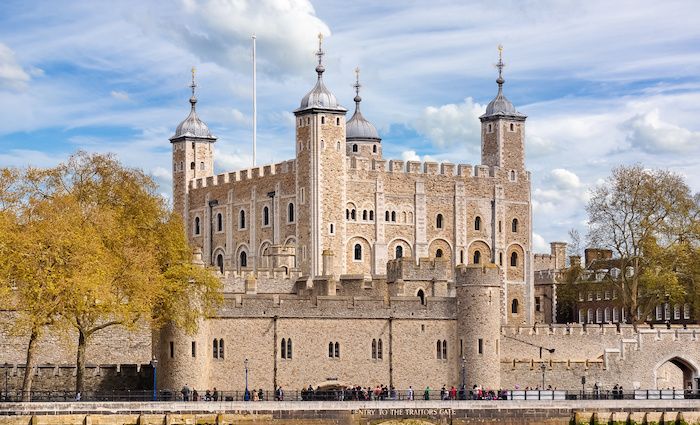
Fortress | William the Conqueror | Romanesque
This is all that remains of the medieval fortress commissioned by William the Conqueror. Furthermore, it is one of the largest remaining castle keeps in Europe. It received its name because the walls were covered in white plaster and whitewashed. It was built in the Romanesque style.
From the architectural plans and the layout of the building, historian Lise Hull states that it was not intended just to keep royal apartments. It was essentially the king’s house and office from which he could guard the river Thames and look out for any potential attacks. When you visit this building, don’t forget to stop at the crypt of St. John’s Chapel.
10. The Chapel of St. John the Evangelist
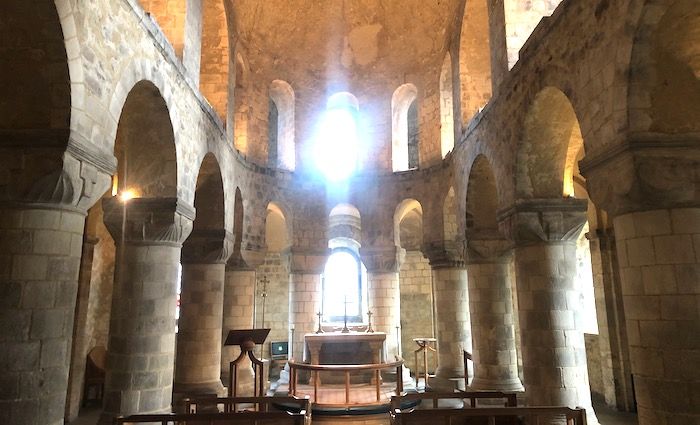
Norman Chapel | Henry III | Archive
The chapel dates from the 12th century and is one of the greatest examples in the UK of Norman religious architecture. It has been renovated a few times throughout history, though. According to Stephen Porter, Henry III ordered three new stained-glass windows for the chapel. He also commissioned it to be painted.
The historical record shows that this chapel was more often used as an archive of records than a place of worship. This was already documented by the 19th century. One of the earliest modern histories of the Tower of London written by William Ainsworth reinforces the fact that, despite the chapel holding records, these were not open to the public.
Popular London Tours
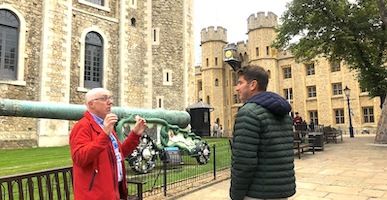
Best Selling Tour
Legends and Lore Tour of the Tower of London
How can you explore London’s top attractions without getting overwhelmed? By joining this guided small group tour! With 1,000 years of history and acres of buildings, the Tower of London is easier to explore and understand with the help of your local guide. Best of all, you’ll even see the famous crown jewels and have a boat ride down the River Thames.
Top Selling Tour
London Walking Tour with Westminster Abbey and Changing of the Guard
This is the perfect tour for someone who wants to get to know the real Westminster Abbey. With skip-the-line entry, you get some quiet time in the nave of the abbey with your guide and small group before exploring the tombs of notable kings, queens, philosophers, and more. Depending on the day, you’ll even get to see the Changing of the Guard ceremony at Buckingham Palace.
Not ready to book a tour? Check out the best London tours to take and why .
9. The Ravens
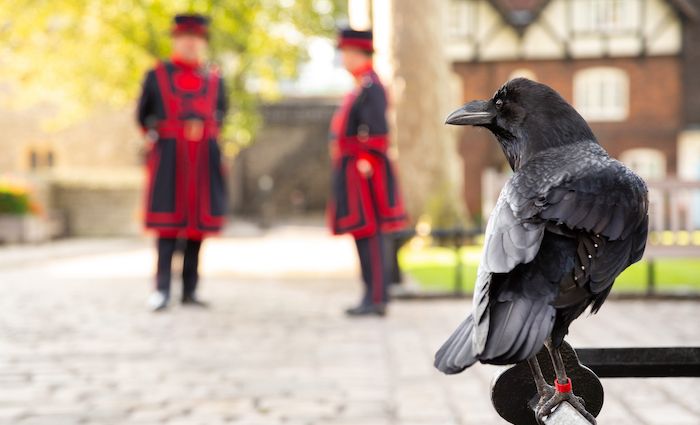
Yeoman Warders | Charles II | Legend
Don’t miss a chance to see the famous ravens! This is one of the coolest and most peculiar things you can do here (particularly if you have children). These beautiful birds are known as the guardians of the tower.
According to Chris Skaife, chief Ravenmaster and Yeoman at the Tower, legend has it that if the ravens were to leave the site, both the tower and the kingdom of England would fall! So, these ravens have been protected since the reign of Charles II.
All the care of these birds is done by the Yeoman Warders, also known as Beefeaters, to keep these guests comfortable in their homes at the Tower of London. The Beefeaters are also the custodians of the tower, so don’t be shy, ask them questions and take a photo with them in their rather awesome outfits.
8. The Guards
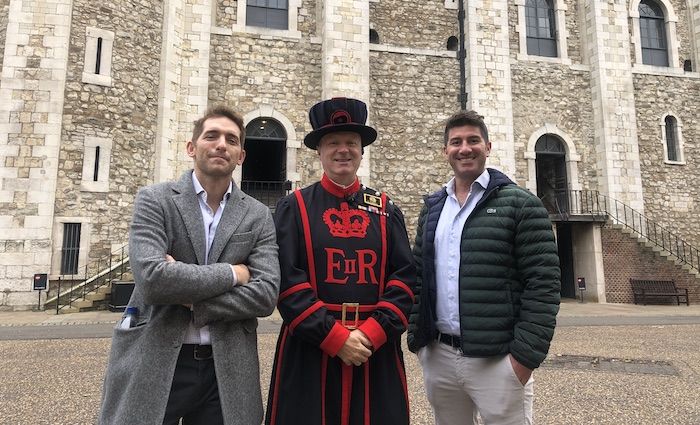
Typical London | Military | Ceremonial
You are bound to see the guards in their spectacular uniform across different sites in London. However, the Tower of London is the best place to see them up close. Remember to be respectful, however, as these people are working and performing military service.
You can see the guard post by the Jewel and Queen’s House, but for a more spectacular display be sure to check out the three daily ceremonies where the guards perform their duties. If you take a tour here, you’ll probably learn about their quarters and which one is supposedly haunted too.
Not ready to book a tour? Check out our London guide to prepare for your trip.
7. The Tower Green
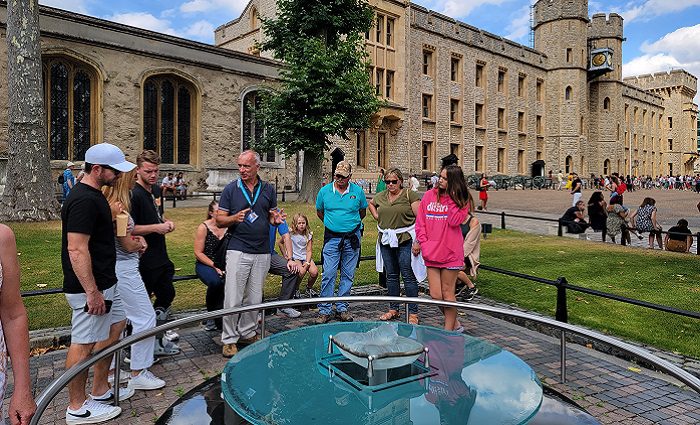
Executions | Anne Boleyn | Lady Jane Grey
You can find Tower Green immediately to the west of the White Tower. This area was reserved for the executions of the upper class. The type of execution often depended on the person and the type of crime they committed according to Daniel Diehl and Mark Donnelly.
The historical records show that a total of 10 people were executed on Tower Green that we know of. Three were former queens of England: Anne Boleyn and Catherine Howard after Henry VIII divorced them and accused them of adultery. The last one was Lady Jane Grey, whose tragedy inspired countless works of art and literature.
6. The Bloody Tower
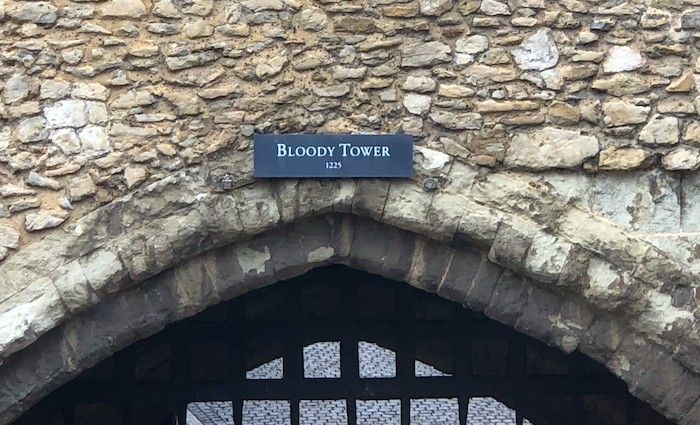
Garden Tower | Prison | Sir Walter Raleigh
Previously known as the Garden Tower due to its location, this building’s main purpose was to act as a prison. The Princes in the Tower were kept here, alongside many other famous and infamous enemies of the state.
But perhaps the most famous resident of this building was Sir Walter Raleigh, according to Nigel Jones. Best known for his explorations in America that led to the legend of El Dorado, he was charged with treason against King James I and locked up in the tower for 13 years.
Haunted | Supernatural London | Princes in the Tower
The historical record suggests that at least 8,000 people were incarcerated at the Tower of London throughout its use. So, it’s no wonder that ghost stories are a popular aspect of this site. In fact, it’s supposed to be the most haunted castle in England!
If you’re into spooky stories or are visiting when it’s dark, you may want to wander over to the Salt Tower. This building is famous for its haunting noises, to the point of making guard dogs and warders uneasy according to Daniel Farson.
Another building haunted for centuries is the Bloody Tower. The ghosts of the young princes allegedly haunt this place since they died there in their imprisonment in the 15th century according to Alison Weir.
Their skeletons were allegedly found on-site during the reign of Charles II in a chest. He then buried them at Westminster Abbey. Nevertheless, the most famous ghost at the tower is Anne Boleyn, but more on that a few lines down!
Not ready to book a tour? Find out what the best tours of London are and why.
4 . Tower Bridge
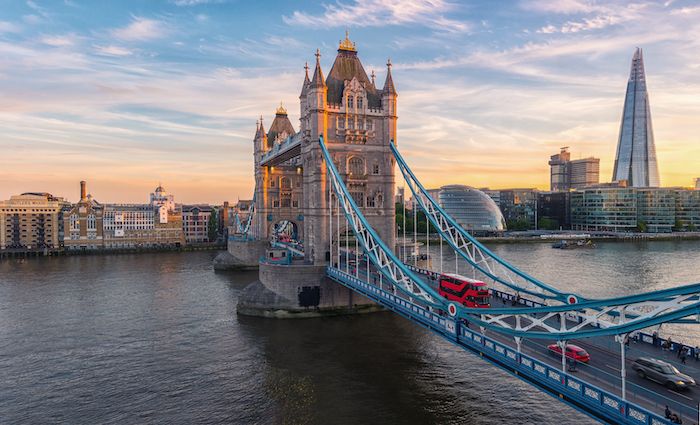
Iconic View | 19th Century | Sir Horace Jones
One of the nicest views you can get from the ramparts of the Tower of London is the iconic Tower Bridge. The bridge, unlike the tower, dates from the late 19th century. According to Brian Cookson, the bridge was designed as a way to connect both sides of London across the river Thames to improve traffic without disrupting the traffic from the river.
There was a public competition to come up with the design of the bridge, and Sir Horace Jones won it. He gave us the design you see today, which is constructed in the Neogothic style.
3. Chapel Royal of St Peter ad Vincula
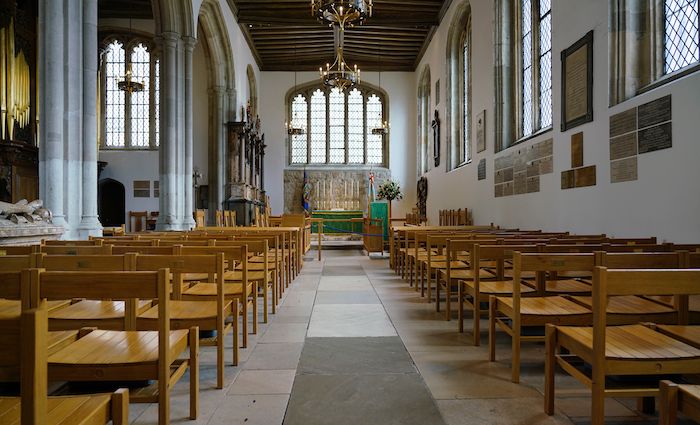
Parish Church | 16th Century | Eminent Burials
This chapel used to be the parish church for the Tower of London. It’s located facing Tower Green, and the current building dates from the 16th century. However, the history of this church is relatively unknown, because the chapel itself has been built, demolished, and moved several times throughout its history.
Nevertheless, it’s an interesting place to visit because it’s the burial site of several prominent people in British history, including the executed queens and Sir Thomas Moore. According to Daniel Farson, this is also the place that’s supposedly most haunted by the ghost of Anne Boleyn and where you may find her soul roaming at night.
2. Line of Kings
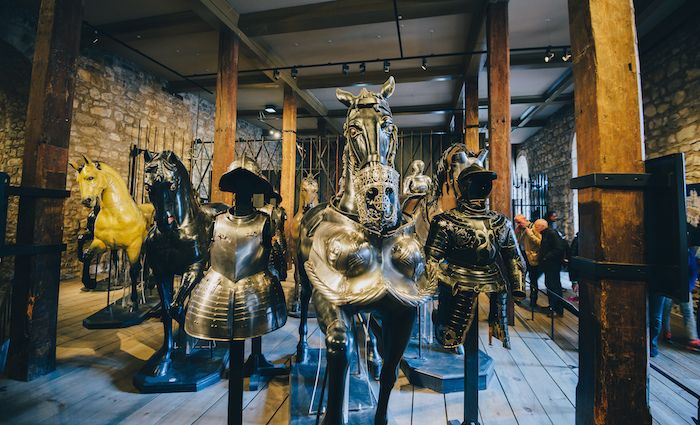
Armoury | First Museum | 17th Century
Do you love military history, weapons, and armor? Then you need to see this exhibition. It’s housed inside the White Tower on the entrance floor and contains one of the largest armories in the country, with pieces dating back to the 15th century. Also, it’s the oldest museum exhibit at the Tower of London. It’s been used for the display of these amazing items since the 17th century.
1. Crown Jewels

Royal Regalia | Oliver Cromwell | Koh-i-Nûr
Finally, the moment you’ve all been waiting for! The crown jewels have been kept in the Tower of London for over 600 years. These are not the original jewels of the kings and queens of England. However, this is the collection kept to date since the restoration of the monarchy in the 17th century.
Leslie Field explains the original pieces were actually destroyed, sold, or melted during the rule of Oliver Cromwell. This was an attempt to erase all traces of the monarchy. Nonetheless, when Charles II became king after the death of Cromwell, he commissioned the new royal ceremonial regalia of the kings and queens of England.
My favorite piece in this collection is one of the most coveted jewels in the world and it represents the might of the old British Empire. The Koh-i-Nûr, meaning “Mountain of Light” in Persian, was discovered in the Indian subcontinent in the middle ages.
According to William Dalrymple and Anita Anand, a dark legend tainted its fate: the diamond is supposed to be bad luck for men. Therefore, it has only been worn by women such as Queen Alexandra in the 19th century or the Queen Mother.
Bonus: The Gift Shop
Gifts | Public Donations | Worldwide Delivery
What is a trip without buying souvenirs and gifts for your loved ones? Sure, London has a plethora of shops where you could buy all sorts of trinkets for cheap. But the range of stuff at the Tower of London is sincerely impressive. They have unique items you won’t be able to find elsewhere.
In addition, as they are a self-funded organisation, all the sales from the shop contribute to their upkeep, so you’d be helping to preserve history. If you happen to miss the gift shop, their online shop offers worldwide delivery.

Where to Stay in London
Deciding where to stay at a great hotel in London can take some effort since it’s a massive city. Make your decision easier with our list of the best neighborhoods and hotels in London.
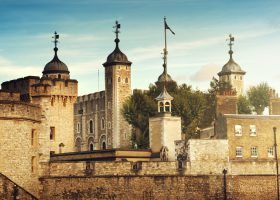
Recent Articles From the Blog
Where to stay in val d’orcia, tuscany, 8 things to do in florence off the beaten path, 12 astonishing facts you might not know about the medici family, where is the statue of david, how to climb the florence duomo.
About Lillian Cespedes Gonzalez
Dr. Lillian Cespedes Gonzalez is a historian and published author. She specialises in medievalism, the Vikings, popular culture, and cultural identity. She is an educator and has worked at the University of Winchester teaching the Golden Age of Spain as well as working on different research projects.
Her academic work has also taken her to the world of publishing and editorial work. She used to be the director for Revista Medieval and the image editor at the Royal Studies Journal and has contributed to other publications as an ad hoc copyeditor.
She is also de CEO at Travelusion Tours, a tour guiding company that specialises in affordable and accessible guided tours in the UK and Europe. The tours are virtual or face to face.
She is also the host of several podcasts (Nu History, ManaBurnt & Tour Guide Central). Some examples of her published work are:
"Motherhood in Vikings", Vikings and The Vikings: essays on Television's History Channel Series, 2019
"Jessica Jones: Gender and the Marvel Phenomenon", Jessica Jones, Scarred Superhero: Essays on gender, Trauma and Addiction in the Netflix Series, 2018
"Some Reflections on Danes in Wessex Today, pp. 250-262", Danes in Wessex The Scandinavian Impact on Southern England, c.800–c.1100, 2016
Reader Interactions
Leave a comment cancel reply.
Your email address will not be published. Required fields are marked *
- Travel Guide
- In The Press
POLICY & TERMS
- Cancellation Policy
- Terms & Conditions
- Privacy Policy

- Search Please fill out this field.
- Manage Your Subscription
- Give a Gift Subscription
- Newsletters
- Sweepstakes
- Travel Tips
The Best Times to Visit London, According to Local Experts
Here's when to go to London for good weather, smaller crowds, lower prices, and more.
:max_bytes(150000):strip_icc():format(webp)/Brad-Japhe-author-pic-02ce5d707440449fafcd35e116dfa76d.png)
- Best Times to Visit London for Smaller Crowds
Best Times to Visit London for Good Weather
- Best Times to Visit London for Lower Prices
- Best Times to Visit for Making Spirits Bright
Worst Times to Visit London
London is one of the most visited places on the planet. Each year, the English capital welcomes upwards of 30 million tourists. They are greeted by iconic sites, like Buckingham Palace and Westminster Abbey. They come to catch a show in the West End. And, more recently, they arrive to explore world-class dining and cocktail culture. But they don’t all appear in equal numbers across the year.
The Big Smoke is very much a seasonal destination. High season typically takes off in early June and extends through the start of September. Late April through May, along with September into mid-October, are the shoulder seasons on either side. And late October through early April bookends the lull of low season.
Gautier Houba/Travel + Leisure
But you’re not bound by these trend lines. The reality is there’s no bad time to land in London . And the “best” time is entirely relative. It merely depends on what type of experience you’re eager to achieve. Let’s find out what — and when — that is, exactly. Below, we break it all down, so you can discover your very own prime time to see the city.
- High Season: Early June through early September
- Shoulder Season: Late April through May; September to mid-October
- Low Season: Late October through early April
Stephanie Pollak/Travel + Leisure
Best Times to Visit London for Smaller Crowds
The lion’s share of those 30 million annual visitors will touch down at some point during the summer months. You can’t blame them for being so predictable — London is consistently compelling throughout that time period, as gray skies and rain are rare. And the city’s 3,000 parks and green spaces are teeming with life.
“But the best time for me is spring,” according to Ross Corcoran, managing director of Lang Atholl , a bespoke tour company based in Scotland. “The weather is milder, the crowds are not as big, and hotel rates are not yet surging. It also allows you to get around the city with relative ease and use the Tube like a local rather than a tourist.”
Indeed, if you arrive in May, specifically, you might find you have the whole city to yourself. Although outdoor markets and street fairs are fully open, embracing the warming air, the international arrivals have yet to accumulate. Many native Londoners, meanwhile, step outside of town to take advantage of the multiple bank holiday weekends marking the month.
“June and July definitely have the best weather,” says Chris Perone, general manager at NoMad London . “Long days and warm evenings are perfect for strolling the city’s endless, meandering pavements.”
To his point, as the summer equinox approaches in mid-June, it starts getting light before 5 a.m. and darkness doesn’t set in until well after 9 p.m. With more than 16 hours of sun to play with, there’s ample opportunity to enjoy a lengthy morning walk alongside canals and greenery. Then, have a full English breakfast — or a legendary Sunday roast — before perusing the shops and restaurants of Mayfair.
You can even parade primary thoroughfares such as Regent Street, which shuts down to vehicular traffic this time of year . Or, take off toward the River Thames and check out the city’s newest observation deck, Lift 109 , built into the chimney of the historic Battersea Power Station.
Then, return to green space in time for BST Hyde Park . The concert series, which runs nightly from the end of June through the beginning of July, carries with it world-class talent. Last year, headliners included Billy Joel, Pink, Lana Del Rey and Bruce Springsteen.
Best Times to Visit London for Lower Prices
“August and January are undoubtedly when you can grab the best deals,” Perone confirms. “While August can be a bit hot, everything is open and the city just has this buzz with the pubs overflowing into the streets. January is dark and can be damp, but that’s when the fireside tipples are at their best.”
As it applies to the former, simply make sure you’re booking a hotel — like the NoMad — that has adequate air conditioning. Yes, August temperatures have been inching toward the 100-degree mark in recent years, but it’s never as muggy as, say, a New York summer. So, it’s worth contending with the climate in exchange for those precious reduced rates, which apply to everything from overnight stays to rental cars.
As for January, you’re looking at an average of 12 days worth of rain throughout the month, with temperatures sitting squarely in 40-degree territory. It's not ideal, and yet, as a result, the indelible coziness of British pub culture is dialed up to its maximal value. It’s a fantastic month to mingle with locals in Chelsea and Belgravia. Make your way past the terraced alabaster townhouses and amble into any number of legendary gastropubs, including The Harwood Arms , the only Michelin-starred pub in London. Or, enjoy new venues such as Bóha , which delivers on the promise of one of the most satisfying Sunday roasts in town. Just make sure to pack an umbrella and jumper .
Best Times to Visit for Making Spirits Bright
London is one of the most festive locales on earth come holiday season. Ornately lit Christmas trees populate public squares, wreaths and red ribbons dress doorways, and a diverse array of themed markets set up shop from Clapham to Clapton.
There are too many memorable offerings to list them all, but if you’re staying in central London, Christmas by the River is one you won’t want to miss. It features more than 50 merchants alongside London Bridge City Pier, under the shadows of Tower Bridge. Leicester Square market is another optimal option. It’s one of the smaller ones in sheer size, but the level of festivity it extends is beyond measure. Most Christmas markets operate from the start of November through the first week of January.
If you’re looking for another sort of holiday spirit, book your trip during London Cocktail Week . What started in 2010 as an intimate showcase of the local drinks scene has ballooned into the world’s largest cocktail festival, underscoring this city’s standing as the international epicenter of cocktail culture. The confab includes some of the top names in mixology, who fan out across town to shake up all sorts of pop-ups, tastings, and speciality drink activations over a 10-day period in mid-October.
“Contrary to popular belief, summer is the worst time to visit London,” says Corcoran. “If there's hot weather, the underground is almost unbearable, and if you're used to air conditioning, I would strongly recommend against it. You will feel stressed, rushed, hot, and flustered trying to get around the city with the warmer temperatures and stultifying foot traffic.”
You’ll also endure the highest airfare if booking your trip between June and July. If you're determined to battle the crowds, however, consider taking a train out to the countryside for at least a few days during your stay. The inclusive beach town of Brighton to the south, or the bucolic countryside of the Cotswolds to the west are ideal, if not predictable, summertime retreats.
“July is a tough time in London,” adds Perone. “With so many events, hot weather, and lots of out-of-towners in general, London can feel a bit cramped and stuffy. “And the Tube network... it’s an oven.”
So-called “deep-Tube lines,” which include the most popular services, like Piccadilly, Central, Victoria, and Northern, are all free of air conditioning. Needless to say, it’s a challenging experience to be cramped among strangers in a 90-degree train car. But if you stick with the sub-surface network, the train cars are not only temperature controlled, they’re also more spacious. Primary examples include the District, Circle, Hammersmith & City, and Metropolitan lines, as well as the Wi-Fi-equipped Elizabeth line.
Related Articles
Weather & Climate
London's Airports
Neighborhoods to Know
Driving in London
Public Transport in London
London's Top Attractions
Free Things to Do
Things to Do With Kids
London's Best Parks
Museums in London
Theater in London
Live Music in London
Shopping in London
One Week in London: Itinerary
Day Trips From London
Beaches Near London
The Best Fish & Chips in London
London's Top Restaurants
Eating With Kids in London
London's Best Bars
Craft Beer in London
The Best Time to Visit London
Jack Taylor/Stringer/Getty Images
With mild year-round temperatures and a social calendar that never quits, there’s no such thing as a bad time to visit London. That said, the number of visitors from overseas and around the U.K. swells during summer when school’s out and around the winter holiday season. So, to avoid congestion, the best times to visit London are during the shoulder seasons of late winter/early spring ( January to April ; excluding the Easter holidays) and the fall (September to November).
Weather in London
London has a reputation for being a rainy and cold city, but that’s not entirely accurate. Many U.S. cities (including New York) are actually rainier than London. Though London does tend to be cloudy, London is actually the country’s driest city and experiences four seasons—sometimes all in one day.
Winters rarely dip below 40 degrees Fahrenheit (4 degrees Celsius), and snow is uncommon, with the odd burst of flurries rarely accumulating. (In the rare event of any buildup, the city and its airports grind to a halt.) Days are short in winter, as the sun sets around 4:00 p.m.
Spring comes early in London with fair weather and blossoming trees, sometimes emerging as early as late February. On average, spring and fall tend to be London’s rainiest months, but it’s not a major difference from the other seasons.
Summer in London is relatively comfortable compared to other European capitals, with daytime temperatures in the 70s F (20s C); however, there is often a week or two of extreme heat and humidity, with temperatures reaching 90 degrees Fahrenheit (32 degrees Celsius). London isn’t equipped for the sweltering weather, as many places—including some London Underground lines—don’t have air conditioning. But the warm weather brings out Londoners in droves, and summer brings long daylight hours (the sun doesn’t set until about 11 p.m.).
Peak Season in London
Summer is London’s peak season, and you can expect long lines at tourist attractions and high room rates at hotels. For main attractions like the London Eye and the Tower of London, you can pre-book your tickets online several months in advance.
As most museums are free (barring special exhibits), there’s no need to pre-book; however, to avoid crowds, go early in the day and skip weekend visits as London museums are a popular family-friendly pastime for Brits living outside of the city.
Due to the number of hotels, hostels, and holiday rentals available in London, there’s no shortage of choice when it comes to accommodation, but book in advance to avoid disappointment.
Like any big European city, London is also busy during Christmas. Public transportation is unavailable on Christmas Day and limited on Boxing Day (December 26). Most of London’s most famous attractions and businesses are closed on Christmas Day and Boxing Day.
During the British school holidays, the city is also congested. School holidays occur during summer (usually from July through September); around the Christmas and Easter holidays; and at “half term:” autumn half term is usually end of October and spring half term is usually mid-February.
Though you’ll need a winter coat, January—the city’s coldest month—is a great time to visit London as the holiday hordes have thinned.
Events to check out :
- On January 1, the streets around Piccadilly host London’s New Year’s Day Parade . You can buy grandstand tickets for the festival and parade in advance.
- During the first two weeks of January, shop ‘til you drop at the January sales. Hit the high streets (main shopping thoroughfares) like Oxford Street and Regent Street and heritage department stores like Harrods , Selfridges , and Fortnum & Mason .
- January 25 is Burns Night, an homage to the Scottish poet Robert Burns, which is celebrated throughout the UK with Scottish-themed food and drink served at many pubs and some restaurants. (There’s usually haggis involved.)
Because the spring half term falls mid-month, there are more children and families in London in February as compared to January, but it’s still a good month to visit—especially if you’re not traveling with kids.
- Celebrate Chinese New Year in London’s Chinatown with a small parade and various festivities.
- Valentine’s Day is honored at many London restaurants with special menus or festive décor. (Tables for two at top London restaurants should be booked in advance.)
Spring is one of the best times to visit, as London is such a green city and is filled with parks, trees, and flowers.
- St. Patrick’s Day is honored in Trafalgar Square with the London St. Patrick's Day Festival, which usually takes place on the weekend closest to St. Patrick’s Day (March 17). With a considerable Irish population, expect crowds at London’s many Irish pubs.
- In the U.K., Mother’s Day falls in March (the date varies based on the Christian calendar), so expect things like mum-themed afternoon teas and special menus at some restaurants.
Don’t forget your umbrella, as spring can be a bit rainy. Easter public holidays (Good Friday and Easter Monday) sometimes fall as early as March or as late as May. Expect the long weekend to bring crowds, closures, and celebrations. Schools are usually closed for two weeks around Easter.
- The London Marathon is usually in April; expect road closures.
May is the start of the peak tourist season, but it’s a lovely time to visit because of the weather. There are two May Bank Holidays (public holidays when the banks and many businesses are closed). They usually take place on the first and last Mondays of the month.
- The quintessentially British Chelsea Flower Show is a five-day celebration of all things floral and is held in the upscale neighborhood of Chelsea.
The social calendar is in full swing in June, and the city is jam-packed with international and British tourists enjoying the extra daylight hours.
- Trooping the Colour (the Queen's Birthday Parade) extends from Buckingham Palace and includes an appearance by Her Majesty the Queen. You'll need to dress for the occasion and buy tickets in advance.
- Pride in London attracts an estimated one million visitors, and many LGBTQ+ events, including the parade, occur around Oxford Street.
- Wimbledon , the world-famous tennis tournament, sometimes starts at the end of June.
July is London’s hottest month and one of its busiest and most vibrant.
- There are many music festivals in London in the summer, but the most famous is The Proms , a two-week series of contemporary and classical music concerts at the Royal Albert Hall in South Kensington.
Like July, August is warm and crowded. There’s a Bank Holiday on the last Monday of the month.
- Notting Hill Carnival is one of Europe’s largest street parties. A celebration of London’s West Indian community, the event is held over the Summer Bank Holiday weekend.
- Carnaval del Pueblo honors Latin American culture and is held in Burgess Park.
As school starts again and the weather gets cooler, the crowds begin to thin in London, making it an excellent time to visit.
- Bursting with a creative and diverse range of events, The Thames Festival takes place the first two weeks of the month.
October brings a bit more rain, but a bit fewer people.
- The prestigious BFI London Film Festival brings out Britain’s biggest stars.
November is also an excellent time to visit; the weather is cooling off even more, so crowds are pretty small.
- Bonfire Night or Guy Fawkes Day is celebrated on November 5 throughout the U.K. and commemorates Guy Fawkes' failure to blow up the House of Parliament. There are firework shows and bonfires throughout the city.
- The massive Lord Mayor's Show is an elaborate parade and show, and it shuts down much of London for the day. It's free to watch the procession, but tickets are sold for the grandstands.
In December, London is practically bursting with festive cheer. The city sparkles with Christmas lights (especially around Oxford Circus) and many holiday markets. Christmas Day and Boxing Day (December 26) are public holidays, and most businesses will be closed. Around the holiday period, there’s limited transportation and no public transportation on Christmas Day .
- On New Year’s Eve, London puts on a big fireworks show on the River Thames. Tickets always sell out well in advance.
There is no bad time to visit London, however, if you go during the shoulder seasons (late winter to early spring, excluding the Easter holiday, and in the fall), you'll avoid the summer crowds.
The best time to find bargains on flights to London is during September and October, as well as during November to mid-December, and Christmas Day through mid-March.
The rainiest month in London is June, when the city averages 1.77 inches (45 millimeters) of precipitation.
The Telegraph. "Britain's Snowiest, Coldest and Windiest Places." February 26, 2018.
The Best Time to Visit Johannesburg
9 Top Things to Do in London for Easter
The Best Time to Visit Spain
The Best Time to Visit Munich
The Best Time to Visit Naples, Italy
The Best Time to Visit Manchester, England
The Best Time to Visit Washington D.C.
The Best Time to Visit Japan
The Best Time to Visit the Bahamas
Best Time to Visit England
The Best Time to Visit Boston
The Best Time to Visit Disney World
The Best Time To Visit San Diego
The Best Time to Visit France
The Best Time to Visit New York City
The Best Time to Visit the Dominican Republic
- Skip to primary navigation
- Skip to main content
- Skip to primary sidebar

Mint Notion
Feel rich living within your means
The Best Tips for Visiting the Tower Of London
By Eden Ashley MintNotion.com is reader-supported. When you buy through links on this site, we will earn a commission at no added cost to you. This helps keep the content on this website free for everyone to enjoy. Disclosure Page

Ravens, beefeaters and bloody history – it’s easy to see why the Tower of London is such an iconic building, which attracts nearly three million visitors per year.
Officially called, Her Majesty’s Royal Palace and Fortress of the Tower of London, this historic castle is a must-visit when in London.
Here are the best tips for visiting the Tower of London to help ensure that you make the most of your trip.
Related Posts:
- London on a budget: 10 costly mistakes to avoid making
- 5-day London itinerary for first timer visitors
- 10 reasons why winter is the best time to visit London
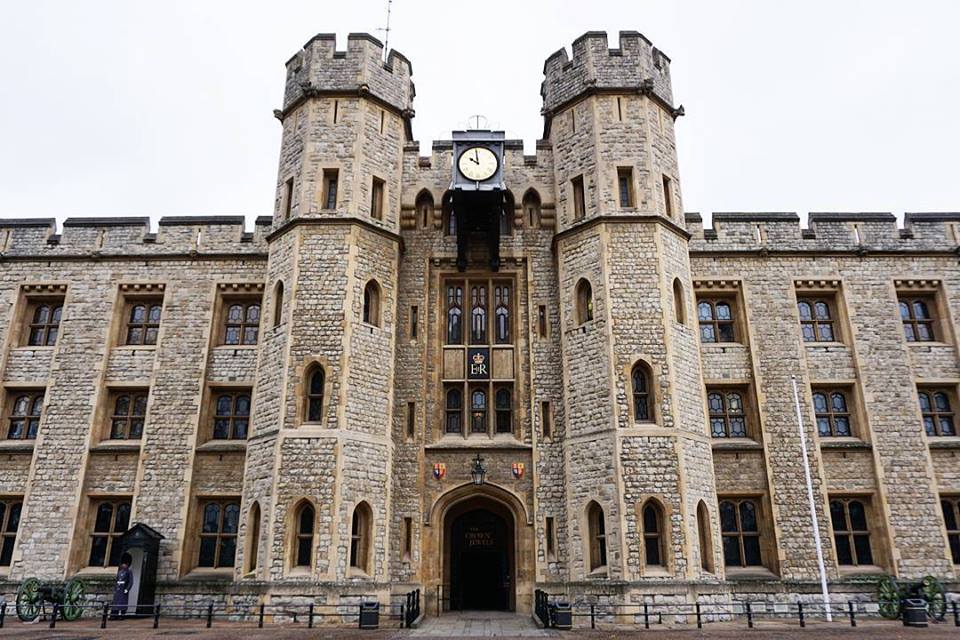
Table of Contents
Getting to the Tower of London
London Underground and Trains – It’s a 5 minute walk from the Tower Hill Underground station . This is served by the District and Circle lines.
Other stations that are within a 10-15 minute walk from the Tower of London include Monument, Bank, Aldgate, Aldgate East London Underground , London Bridge and Fenchurch Street stations .
Sightseeing Bus Tour – You can also take the Hop-On Hop-Off Bus Tour which stops right at the Tower of London.
River Boat – You can also arrive here by river boat. Tower Pier is the closest river boat stop.
Buses – London’s public bus routes 15, 42, 78, 100, 343 and RV1 stop nearby the Tower of London.
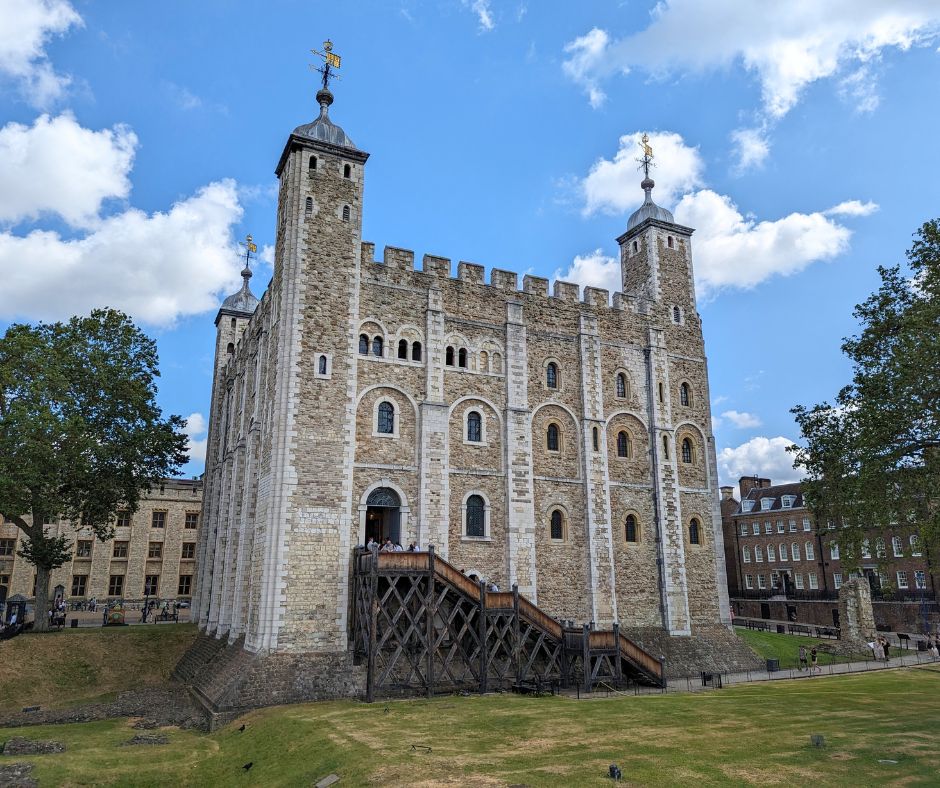
Buy your tickets in advance
The Tower of London is the #1 thing to do in the city, according to TripAdvisor . Due to its popularity, you’ll want to make sure to buy your tickets in advance.
You don’t want to waste your vacation time waiting in a long line, especially if you’re visiting during peak season (June, July, August, Easter, Christmas, and bank holidays).
You can purchase your tickets through GetYourGuide . They offer free cancelation up to 24 hours in advance for a full refund just in case your plans change.
Alternatively, if you’re planning to visit a few of London’s paid attractions, consider buying the London Pass or the London Explorer Pass , which offers free entry to the Tower.
The London Pass is a pre-paid sightseeing card which gives you FREE fast-track entry to the city’s top tourist attractions, including the Tower of London , Westminster Abbey , and a Hop-On Hop-Off Bus Tour .
Plus, you can use the London Pass to get free entry to 80+ other attractions , museums and tours in the city.
My husband and I used the London Pass for our summer trip to London. It was SO easy and convenient for sightseeing.
You just have to purchase your pass online, then you’ll show your pass on your phone when entering the Tower of London. There’s no need to wait in long ticket lines, just head to the ticket holder entrance and you’re ready to enjoy!
PRO TIP: Buy the pass online to save extra money off the retail price. To buy the London Pass, click here to go to the official website.
How to get your London Pass:
Step 1: Choose which pass duration you want to buy (1, 2, 3, 6, or 10 day). You can click here to purchase your London Pass from the official website.
Step 2: Download your mobile pass instantly using the London Pass App. If you prefer a physical pass, simply opt for delivery (they deliver worldwide) or collect on arrival in London.
Step 3: You now have FREE access to any of the 80+ top London attractions included for the duration of your pass. You can activate your pass anytime within 12 months from the date of purchase.
Step 4: Download the free guide book , which is included with your purchase. Use this book to help you easily plan your itinerary.
Skip the line
When visiting the Tower of London, there are two lines:
- A line for those who need to purchase tickets.
- A line for those who have already purchased tickets.
The second line is shorter and will guarantee quicker entry into the Tower of London.
You can purchase your tickets online or use a tourism pass, such as the London Pass or London Explorer Pass .
And if you really want to skip the line and avoid the crowds, consider booking an early access tour .
With an early access tour, you can enter the Tower of London before the long queues to see the Crown of Jewels.
One of the legendary Beefeater guardsmen will take you around to explore the palace so you can learn the history of the Yeoman Warders, the Royal Castle, and other landmarks.
Get there early to avoid the crowds
The best time to visit the Tower of London is in the early morning, just after it opens, to avoid long lines and crowds.
Summer and bank holidays will be busy, but you can still beat the crowds by visiting first thing in the morning on a weekday. Weekends are always busier than visiting on a weekday.
If you can, avoid visiting during Easter, Christmas, and school holidays.
Visiting in the fall – I went to the Tower of London when it first opened on a weekday morning in November and it felt like we had the place to ourselves.
We headed straight to the Crown Jewels and were the only people inside (other than the security guards). I felt like a VIP!
Visiting in the summer – We arrived 15 minutes before the Tower of London opened on a weekday morning. There was already a line up outside the main entrance for people who have already purchased their tickets.
But once the Tower opened, it only took a few minutes to get inside. Once inside, it was quiet for the first couple of hours before school tours and more people arrived.
This is why it’s SO important to buy your tickets before you visit. You can grab your tickets here or purchase the London Pass or London Explorer Pass .
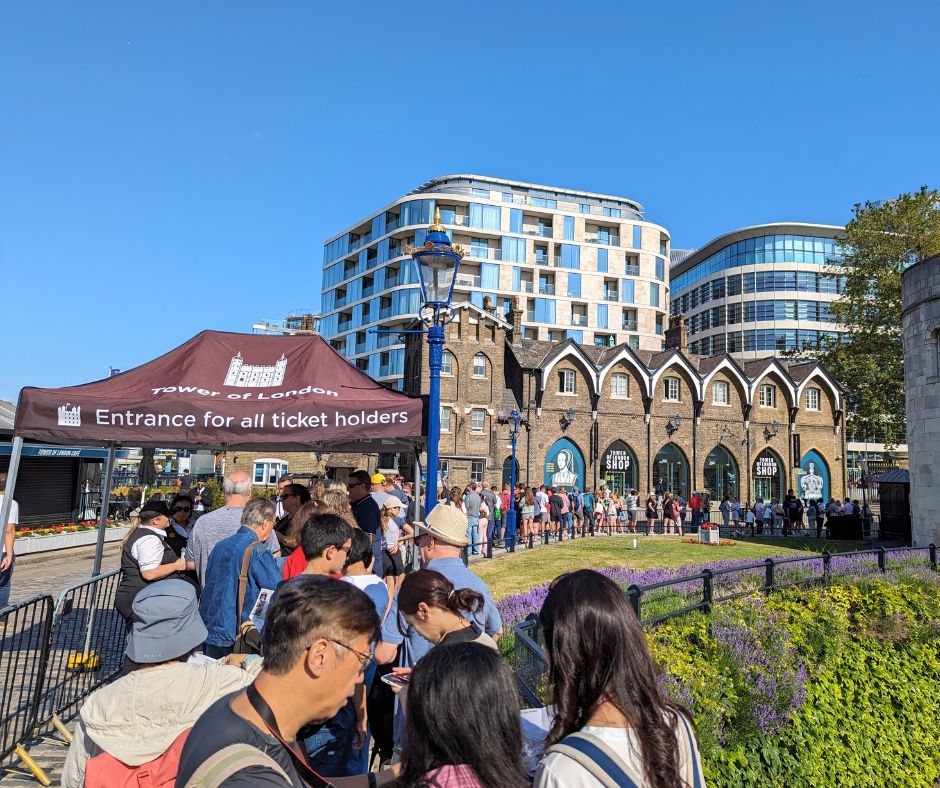
There are two entrances
Another way to skip the lines is by knowing your entrances. There are two main ways to enter the Tower of London: West Gate Entrance or the Middle Drawbridge Entrance .
The West Gate Entrance is the main entrance, opposite the Tower Shop. It’s often the most crowded because on-site tickets are available only at this entrance.
The Middle Drawbridge Entrance is where groups enter, but if you have pre-booked your tickets online or you’re using the London Pass, you can enter through here.
No matter which entrance you choose, everyone will have to go through a security check where bags will be searched on entry. Also keep in mind that luggage and large bags are not allowed.
Grab a free map at the entrance
The Tower of London is quite large and there are many interiors, walkways, buildings, and exhibitions to explore once you’re inside.
I highly recommend grabbing a free map at the entrance so you can easily navigate where you want to go and to make sure you don’t miss anything.
Try to visit on a weekday
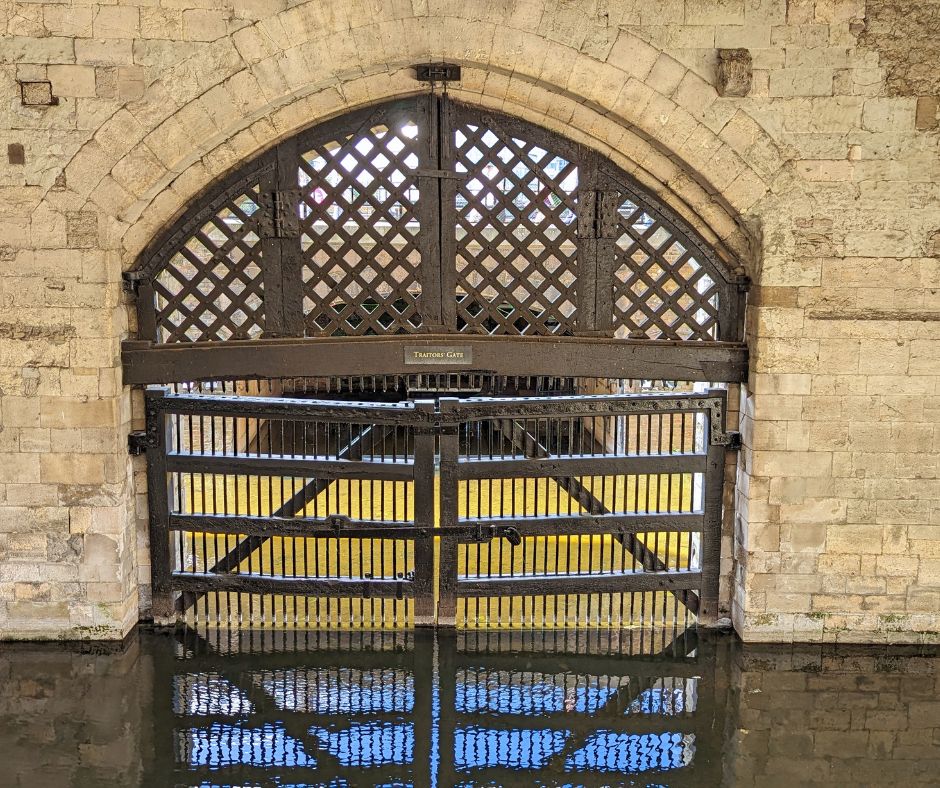
The weekend is the busiest time to visit the Tower of London. If you can, try to visit on a weekday morning to avoid the crowds.
You’ll have a more enjoyable visit without having to wait in a long line or pushing through crowds to see the Crown of Jewels.
Head to the Crown of Jewels first
The Crown of Jewels is the most popular thing to see at the Tower of London. No matter what time of year you visit, make sure to head there as your first stop.
Early morning or lunchtime are usually the quietest times to visit the Crown of Jewels.
During peak travel season, it’s not unusual to wait in line for up to an hour to see the collection since they limit the amount of people that can be in the exhibit at any time.
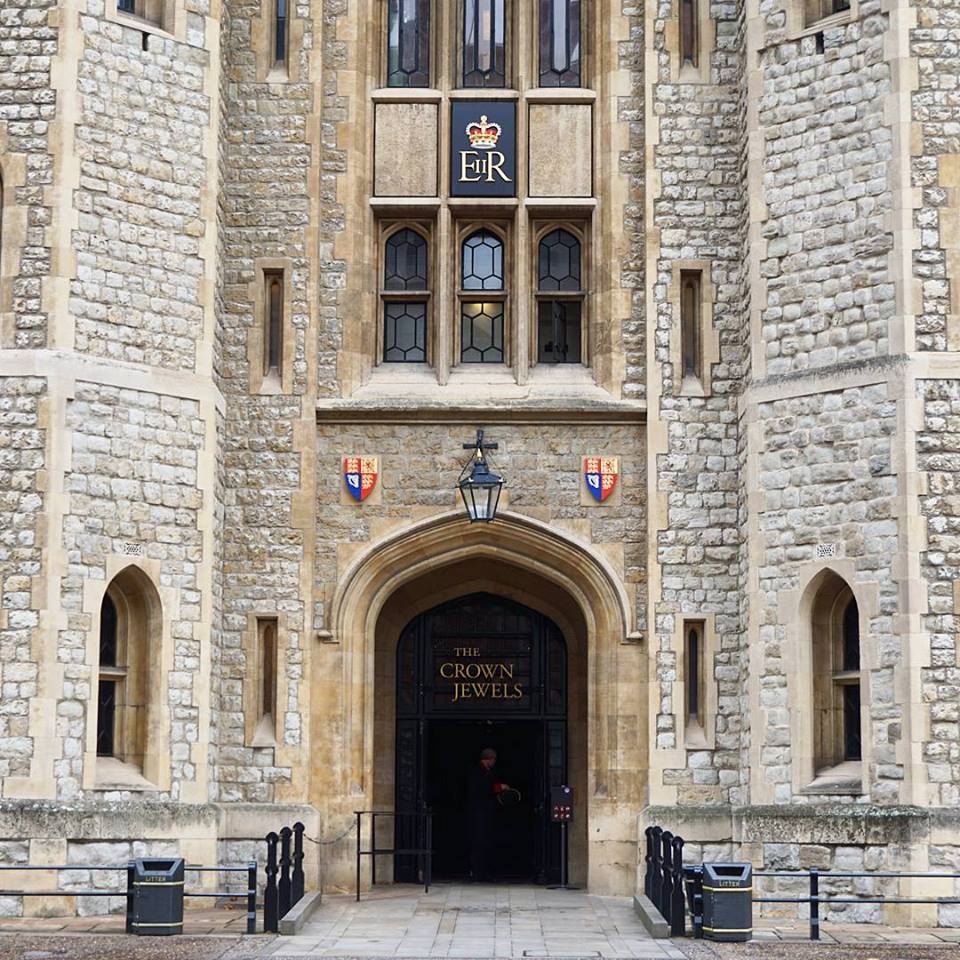
What is the Crown of Jewels?
These are the nation’s most precious treasures which are under armed guard in the Jewel House inside the Tower of London.
Here you can see the sacred objects used in the coronation ceremony, the Imperial State Crown, the Black Prince’s Ruby, the Koh-i-Noor diamond, the Sovereign’s Sceptre with Cross, and many more items.
Once inside the Jewel House, there are no photos allowed and the lighting is low. But you’ll still be able to see other people around.
The first section of the display shows close-ups of the crown jewels. There second section has a moving walkway along the side of the main display of the Crown Jewels. This allows you to easily see the crowns, orbs, and sceptres at slow pace.
Join a Yeoman Warder tour
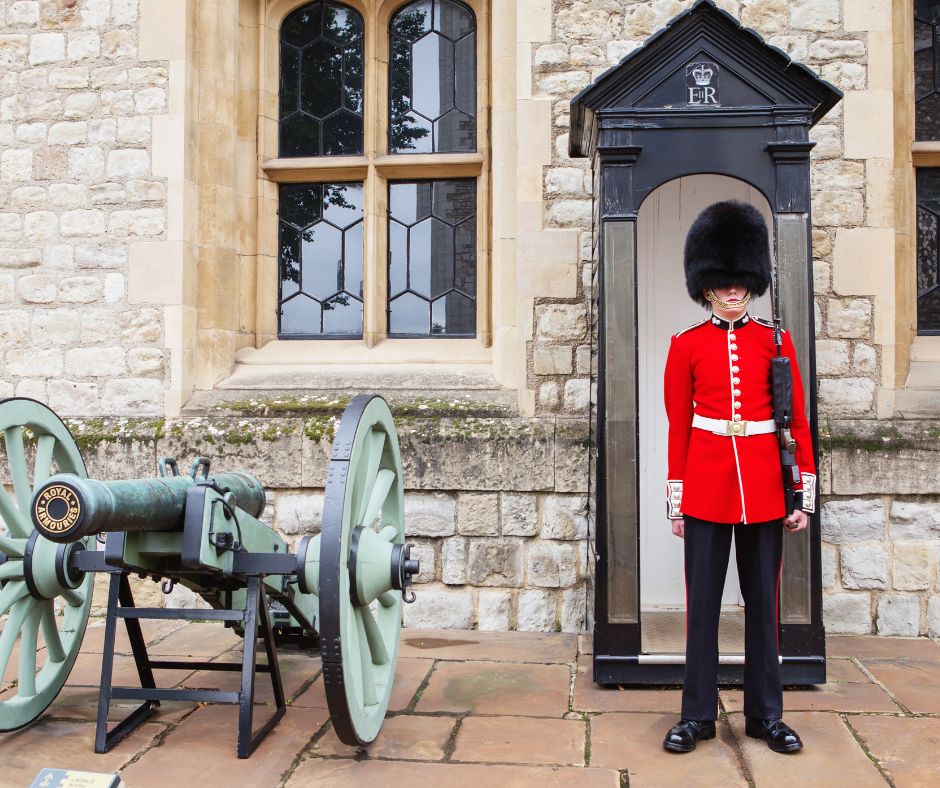
Included in your ticket is a free guided tour led by a Yeoman Warder (Beefeater). These tours start from the West Gate entrance (opposite the Tower Shop) and last for about an hour.
They run every 30 minutes and you can enjoy walking around the outside of the buildings and into the Chapel Royal of St. Peter ad Vincula.
These entertaining tours are popular and can get very crowded, so I recommend trying to aim for a morning tour.
Yeoman Warders have protected the palace for over 600 years. They need to have at least 22 years’ military service and received a long service and good conduct medal. Most of them live within the palace walls.
Visit the Tower of London when the Tower Bridge lifts
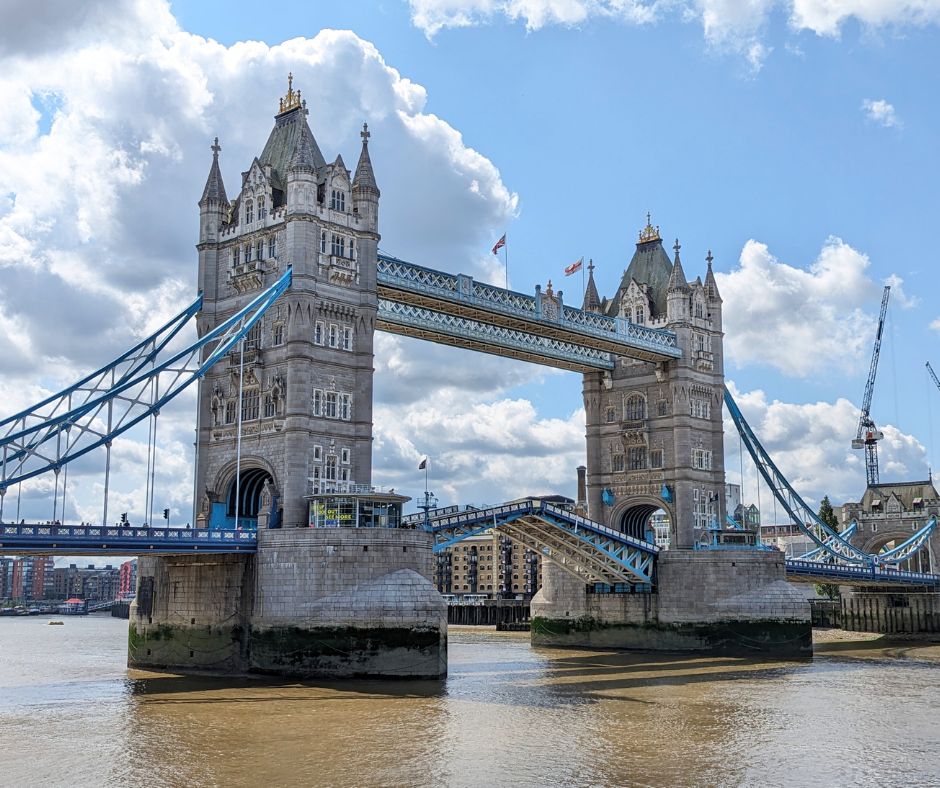
There’s an excellent view of the Tower Bridge from the Tower of London.
The Tower Bridge is a drawbridge, which means that the middle section of the bridge can be raised to allow tall boat and other river traffic to pass through.
You can check the schedule here to see when the bridge will lift.
Don’t feed the ravens
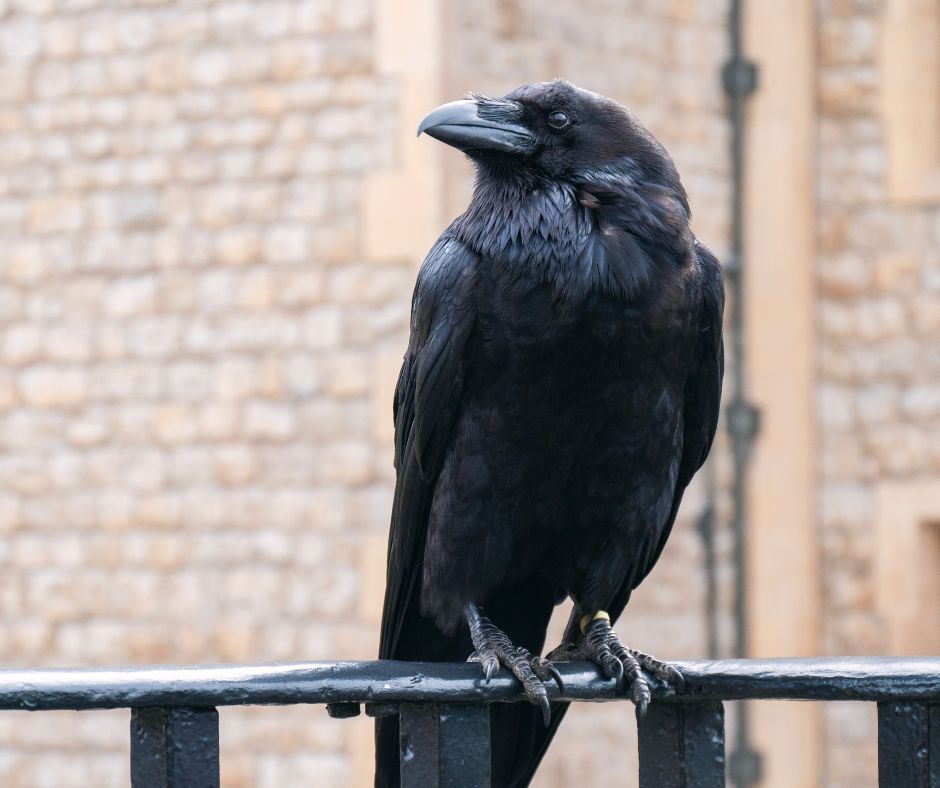
The ravens are some of the most famous residents at the Tower of London. You can see them at over four different territories within the Tower’s walls.
They are well taken care of and fed twice a day by the Tower’s Ravenmaster. They enjoy a special diet of mice, chicks, rats and assorted raw meats.
Since they are wild birds, it’s important to not touch or feed them, as they can bite if they feel their territory is being threatened.
Experience the Ceremony of the Keys
Every night the Guards and Chief Yeoman Warder participate in the Ceremony of the Keys, when the Tower of London is locked up for the night.
This is a 700-year-old ancient tradition where the sentry says, ‘Halt, who comes there?’. The Yeoman Warder then replies, ‘The keys.’ ‘Whose keys?’ ‘King Charles’ keys.’ ‘Pass then, all’s well.’
If you want to see this ceremony, you must pre-book tickets online in advance. It becomes fully booked quickly and there is no waitlist for this event. So check the website regularly for up-to-date availability.
Visit the Chapel Royal of St. Peter ad Vincula
The Chapel existed before the 12 th century and has been demolished and rebuilt a few times since then.
It’s also the final resting place for many of the Tower’s executed prisoners under Henry VIII, including Anne Boleyn, Lady Jane Grey, Thomas More, and Thomas Cromwell.
You can visit this unique chapel as part of a Yeoman Warder tour. It is still a place of worship so it’s not usually open to visitors on Sunday mornings.
Wear comfortable shoes
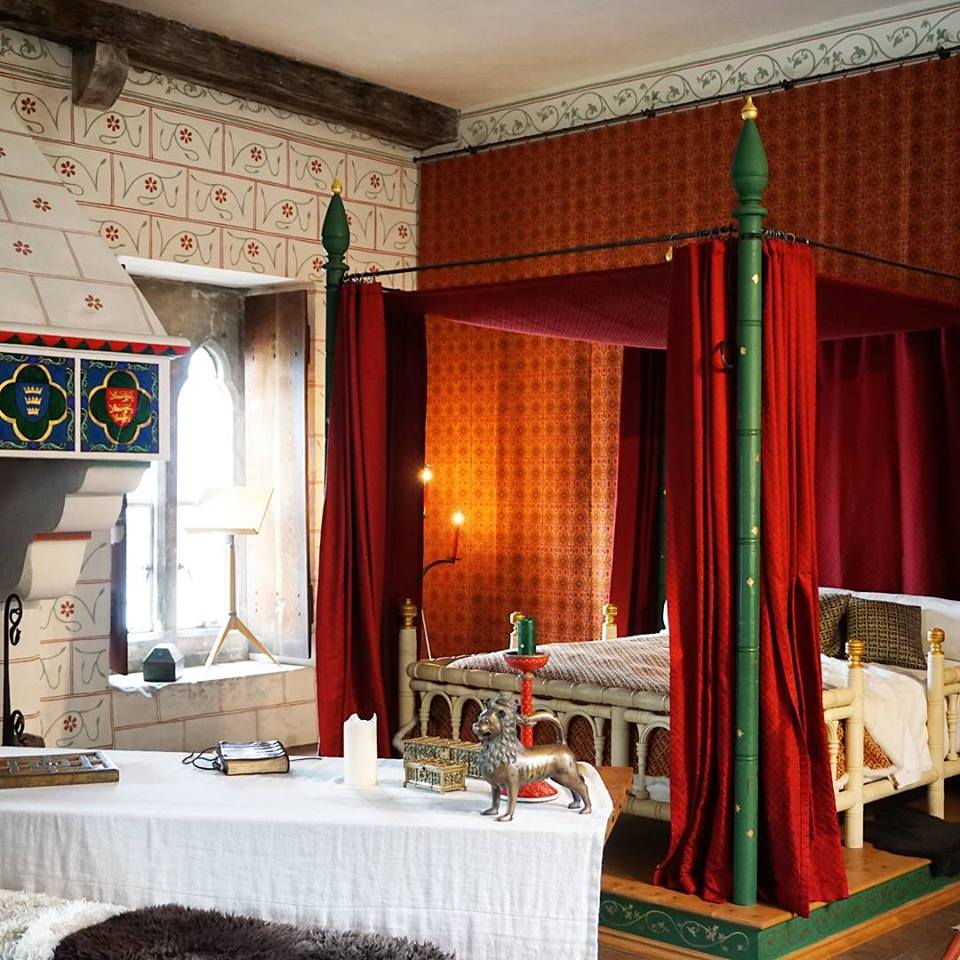
You could easily spend half a day exploring the Tower of London. During your time here, you’ll be walking on cobbled areas, climbing stairs, and standing in line (if you have to wait to get inside or see the Crown of Jewels).
To make your experience more comfortable, please wear appropriate shoes. Leave the heels at home and dress comfortably.
Bring and umbrella, snacks, and water
London weather can be unpredictable. Since there are many outdoors areas to explore within the Tower’s walls, I recommend bringing an umbrella or packing a rain jacket just in case.
There are cafes and kiosks selling drinks and food in the Tower, but it’s a good idea to bring your own snacks and a bottle of water to stay hydrated.
My must-have London accessories : Click the product to shop

12 interesting facts about the Tower of London
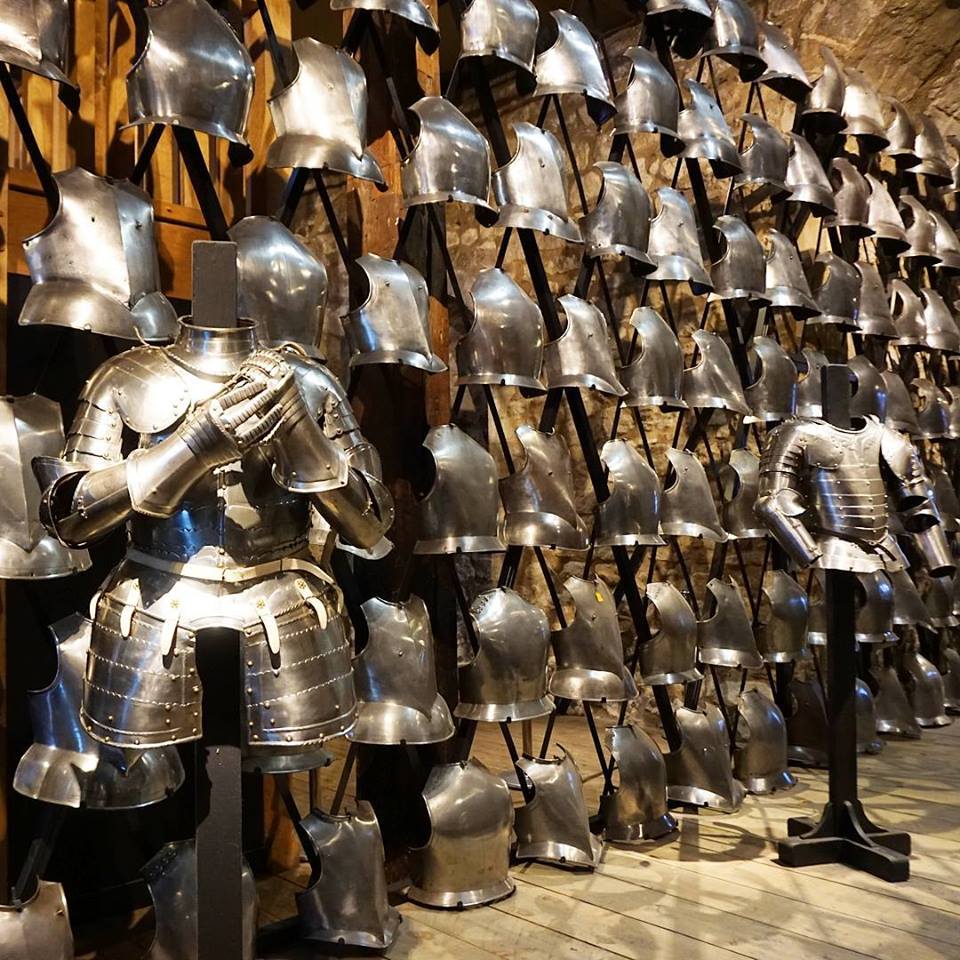
1. The Tower of London is a UNESCO World Heritage Site
It is one of the few intact medieval buildings in the world.
2. At least six ravens are kept at the Tower of London at all times
Legend says, “If the ravens leave the Tower, the kingdom will fall…” . According to the stories, Charles II was the first one who insisted that the ravens of the Tower should be protected.
3. The tower was originally built as a royal palace and defense system
Founded by William the Conqueror in 1066, the tower was never supposed to be a prison. It was used a Prisoner of War Camp during World War II.
4. The total value of the jewels is said to exceed £20 billion
There are 23,500+ jewels there today and their actual value is priceless.
5. There are 32 Yeoman Warders (‘beefeaters’) at the tower
To qualify as a candidate, they must have completed at least 22 years in the Armed Forces and have received the “Long Service and Good Conduct” medal during their years of service.
6. Only 22 executions took place within the Tower of London
Lord Lovat was the last man to be beheaded on Tower Hill, in 1747 for treason.
7. During the 1200s, there was a royal zoo at the Tower of London
The zoo was filled with exotic animals before being transferred in 1835 to the London Zoo in Regent Park.
8. The tower is haunted by several ghosts
These include Henry VI, Lady Jane Grey, the Princes in the Tower and even a grizzly bear!
9. Someone has a spare key
The key to the internal lock was stolen in November 2012. The locks however were immediately replaced.
10. The tower was damaged during World War II
The Tower of London was bombed in 1940 during the Blitz, which damaged several building in the castle grounds, but didn’t hit the White Tower.
11. The basement of the White Tower is where torture was practiced
This mainly took place during the 16th and 17th centuries in order to extract information about plots against the government. One of the methods used was the rack, where the victim was stretched using ropes and levers.
12. The sons of King Edward IV were sent to the Tower by their uncle
Their uncle is Duke of Gloucester and his sons were never seen again. The sons were declared illegitimate and the Duke was crowned King Richard III. He is considered the most likely culprit for their disappearance, and in 1674, two skeleton remains were found which were identified as the two Princes.

London of Tower FAQs
When is the best time to visit tower of london.
The early morning on a weekday is the best time to visit Tower of London. This is when you can avoid long queues and beat the crowds.
What is the busiest day at the Tower of London?
Weekends and public holidays are the busiest days to visit the Tower. Mid-mornings on a weekday can also be busy with school groups. The best time to go is in the early morning on a weekday.
How long should I allow to visit the Tower of London?
Plan to spend at least 2-3 hours at the Tower of London (or more if it’s busy). There is so much to see and learn about here that you should try and get as much value out of your ticket as you can.
Is it worth entering the Tower of London?
Yes, it’s rated the top tourist attraction is London. This historic castle has over 1,000 years of history and is perfect for all ages to enjoy. You can check out the Crown of Jewels, the “Beefeater” Yeoman Warders, and the famous ravens that have kept the palace from falling.
Can you see Tower of London for free?
No. To go inside the Tower, you will need to purchase a ticket. You can buy your tickets online before you visit (recommended), or you can buy tickets from the ticket office near the main entrance.
How to avoid lines at the Tower of London?
The best way to avoid lines is to visit early in the morning on a weekday and to purchase your tickets online in advance.
Do you have to pay extra to see the Crown Jewels at Tower of London?
No. Your admission ticket includes entry to the Crown Jewels, a tour with one of the Yeoman Warders, the White Tower, Battlements, Medieval Palace, Bloody Tower, Fusiliers Museum, Royal Mint exhibition, and Torture at the Tower exhibition.
Can you bring a backpack to the Tower of London?
You can bring small backpacks and bags, but there are no left luggage facilities and large bags are not permitted in the Tower.
About Eden Ashley
Eden has an MBA and a degree in Psychology. As a new mom (and homeowner), she knows the importance of having a budget that works. She's helped thousands of women get good with money using the same strategies she used to save $100,000 by age 25. Click here to learn how to create a better budget!

Best Time to Visit Tower of London
The Tower of London is a historic landmark with a diverse array of experiences.
These experiences cater to different hours of the day, each requiring separate Tower of London tickets .
It’s extremely popular at any time of year – although some times are busier than others to visit the Tower of London.
Carefully considering your schedule and preferences is essential to the best visit to the Tower of London.
However, you must be wondering when is best time to visit Tower of London for a memorable tour.
We highly recommend arriving early for those eager to immerse themselves in England’s rich history and traditions.
Learn about the Tower of London Hours of Operation .
Queries like the best weather to visit Tower of London and the best time of the day to visit Tower of London are equally important in deciding the best time to visit the Tower of London.
So, let’s discuss the best time to visit Tower of London for the best possible experience.
Is Tower of London worth visiting?
But before we tell you the best time to visit Tower of London, you must have thought at least once by now,Is the Tower of London worth visiting?
To answer this question directly, Yes, the Tower of London is definitely worth visiting!
It is one of London’s most iconic and historically significant landmarks, steeped in over 1,000 years of history.
For anyone who knows even a little history of the Tower of London , the question is Tower of London worth visiting is irrelevant.
Whether you’re a history enthusiast, a fan of British royalty, or simply looking to explore a magnificent historic site, the Tower of London has everything you’d want to see.
Its historical significance, architectural beauty, and cultural importance make it a must-visit destination.
And appreciating its architecture will give you lasting memories and a deeper appreciation of London’s heritage.
After knowing the best time to visit Tower of London, you must also go through how long does it take to visit Tower of London to be thorough with your plans.
The Best time of day to visit Tower of London – The Early hours

Now, let’s discuss the best time to visit the Tower of London by day.
So, what is the best time of day to visit the Tower of London? We’d suggest mornings!
During the morning hours, you can explore the captivating heritage and witness the London Tower come to life with fascinating tales from the past.
The early hours’ Beefeater tour is for visitors who’d like to relish the Tower of London in the early morning.
Opting for early-bird tickets guarantees hassle-free entry into the Tower of London with special experiences.
With these tickets, you secure time slots in the early morning, precisely when the Tower opens its gates.
The crowds are easily manageable during this time, significantly reducing wait times.
Thus, the morning hours right after opening are the best time of day to visit the Tower of London.
Whether you’re interested in the Crown Jewels , medieval architecture, or the stories of its famous prisoners, early-hours Tower of London tickets offer an unmatched experience.
The early hours also offer a fantastic bonus—the chance to admire splendid city views from the Tower of London.
Capture breathtaking panoramas of the surrounding cityscape and the River Thames , adding an extra layer of magic to your visit.
Remember to plan your visit accordingly and grab your London Tower tickets in advance.
Planning ensures a seamless and enriching tour at the iconic Tower of London.
The Tower of London’s opening time is as follows:
Avoid Waiting time at the Tower of London
The Tower of London is renowned for its prized exhibit, the Crown Jewels , which represent the United Kingdom’s enduring monarchy.
Tourists from around the globe flock here to witness this remarkable display, resulting in substantial waiting lines to enter the viewing room.
Anticipate significant waiting times before reaching the entrance to the Tower of London. On average, you may spend approximately 15 to 30 minutes standing in lines.
A clever strategy to avoid extended queues is to purchase Tower of London tickets in advance and arrive early with fewer crowds.
Doing so ensures a smoother and more enjoyable experience with swift access to the wonders of the Tower of London.
The Best Time of Year to Visit the Tower of London

After knowing the best time of day to visit the Tower of London, here’s what is the best time of year to visit the Tower of London.
There are plenty of things to consider when deciding the best time of year to visit the Tower of London. From weather to public holidays and more.
When visiting the Tower of London or any other tourist attraction in London, keep an eye out for special events that can enhance your experience.
An event that’s worth seeking out is the Tower of London Superbloom.
During certain times of the year, the grounds of the Tower see a colorful display of vibrant flowers, creating a breathtaking spectacle.
The Superbloom adds an extra touch of beauty and magic to your visit, making it an ideal time to explore the historic landmark.
Also, don’t miss the chance to see the Yeoman Warders carrying the Queen’s keys accompanied by the guards—an exceptional experience!
The ancient ritual of the Ceremony of the Keys takes place every night.
In this ceremony, the Yeoman Warders secure the Tower and deliver the Queen’s keys, accompanied by the guards.
You will want to experience a remarkable display of pomp and tradition.
By timing your visit to coincide with these special events, you’ll create lasting memories and a deeper connection to the history and allure of the Tower of London.
Thus, the best time of year to visit Tower of London Depends on your preferences and what type of experience you are looking for.
Best weather to visit Tower of London
For many, the best time to visit is more about the best weather to visit the Tower of London.
Thus, the best weather is naturally the best month of the year to Visit Tower of London. Having said that, there is not one single best month to visit Tower of London.
The best weather to visit the Tower of London is during the milder and more pleasant seasons in London.
The city has a temperate maritime climate, with relatively mild temperatures throughout the year, but weather conditions can vary significantly with each season.
Spring (March to May): Spring can be an excellent time to visit the Tower of London.
The weather is usually mild, with average temperatures ranging from 10°C to 15°C (50°F to 59°F).
The blooming flowers and greenery in the surrounding gardens add a touch of beauty to your visit.
It’s the best time to visit the Tower of London Poppies. Thus, if you want to see London in full bloom, this is the best time to visit Tower of London.
Thus, April is the best month to visit Tower of London and see the super bloom together.
Summer (June to August): Summer can be a popular time for tourists to visit London, including the Tower of London and many other famous London attractions .
The weather is generally pleasant, with average temperatures ranging from 18°C to 24°C (64°F to 75°F).
However, it can sometimes get hot, so be prepared for occasional warm days.
If you want to see lively crowds and feel the ambiance, then any of these summer months can be the best month to visit Tower of London.
Autumn (September to November): Autumn is another lovely time to explore the Tower of London.
The weather is still relatively mild, with average temperatures ranging from 10°C to 15°C (50°F to 59°F).
The changing colors of the leaves create a picturesque backdrop for your visit. It is also a good window for the best weather to visit the Tower of London.
Winter (December to February): While London winters are relatively mild compared to some other regions, they can still be chilly and damp.
Average temperatures range from 2°C to 8°C (36°F to 46°F).
Winter also brings shorter daylight hours, so keep this in mind when planning your visit to the Tower of London.
These winter months can be the best month of the year to visit Tower of London if you can withstand the frigid temperatures and you are on a strict budget.
To make the most of your visit to the Tower of London, consider checking the weather forecast beforehand and dress accordingly.
Regardless of the season, the Tower of London offers a wealth of history and captivating sights to explore, so you’ll surely have a memorable experience no matter when you choose to visit.
Best day to visit Tower of London

First things first, there is not just one single best day to visit Tower of London.
Having said that, there are a few recommendations or advice that will help you to decide the best day to visit Tower of London.
The Weekends tend to be super busy, especially during the peak tourist season.
If you want to avoid the crowd so that you can have a pleasant experience, visiting during the weekdays is the best option.
Thus, any day from Monday till Thursday can be your best day of week to visit Tower of London.
However, if you are one of those who want to see the crowd and lively ambiance, then any day from Friday till Sunday is the best day of week to visit Tower of London.
Depending on your choice and style of preference you can decide the best day to visit Tower of London.
Best date and time to visit Tower of London
Finally, coming to the question of the best date and time to visit Tower of London. By now, you must have realized there is more than one window for the best date and time to visit Tower of London.
The weekends at the Tower of London tend to get super crowded, especially during peak hours between 12 pm and 3 pm.
Visiting on a weekday is best to make the most of your experience. This way, you can avoid long queues around the Jewel House and have a more relaxed exploration.
Now, coming back to precisely deciding the best day and time to visit the Tower of London. Well, as per your preference, you know what will be the best day to visit Tower of London.
Now for the best time to visit Tower of London on a particular day, consider arriving at 9 am or 10 am for a truly delightful tour when the Tower opens its doors.
During these early hours, you’ll have the opportunity to explore the Fortress at your leisure, view the Crown Jewels before the room gets crowded, and witness the captivating Opening Ceremony.
Thus midweek and early hours is the best day and time to visit the Tower of London to avoid crowds.
To enhance your Tower of London experience, we recommend selecting the Early Access Tour with the Opening Ceremony for a unique and immersive encounter with the Tower’s history and traditions.
For those who like a little lively ambiance and enjoy a busier environment, the best day and time to visit the Tower of London is weekends, especially after mid-day!
Make the most of your visit by planning and beating the rush through advance purchases of Tower of London tickets !
Tips for visiting the Tower of London

Now that you know the best time to visit the Tower of London, let’s go through some helpful tips that will come in handy when toy visit Tower of London.
Arrive Early: Many visitors tend to arrive in the afternoon during weekdays, so it’s best to get there early in the morning to beat the rush. Buy Tower of London Early access tickets for the same.
Avoid Peak Season: Visiting during peak times like Easter, Christmas, and weekends is discouraged, as it can get very crowded. Choose quieter periods for a more enjoyable experience.
Purchase Tickets Online: To save time and bypass long queues, we recommend purchasing your Tower of London tickets online.
This way, you can enter through the Middle Drawbridge entrance, which usually has shorter waiting times than the main entrance.
Start with the Crown Jewels: The Crown Jewels are the most visited part of the castle and can get crowded later in the day. Head there first to have a more spacious viewing experience.
Check Holiday Closures: The Tower of London is not open on 24th-26th December and 1st January, so avoid planning your visit on these days.
Consider Membership : If you wish to skip queues altogether, consider getting a membership from the Historic Royal Palaces organization .
This membership often includes a queue jump feature for other monuments, providing a convenient and time-saving option.
Is the Tower of London a good day out?
The Tower of London is home to one of the oldest intact buildings in London. Apart from this, there are plenty of things to know and sights to explore.
From the Crown Jewels to learning the legends of the ravens and many more fascinating stories and trivia .
Visitors will absolutely have a fantastic time. The Tower of London is a great day out plan with friends and family!
Featured Image: Hrp.org.uk
How useful was this post?
Click on a star to rate it!
Plan Your Visit
Opening Hours How Long it Takes? How to Reach? Best Time to Visit Audio Tour Guide Parking Info Tower Bridge vs London Bridge
What to See?
TOL Sights Crown Jewel Guided Tour Exhibition River Cruises + Bus Tour Restaurants Shopping
Buy Tickets
Standard Tickets Crown Jewel Tickets Guided Tour Tickets Handpicked Combos Audio Tour Tickets River Cruise Tickets Bus Tour Tickets London City Pass
Got questions about the Tower of London? Click/tap on the number below to message us on Whatsapp.
+38651715555
Everything about Tower of London
This is NOT the official website of Tower of London in London. Vacatis operates the website to provide the most accurate and up-to-day information for tourists and locals.
Affiliate Disclaimer Content Information Policy Sitemap Privacy Policy Terms of Service
© 2024 Vacatis
- Inventors and Inventions
- Philosophers
- Film, TV, Theatre - Actors and Originators
- Playwrights
- Advertising
- Military History
- Politicians
- Publications
- Visual Arts
Tower of London

***TOO LONG***The Tower of London, officially Her Majesty's Royal Palace and Fortress of the Tower of London, is a historic castle on the north bank of the River Thames in central London. It lies within the London Borough of Tower Hamlets, which is separated from the eastern edge of the square mile of the City of London by the open space known as Tower Hill. It was founded towards the end of 1066 as part of the Norman Conquest. The White Tower, which gives the entire castle its name, was built by William the Conqueror in 1078 and was a resented symbol of oppression, inflicted upon London by the new ruling elite. The castle was also used as a prison from 1100 (Ranulf Flambard) until 1952 (Kray twins), although that was not its primary purpose. A grand palace early in its history, it served as a royal residence. As a whole, the Tower is a complex of several buildings set within two concentric rings of defensive walls and a moat. There were several phases of expansion, mainly under kings Richard I, Henry III, and Edward I in the 12th and 13th centuries. The general layout established by the late 13th century remains despite later activity on the site.
The Tower of London has played a prominent role in English history. It was besieged several times, and controlling it has been important to controlling the country. The Tower has served variously as an armoury, a treasury, a menagerie, the home of the Royal Mint, a public record office, and the home of the Crown Jewels of England. From the early 14th century until the reign of Charles II in the 17th century, a procession would be led from the Tower to Westminster Abbey on the coronation of a monarch. In the absence of the monarch, the Constable of the Tower is in charge of the castle. This was a powerful and trusted position in the medieval period. In the late 15th century, the Princes in the Tower were housed at the castle when they mysteriously disappeared, presumed murdered. Under the Tudors, the Tower became used less as a royal residence, and despite attempts to refortify and repair the castle, its defences lagged behind developments to deal with artillery.
The zenith of the castle's use as a prison was the 16th and 17th centuries, when many figures who had fallen into disgrace, such as Elizabeth I before she became queen, Sir Walter Raleigh, and Elizabeth Throckmorton, were held within its walls. This use has led to the phrase "sent to the Tower". Despite its enduring reputation as a place of torture and death, popularised by 16th-century religious propagandists and 19th-century writers, only seven people were executed within the Tower before the World Wars of the 20th century. Executions were more commonly held on the notorious Tower Hill to the north of the castle, with 112 occurring there over a 400-year period. In the latter half of the 19th century, institutions such as the Royal Mint moved out of the castle to other locations, leaving many buildings empty. Anthony Salvin and John Taylor took the opportunity to restore the Tower to what was felt to be its medieval appearance, clearing out many of the vacant post-medieval structures.
In the First and Second World Wars, the Tower was again used as a prison and witnessed the executions of 12 men for espionage. After the Second World War, damage caused during the Blitz was repaired, and the castle reopened to the public. Today, the Tower of London is one of the country's most popular tourist attractions. Under the ceremonial charge of the Constable of the Tower, and operated by the Resident Governor of the Tower of London and Keeper of the Jewel House, the property is cared for by the charity Historic Royal Palaces and is protected as a World Heritage Site.
The Tower was oriented with its strongest and most impressive defences overlooking Saxon London, which archaeologist Alan Vince suggests was deliberate. It would have visually dominated the surrounding area and stood out to traffic on the River Thames. The castle is made up of three "wards", or enclosures. The innermost ward contains the White Tower and is the earliest phase of the castle. Encircling it to the north, east, and west is the inner ward, built during the reign of Richard I (1189–1199). Finally, there is the outer ward which encompasses the castle and was built under Edward I. Although there were several phases of expansion after William the Conqueror founded the Tower of London, the general layout has remained the same since Edward I completed his rebuild in 1285.
The castle encloses an area of almost 12 acres (4.9 hectares) with a further 6 acres (2.4 ha) around the Tower of London constituting the Tower Liberties – land under the direct influence of the castle and cleared for military reasons. The precursor of the Liberties was laid out in the 13th century when Henry III ordered that a strip of land adjacent to the castle be kept clear. Despite popular fiction, the Tower of London never had a permanent torture chamber, although the basement of the White Tower housed a rack in later periods. Tower Wharf was built on the bank of the Thames under Edward I and was expanded to its current size during the reign of Richard II (1377–1399).
The White Tower is a keep (also known as a donjon), which was often the strongest structure in a medieval castle, and contained lodgings suitable for the lord – in this case, the king or his representative. According to military historian Allen Brown, "The great tower [White Tower] was also, by virtue of its strength, majesty and lordly accommodation, the donjon par excellence". As one of the largest keeps in the Christian world, the White Tower has been described as "the most complete eleventh-century palace in Europe".
The White Tower, not including its projecting corner towers, measures 36 by 32 metres (118 by 105 ft) at the base, and is 27 m (90 ft) high at the southern battlements. The structure was originally three storeys high, comprising a basement floor, an entrance level, and an upper floor. The entrance, as is usual in Norman keeps, was above ground, in this case on the south face, and accessed via a wooden staircase which could be removed in the event of an attack. It was probably during Henry II's reign (1154–1189) that a forebuilding was added to the south side of the tower to provide extra defences to the entrance, but it has not survived. Each floor was divided into three chambers, the largest in the west, a smaller room in the north-east, and the chapel taking up the entrance and upper floors of the south-east. At the western corners of the building are square towers, while to the north-east a round tower houses a spiral staircase. At the south-east corner there is a larger semi-circular projection which accommodates the apse of the chapel. As the building was intended to be a comfortable residence as well as a stronghold, latrines were built into the walls, and four fireplaces provided warmth.
The main building material is Kentish rag-stone, although some local mudstone was also used. Caen stone was imported from northern France to provide details in the Tower's facing, although little of the original material survives as it was replaced with Portland stone in the 17th and 18th centuries. As most of the Tower's windows were enlarged in the 18th century, only two original – albeit restored – examples remain, in the south wall at the gallery level.
The tower was terraced into the side of a mound, so the northern side of the basement is partially below ground level. As was typical of most keeps, the bottom floor was an undercroft used for storage. One of the rooms contained a well. Although the layout has remained the same since the tower's construction, the interior of the basement dates mostly from the 18th century when the floor was lowered and the pre-existing timber vaults were replaced with brick counterparts. The basement is lit through small slits.
The entrance floor was probably intended for the use of the Constable of the Tower, Lieutenant of the Tower of London and other important officials. The south entrance was blocked during the 17th century, and not reopened until 1973. Those heading to the upper floor had to pass through a smaller chamber to the east, also connected to the entrance floor. The crypt of St John's Chapel occupied the south-east corner and was accessible only from the eastern chamber. There is a recess in the north wall of the crypt; according to Geoffrey Parnell, Keeper of the Tower History at the Royal Armouries, "the windowless form and restricted access, suggest that it was designed as a strong-room for safekeeping of royal treasures and important documents".
The upper floor contained a grand hall in the west and residential chamber in the east – both originally open to the roof and surrounded by a gallery built into the wall – and St John's Chapel in the south-east. The top floor was added in the 15th century, along with the present roof. St John's Chapel was not part of the White Tower's original design, as the apsidal projection was built after the basement walls. Due to changes in function and design since the tower's construction, except for the chapel little is left of the original interior. The chapel's current bare and unadorned appearance is reminiscent of how it would have been in the Norman period. In the 13th century, during Henry III's reign, the chapel was decorated with such ornamentation as a gold-painted cross, and stained glass windows that depicted the Virgin Mary and the Holy Trinity.
Innermost ward
The innermost ward encloses an area immediately south of the White Tower, stretching to what was once the edge of the River Thames. As was the case at other castles, such as the 11th-century Hen Domen, the innermost ward was probably filled with timber buildings from the Tower's foundation. Exactly when the royal lodgings began to encroach from the White Tower into the innermost ward is uncertain, although it had happened by the 1170s. The lodgings were renovated and elaborated during the 1220s and 1230s, becoming comparable with other palatial residences such as Windsor Castle. Construction of Wakefield and Lanthorn Towers – located at the corners of the innermost ward's wall along the river – began around 1220. They probably served as private residences for the queen and king respectively.
The earliest evidence for how the royal chambers were decorated comes from Henry III's reign: the queen's chamber was whitewashed, and painted with flowers and imitation stonework. A great hall existed in the south of the ward, between the two towers. It was similar to, although slightly smaller than, that also built by Henry III at Winchester Castle. Near Wakefield Tower was a postern gate which allowed private access to the king's apartments. The innermost ward was originally surrounded by a protective ditch, which had been filled in by the 1220s. Around this time, a kitchen was built in the ward. Between 1666 and 1676, the innermost ward was transformed and the palace buildings removed. The area around the White Tower was cleared so that anyone approaching would have to cross open ground. The Jewel House was demolished, and the Crown Jewels moved to Martin Tower.
The inner ward was created during Richard the Lionheart's reign, when a moat was dug to the west of the innermost ward, effectively doubling the castle's size. Henry III created the ward's east and north walls, and the ward's dimensions remain to this day. Most of Henry's work survives, and only two of the nine towers he constructed have been completely rebuilt. Between the Wakefield and Lanthorn Towers, the innermost ward's wall also serves as a curtain wall for the inner ward. The main entrance to the inner ward would have been through a gatehouse, most likely in the west wall on the site of what is now Beauchamp Tower. The inner ward's western curtain wall was rebuilt by Edward I. The 13th-century Beauchamp Tower marks the first large-scale use of brick as a building material in Britain, since the 5th-century departure of the Romans. The Beauchamp Tower is one of 13 towers that stud the curtain wall. Clockwise from the south-west corner they are: Bell, Beauchamp, Devereux, Flint, Bowyer, Brick, Martin, Constable, Broad Arrow, Salt, Lanthorn, Wakefield, and the Bloody Tower. While these towers provided positions from which flanking fire could be deployed against a potential enemy, they also contained accommodation. As its name suggests, Bell Tower housed a belfry, its purpose to raise the alarm in the event of an attack. The royal bow-maker, responsible for making longbows, crossbows, catapults, and other siege and hand weapons, had a workshop in the Bowyer Tower. A turret at the top of Lanthorn Tower was used as a beacon by traffic approaching the Tower at night.
As a result of Henry's expansion, St Peter ad Vincula, a Norman chapel which had previously stood outside the Tower, was incorporated into the castle. Henry decorated the chapel by adding glazed windows, and stalls for himself and his queen. It was rebuilt by Edward I at a cost of over £300 and again by Henry VIII in 1519; the current building dates from this period, although the chapel was refurbished in the 19th century. Immediately west of Wakefield Tower, the Bloody Tower was built at the same time as the inner ward's curtain wall, and as a water-gate provided access to the castle from the River Thames. It was a simple structure, protected by a portcullis and gate. The Bloody Tower acquired its name in the 16th century, as it was believed to be the site of the murder of the Princes in the Tower. Between 1339 and 1341, a gatehouse was built into the curtain wall between Bell and Salt Towers. During the Tudor period, a range of buildings for the storage of munitions was built along the inside of the north inner ward. The castle buildings were remodelled during the Stuart period, mostly under the auspices of the Office of Ordnance. In 1663, just over £4,000 was spent building a new storehouse (now known as the New Armouries) in the inner ward. Construction of the Grand Storehouse north of the White Tower began in 1688, on the same site as the dilapidated Tudor range of storehouses; it was destroyed by fire in 1841. The Waterloo Block, a former barracks in the castellated Gothic Revival style with Domestic Tudor details, was built on the site and remains to this day, housing the Crown Jewels on the ground floor.
A third ward was created during Edward I's extension to the Tower, as the narrow enclosure completely surrounded the castle. At the same time a bastion known as Legge's Mount was built at the castle's northwest corner. Brass Mount, the bastion in the northeast corner, was a later addition. The three rectangular towers along the east wall 15 metres (49 ft) apart were dismantled in 1843. Although the bastions have often been ascribed to the Tudor period, there is no evidence to support this; archaeological investigations suggest that Legge's Mount dates from the reign of Edward I. Blocked battlements (also known as crenellations) in the south side of Legge's Mount are the only surviving medieval battlements at the Tower of London (the rest are Victorian replacements). A new 50-metre (160 ft) moat was dug beyond the castle's new limits; it was originally 4.5 metres (15 ft) deeper in the middle than it is today. With the addition of a new curtain wall, the old main entrance to the Tower of London was obscured and made redundant; a new entrance was created in the southwest corner of the external wall circuit. The complex consisted of an inner and an outer gatehouse and a barbican, which became known as the Lion Tower as it was associated with the animals as part of the Royal Menagerie since at least the 1330s. The Lion Tower itself no longer survives.
Edward extended the south side of the Tower of London onto land that had previously been submerged by the River Thames. In this wall, he built St Thomas's Tower between 1275 and 1279; later known as Traitors' Gate, it replaced the Bloody Tower as the castle's water-gate. The building is unique in England, and the closest parallel is the now demolished water-gate at the Louvre in Paris. The dock was covered with arrowslits in case of an attack on the castle from the River; there was also a portcullis at the entrance to control who entered. There were luxurious lodgings on the first floor. Edward also moved the Royal Mint into the Tower; its exact location early on is unknown, although it was probably in either the outer ward or the Lion Tower. By 1560, the Mint was located in a building in the outer ward near Salt Tower. Between 1348 and 1355, a second water-gate, Cradle Tower, was added east of St Thomas's Tower for the king's private use.
Foundation and early history
Victorious at the Battle of Hastings on 14 October 1066, the invading Duke of Normandy, William the Conqueror, spent the rest of the year securing his holdings by fortifying key positions. He founded several castles along the way, but took a circuitous route toward London; only when he reached Canterbury did he turn towards England's largest city. As the fortified bridge into London was held by Saxon troops, he decided instead to ravage Southwark before continuing his journey around southern England. A series of Norman victories along the route cut the city's supply lines and in December 1066, isolated and intimidated, its leaders yielded London without a fight. Between 1066 and 1087, William established 36 castles, although references in the Domesday Book indicate that many more were founded by his subordinates. The new ruling elite undertook what has been described as "the most extensive and concentrated programme of castle-building in the whole history of feudal Europe". They were multi-purpose buildings, serving as fortifications (used as a base of operations in enemy territory), centres of administration, and residences.
William sent an advance party to prepare the city for his entrance, to celebrate his victory and found a castle; in the words of William's biographer, William of Poitiers, "certain fortifications were completed in the city against the restlessness of the huge and brutal populace. For he [William] realised that it was of the first importance to overawe the Londoners". At the time, London was the largest town in England; the foundation of Westminster Abbey and the old Palace of Westminster under Edward the Confessor had marked it as a centre of governance, and with a prosperous port it was important for the Normans to establish control over the settlement. The other two castles in London – Baynard's Castle and Montfichet's Castle – were established at the same time. The fortification that would later become known as the Tower of London was built onto the south-east corner of the Roman town walls, using them as prefabricated defences, with the River Thames providing additional protection from the south. This earliest phase of the castle would have been enclosed by a ditch and defended by a timber palisade, and probably had accommodation suitable for William.
Most of the early Norman castles were built from timber, but by the end of the 11th century a few, including the Tower of London, had been renovated or replaced with stone. Work on the White Tower – which gives the whole castle its name – is usually considered to have begun in 1078, however the exact date is uncertain. William made Gundulf, Bishop of Rochester, responsible for its construction, although it may not have been completed until after William's death in 1087. The White Tower is the earliest stone keep in England, and was the strongest point of the early castle. It also contained grand accommodation for the king. At the latest, it was probably finished by 1100 when Bishop Ranulf Flambard was imprisoned there. Flambard was loathed by the English for exacting harsh taxes. Although he is the first recorded prisoner held in the Tower, he was also the first person to escape from it, using a smuggled rope secreted in a butt of wine. He was held in luxury and permitted servants, but on 2 February 1101 he hosted a banquet for his captors. After plying them with drink, when no one was looking he lowered himself from a secluded chamber, and out of the Tower. The escape came as such a surprise that one contemporary chronicler accused the bishop of witchcraft.
The Anglo-Saxon Chronicle records that in 1097 King William II ordered a wall to be built around the Tower of London; it was probably built from stone and likely replaced the timber palisade that arced around the north and west sides of the castle, between the Roman wall and the Thames. The Norman Conquest of London manifested itself not only with a new ruling class, but in the way the city was structured. Land was confiscated and redistributed amongst the Normans, who also brought over hundreds of Jews, for financial reasons. The Jews arrived under the direct protection of the Crown, as a result of which Jewish communities were often found close to castles. The Jews used the Tower as a retreat, when threatened by anti-Jewish violence.
The death in 1135 of Henry I left England with a disputed succession; although the king had persuaded his most powerful barons to swear support for the Empress Matilda, just a few days after Henry's death Stephen of Blois arrived from France to lay claim to the throne. The importance of the city and its Tower is marked by the speed at which he secured London. The castle, which had not been used as a royal residence for some time, was usually left in the charge of a Constable, a post held at this time by Geoffrey de Mandeville. As the Tower was considered an impregnable fortress in a strategically important position, possession was highly valued. Mandeville exploited this, selling his allegiance to Matilda after Stephen was captured in 1141 at the Battle of Lincoln. Once her support waned, the following year he resold his loyalty to Stephen. Through his role as Constable of the Tower, Mandeville became "the richest and most powerful man in England". When he tried the same ploy again, this time holding secret talks with Matilda, Stephen had him arrested, forced him to cede control of his castles, and replaced him with one of his most loyal supporters. Until then the position had been hereditary, originally held by Geoffrey de Mandeville, but the position's authority was such that from then on it remained in the hands of an appointee of the monarch. The position was usually given to someone of great importance, who might not always be at the castle due to other duties. Although the Constable was still responsible for maintaining the castle and its garrison, from an early stage he had a subordinate to help with this duty: the Lieutenant of the Tower. Constables also had civic duties relating to the city. Usually they were given control of the city and were responsible for levying taxes, enforcing the law and maintaining order. The creation in 1191 of the position of Lord Mayor of London removed many of the Constable's civic powers, and at times led to friction between the two.
The castle probably retained its form as established by 1100 until the reign of Richard I (1189–1199). The castle was extended under William Longchamp, King Richard's Lord Chancellor and the man in charge of England while he was on crusade. The Pipe Rolls record £2,881 1s 10d spent at the Tower of London between 3 December 1189 and 11 November 1190, from an estimated £7,000 spent by Richard on castle building in England. According to the contemporary chronicler Roger of Howden, Longchamp dug a moat around the castle and tried in vain to fill it from the Thames. Longchamp was also Constable of the Tower, and undertook its expansion while preparing for war with King Richard's younger brother, Prince John, who in Richard's absence arrived in England to try to seize power. As Longchamp's main fortress, he made the Tower as strong as possible. The new fortifications were first tested in October 1191, when the Tower was besieged for the first time in its history. Longchamp capitulated to John after just three days, deciding he had more to gain from surrender than prolonging the siege.
John succeeded Richard as king in 1199, but his rule proved unpopular with many of his barons, who in response moved against him. In 1214, while the king was at Windsor Castle, Robert Fitzwalter led an army into London and laid siege to the Tower. Although under-garrisoned, the Tower resisted and the siege was lifted once John signed the Magna Carta. The king reneged on his promises of reform, leading to the outbreak of the First Barons' War. Even after the Magna Carta was signed, Fitzwalter maintained his control of London. During the war, the Tower's garrison joined forces with the barons. John was deposed in 1216 and the barons offered the English throne to Prince Louis, the eldest son of the French king. However, after John's death in October 1216, many began to support the claim of his eldest son, Henry III. War continued between the factions supporting Louis and Henry, with Fitzwalter supporting Louis. Fitzwalter was still in control of London and the Tower, both of which held out until it was clear that Henry III's supporters would prevail.
In the 13th century, Kings Henry III (1216–1272) and Edward I (1272–1307) extended the castle, essentially creating it as it stands today. Henry was disconnected from his barons, and a mutual lack of understanding led to unrest and resentment towards his rule. As a result, he was eager to ensure the Tower of London was a formidable fortification; at the same time Henry was an aesthete and wished to make the castle a comfortable place to live. From 1216 to 1227 nearly £10,000 was spent on the Tower of London; in this period, only the work at Windsor Castle cost more (£15,000). Most of the work was focused on the palatial buildings of the innermost ward. The tradition of whitewashing the White Tower (from which it derives its name) began in 1240.
Beginning around 1238, the castle was expanded to the east, north, and north-west. The work lasted through the reign of Henry III and into that of Edward I, interrupted occasionally by civil unrest. New creations included a new defensive perimeter, studded with towers, while on the west, north, and east sides, where the wall was not defended by the river, a defensive ditch was dug. The eastern extension took the castle beyond the bounds of the old Roman settlement, marked by the city wall which had been incorporated into the castle's defences. The Tower had long been a symbol of oppression, despised by Londoners, and Henry's building programme was unpopular. So when the gatehouse collapsed in 1240, the locals celebrated the setback. The expansion caused disruption locally and £166 was paid to St Katherine's Hospital and the prior of Holy Trinity in compensation.
Henry III often held court at the Tower of London, and held parliament there on at least two occasions (1236 and 1261) when he felt that the barons were becoming dangerously unruly. In 1258, the discontented barons, led by Simon de Montfort, forced the King to agree to reforms including the holding of regular parliaments. Relinquishing the Tower of London was among the conditions. Henry III resented losing power and sought permission from the pope to break his oath. With the backing of mercenaries, Henry installed himself in the Tower in 1261. While negotiations continued with the barons, the King ensconced himself in the castle, although no army moved to take it. A truce was agreed with the condition that the King hand over control of the Tower once again. Henry won a significant victory at the Battle of Evesham in 1265, allowing him to regain control of the country and the Tower of London. Cardinal Ottobuon came to England to excommunicate those who were still rebellious; the act was deeply unpopular and the situation was exacerbated when the cardinal was granted custody of the Tower. Gilbert de Clare, 6th Earl of Hertford, marched on London in April 1267 and laid siege to the castle, declaring that custody of the Tower was "not a post to be trusted in the hands of a foreigner, much less of an ecclesiastic". Despite a large army and siege engines, Gilbert de Clare was unable to take the castle. The Earl retreated, allowing the King control of the capital, and the Tower experienced peace for the rest of Henry's reign.
Although he was rarely in London, Edward I undertook an expensive remodelling of the Tower, costing £21,000 between 1275 and 1285, over double that spent on the castle during the whole of Henry III's reign. Edward I was a seasoned castle builder, and used his experience of siege warfare during the crusades to bring innovations to castle building. His programme of castle building in Wales heralded the introduction of the widespread use of arrowslits in castle walls across Europe, drawing on Eastern influences. At the Tower of London, Edward filled in the moat dug by Henry III and built a new curtain wall along its line, creating a new enclosure. A new moat was created in front of the new curtain wall. The western part of Henry III's curtain wall was rebuilt, with Beauchamp Tower replacing the castle's old gatehouse. A new entrance was created, with elaborate defences including two gatehouses and a barbican. In an effort to make the castle self-sufficient, Edward I also added two watermills. Six hundred Jews were imprisoned in the Tower of London in 1278, charged with coin clipping. Persecution of the country's Jewish population under Edward began in 1276 and culminated in 1290 when he issued the Edict of Expulsion, forcing the Jews out of the country. In 1279, the country's numerous mints were unified under a single system whereby control was centralised to the mint within the Tower of London, while mints outside of London were reduced, with only a few local and episcopal mints continuing to operate.
During Edward II's reign (1307–1327) there was relatively little activity at the Tower of London. However, it was during this period that the Privy Wardrobe was founded. The institution was based at the Tower and responsible for organising the state's arms. In 1321, Margaret de Clare, Baroness Badlesmere became the first woman imprisoned in the Tower of London after she refused Queen Isabella admittance to Leeds Castle and ordered her archers to fire upon Isabella, killing six of the royal escort. Generally reserved for high-ranking inmates, the Tower was the most important royal prison in the country. However it was not necessarily very secure, and throughout its history people bribed the guards to help them escape. In 1323, Roger Mortimer, Baron Mortimer, was aided in his escape from the Tower by the Sub-Lieutenant of the Tower who let Mortimer's men inside. They hacked a hole in his cell wall and Mortimer escaped to a waiting boat. He fled to France where he encountered Edward's Queen. They began an affair and plotted to overthrow the King.
One of Mortimer's first acts on entering England in 1326 was to capture the Tower and release the prisoners held there. For four years he ruled while Edward III was too young to do so himself; in 1330, Edward and his supporters captured Mortimer and threw him into the Tower. Under Edward III's rule (1312–1377) England experienced renewed success in warfare after his father's reign had put the realm on the backfoot against the Scots and French. Amongst Edward's successes were the battles of Crécy and Poitiers where King John II of France was taken prisoner, and the capture of the King David II of Scotland at Neville's Cross. During this period, the Tower of London held many noble prisoners of war. Edward II had allowed the Tower of London to fall into a state of disrepair, and by the reign of Edward III the castle was an uncomfortable place. The nobility held captive within its walls were unable to engage in activities such as hunting which were permissible at other royal castles used as prisons, for instance Windsor. Edward III ordered that the castle should be renovated.
When Richard II was crowned in 1377, he led a procession from the Tower to Westminster Abbey. This tradition began in at least the early 14th century and lasted until 1660. During the Peasants' Revolt of 1381 the Tower of London was besieged with the King inside. When Richard rode out to meet with Wat Tyler, the rebel leader, a crowd broke into the castle without meeting resistance and looted the Jewel House. The Archbishop of Canterbury, Simon Sudbury, took refuge in St John's Chapel, hoping the mob would respect the sanctuary. However, he was taken away and beheaded on Tower Hill. Six years later there was again civil unrest, and Richard spent Christmas in the security of the Tower rather than Windsor as was more usual. When Henry Bolingbroke returned from exile in 1399, Richard was imprisoned in the White Tower. He abdicated and was replaced on the throne by Bolingbroke, who became King Henry IV. In the 15th century, there was little building work at the Tower of London, yet the castle still remained important as a place of refuge. When supporters of the late Richard II attempted a coup, Henry IV found safety in the Tower of London. During this period, the castle also held many distinguished prisoners. The heir to the Scottish throne, later King James I of Scotland, was kidnapped while journeying to France in 1406 and held in the Tower. The reign of Henry V (1413–1422) renewed England's fortune in the Hundred Years' War against France. As a result of Henry's victories, such as the Battle of Agincourt, many high-status prisoners were held in the Tower of London until they were ransomed.
Much of the latter half of the 15th century was occupied by the Wars of the Roses between the claimants to the throne, the houses of Lancaster and York. The castle was once again besieged in 1460, this time by a Yorkist force. The Tower was damaged by artillery fire but only surrendered when Henry VI was captured at the Battle of Northampton. With the help of Richard Neville, 16th Earl of Warwick (nicknamed "the Kingmaker") Henry recaptured the throne for a short time in 1470. However, Edward IV soon regained control and Henry VI was imprisoned in the Tower of London, where he was probably murdered. In 1471, during the Siege of London, the Tower's Yorkist garrison exchanged fire with Lancastrians holding Southwark, and sallied from the fortress to take part in a pincer movement to attack Lancastrians who were assaulting Aldgate on London's defensive wall. During the wars, the Tower was fortified to withstand gunfire, and provided with loopholes for cannons and handguns: an enclosure called the Bulwark was created for this purpose to the south of Tower Hill, although it no longer survives.
Shortly after the death of Edward IV in 1483, the notorious murder of the Princes in the Tower is traditionally believed to have taken place. The incident is one of the most infamous events associated with the Tower of London.Edward V's uncle Richard, Duke of Gloucester was declared Lord Protector while the prince was too young to rule. Traditional accounts have held that the 12-year-old Edward was confined to the Tower of London along with his younger brother Richard. The Duke of Gloucester was proclaimed King Richard III in June. The princes were last seen in public in June 1483; it has traditionally been thought that the most likely reason for their disappearance is that they were murdered late in the summer of 1483. Bones thought to belong to them were discovered in 1674 when the 12th-century forebuilding at the entrance to the White Tower was demolished; however, the reputed level at which the bones were found (10 ft or 3 m) would put the bones at a depth similar to that of the Roman graveyard found, in 2011, 12 ft (4 m) underneath the Minories a few hundred yards to the north. Opposition to Richard escalated until he was defeated at the Battle of Bosworth Field in 1485 by the Lancastrian Henry Tudor, who ascended to the throne as Henry VII. As king, Henry VII built a tower for a library next to the King's Tower.
Changing use
The beginning of the Tudor period marked the start of the decline of the Tower of London's use as a royal residence. As 16th-century chronicler Raphael Holinshed said the Tower became used more as "an armouries and house of munition, and thereunto a place for the safekeeping of offenders than a palace roiall for a king or queen to sojourne in". Henry VII visited the Tower on fourteen occasions between 1485 and 1500, usually staying for less than a week at a time. The Yeoman Warders have been the Royal Bodyguard since at least 1509. In 1517 the Tower fired its cannon at City crowds engaged in the xenophobic Evil May Day riots, in which the properties of foreign residents were ransacked. It's not thought that any rioters were hurt by the gunfire, which was probably meant to merely intimidate the mob.
During the reign of Henry VIII, the Tower was assessed as needing considerable work on its defences. In 1532, Thomas Cromwell spent £3,593 on repairs and imported nearly 3,000 tons of Caen stone for the work. Even so, this was not sufficient to bring the castle up to the standard of contemporary military fortifications which were designed to withstand powerful artillery. Although the defences were repaired, the palace buildings were left in a state of neglect after Henry's death. Their condition was so poor that they were virtually uninhabitable. From 1547 onwards, the Tower of London was only used as a royal residence when its political and historic symbolism was considered useful, for instance each of Edward VI, Mary I, and Elizabeth I briefly stayed at the Tower before their coronations.
In the 16th century, the Tower acquired an enduring reputation as a grim, forbidding prison. This had not always been the case. As a royal castle, it was used by the monarch to imprison people for various reasons, however these were usually high-status individuals for short periods rather than common citizenry as there were plenty of prisons elsewhere for such people. Contrary to the popular image of the Tower, prisoners were able to make their life easier by purchasing amenities such as better food or tapestries through the Lieutenant of the Tower. As holding prisoners was originally an incidental role of the Tower – as would have been the case for any castle – there was no purpose-built accommodation for prisoners until 1687 when a brick shed, a "Prison for Soldiers", was built to the north-west of the White Tower. The Tower's reputation for torture and imprisonment derives largely from 16th-century religious propagandists and 19th-century romanticists. Although much of the Tower's reputation is exaggerated, the 16th and 17th centuries marked the castle's zenith as a prison, with many religious and political undesirables locked away. The Privy Council had to sanction the use of torture, so it was not often used; between 1540 and 1640, the peak of imprisonment at the Tower, there were 48 recorded cases of the use of torture. The three most common forms used were the infamous rack, the Scavenger's daughter, and manacles. The rack was introduced to England in 1447 by the Duke of Exeter, the Constable of the Tower; consequentially it was also known as the Duke of Exeter's daughter. One of those tortured at the Tower was Guy Fawkes, who was brought there on 6 November 1605; after torture he signed a full confession to the Gunpowder Plot.
Among those held and executed at the Tower was Anne Boleyn. Although the Yeoman Warders were once the Royal Bodyguard, by the 16th and 17th centuries their main duty had become to look after the prisoners. The Tower was often a safer place than other prisons in London such as the Fleet, where disease was rife. High-status prisoners could live in conditions comparable to those they might expect outside; one such example was that while Walter Raleigh was held in the Tower his rooms were altered to accommodate his family, including his son who was born there in 1605. Executions were usually carried out on Tower Hill rather than in the Tower of London itself, and 112 people were executed on the hill over 400 years. Before the 20th century, there had been seven executions within the castle on Tower Green; as was the case with Lady Jane Grey, this was reserved for prisoners for whom public execution was considered dangerous. After Lady Jane Grey's execution on 12 February 1554, Queen Mary I imprisoned her sister Elizabeth, later Queen Elizabeth I, in the Tower under suspicion of causing rebellion as Sir Thomas Wyatt had led a revolt against Mary in Elizabeth's name.
The Office of Ordnance and Armoury Office were founded in the 15th century, taking over the Privy Wardrobe's duties of looking after the monarch's arsenal and valuables. As there was no standing army before 1661, the importance of the royal armoury at the Tower of London was that it provided a professional basis for procuring supplies and equipment in times of war. The two bodies were resident at the Tower from at least 1454, and by the 16th century they had moved to a position in the inner ward. The Board of Ordnance (successor to these Offices) had its headquarters in the White Tower and used surrounding buildings for storage. In 1855 the Board was abolished; its successor (the Military Store Department of the War Office) was also based there until 1869, after which its headquarters staff were relocated to the Royal Arsenal in Woolwich (where the recently closed Woolwich Dockyard was converted into a vast ordnance store).
Political tensions between Charles I and Parliament in the second quarter of the 17th century led to an attempt by forces loyal to the King to secure the Tower and its valuable contents, including money and munitions. London's Trained Bands, a militia force, were moved into the castle in 1640. Plans for defence were drawn up and gun platforms were built, readying the Tower for war. The preparations were never put to the test. In 1642, Charles I attempted to arrest five members of parliament. When this failed he fled the city, and Parliament retaliated by removing Sir John Byron, the Lieutenant of the Tower. The Trained Bands had switched sides, and now supported Parliament; together with the London citizenry, they blockaded the Tower. With permission from the King, Byron relinquished control of the Tower. Parliament replaced Byron with a man of their own choosing, Sir John Conyers. By the time the English Civil War broke out in November 1642, the Tower of London was already in Parliament's control.
The last monarch to uphold the tradition of taking a procession from the Tower to Westminster to be crowned was Charles II in 1661. At the time, the castle's accommodation was in such poor condition that he did not stay there the night before his coronation. Under the Stuart kings the Tower's buildings were remodelled, mostly under the auspices of the Office of Ordnance. Just over £4,000 was spent in 1663 on building a new storehouse, now known as the New Armouries in the inner ward. In the 17th century there were plans to enhance the Tower's defences in the style of the trace italienne, however they were never acted on. Although the facilities for the garrison were improved with the addition of the first purpose-built quarters for soldiers (the "Irish Barracks") in 1670, the general accommodations were still in poor condition.
When the Hanoverian dynasty ascended the throne, their situation was uncertain and with a possible Scottish rebellion in mind, the Tower of London was repaired. Gun platforms added under the Stuarts had decayed. The number of guns at the Tower was reduced from 118 to 45, and one contemporary commentator noted that the castle "would not hold out four and twenty hours against an army prepared for a siege". For the most part, the 18th-century work on the defences was spasmodic and piecemeal, although a new gateway in the southern curtain wall permitting access from the wharf to the outer ward was added in 1774. The moat surrounding the castle had become silted over the centuries since it was created despite attempts at clearing it. It was still an integral part of the castle's defences, so in 1830 the Constable of the Tower, the Duke of Wellington, ordered a large-scale clearance of several feet of silt. However this did not prevent an outbreak of disease in the garrison in 1841 caused by poor water supply, resulting in several deaths. To prevent the festering ditch posing further health problems, it was ordered that the moat should be drained and filled with earth. The work began in 1843 and was mostly complete two years later. The construction of the Waterloo Barracks in the inner ward began in 1845, when the Duke of Wellington laid the foundation stone. The building could accommodate 1,000 men; at the same time, separate quarters for the officers were built to the north-east of the White Tower. The building is now the headquarters of the Royal Regiment of Fusiliers. The popularity of the Chartist movement between 1828 and 1858 led to a desire to refortify the Tower of London in the event of civil unrest. It was the last major programme of fortification at the castle. Most of the surviving installations for the use of artillery and firearms date from this period.
During the First World War, eleven men were tried in private and shot by firing squad at the Tower for espionage. During the Second World War, the Tower was once again used to hold prisoners of war. One such person was Rudolf Hess, Adolf Hitler's deputy, albeit just for four days in 1941. He was the last state prisoner to be held at the castle. The last person to be executed at the Tower was German spy Josef Jakobs who was shot on 15 August 1941. The executions for espionage during the wars took place in a prefabricated miniature rifle range which stood in the outer ward and was demolished in 1969. The Second World War also saw the last use of the Tower as a fortification. In the event of a German invasion, the Tower, together with the Royal Mint and nearby warehouses, was to have formed one of three "keeps" or complexes of defended buildings which formed the last-ditch defences of the capital.
The Tower of London has become established as one of the most popular tourist attractions in the country. It has been a tourist attraction since at least the Elizabethan period, when it was one of the sights of London that foreign visitors wrote about. Its most popular attractions were the Royal Menagerie and displays of armour. The Crown Jewels also garner much interest, and have been on public display since 1669. The Tower steadily gained popularity with tourists through the 19th century, despite the opposition of the Duke of Wellington to visitors. Numbers became so high that by 1851 a purpose-built ticket office was erected. By the end of the century, over 500,000 were visiting the castle every year.
Over the 18th and 19th centuries, the palatial buildings were slowly adapted for other uses and demolished. Only the Wakefield and St Thomas's Towers survived. The 18th century marked an increasing interest in England's medieval past. One of the effects was the emergence of Gothic Revival architecture. In the Tower's architecture, this was manifest when the New Horse Armoury was built in 1825 against the south face of the White Tower. It featured elements of Gothic Revival architecture such as battlements. Other buildings were remodelled to match the style and the Waterloo Barracks were described as "castellated Gothic of the 15th century". Between 1845 and 1885 institutions such as the Mint which had inhabited the castle for centuries moved to other sites; many of the post-medieval structures left vacant were demolished. In 1855, the War Office took over responsibility for manufacture and storage of weapons from the Ordnance Office, which was gradually phased out of the castle. At the same time, there was greater interest in the history of the Tower of London.
Public interest was partly fuelled by contemporary writers, of whom the work of William Harrison Ainsworth was particularly influential. In The Tower of London: A Historical Romance he created a vivid image of underground torture chambers and devices for extracting confessions that stuck in the public imagination. Ainsworth also played another role in the Tower's history, as he suggested that Beauchamp Tower should be opened to the public so they could see the inscriptions of 16th- and 17th-century prisoners. Working on the suggestion, Anthony Salvin refurbished the tower and led a further programme for a comprehensive restoration at the behest of Prince Albert. Salvin was succeeded in the work by John Taylor. When a feature did not meet his expectations of medieval architecture Taylor would ruthlessly remove it; as a result, several important buildings within the castle were pulled down and in some cases post-medieval internal decoration removed.
Although only one bomb fell on the Tower of London in the First World War (it landed harmlessly in the moat), the Second World War left a greater mark. On 23 September 1940, during the Blitz, high-explosive bombs damaged the castle, destroying several buildings and narrowly missing the White Tower. After the war, the damage was repaired and the Tower of London was reopened to the public.
A 1974 bombing in the White Tower Mortar Room left one person dead and 41 injured. No one claimed responsibility for the blast, but the police investigated suspicions that the IRA was behind it.
In the 21st century, tourism is the Tower's primary role, with the remaining routine military activities, under the Royal Logistic Corps, having wound down in the latter half of the 20th century and moved out of the castle. However, the Tower is still home to the regimental headquarters of the Royal Regiment of Fusiliers, and the museum dedicated to it and its predecessor, the Royal Fusiliers. Also, a detachment of the unit providing the Queen's Guard at Buckingham Palace still mounts a guard at the Tower, and with the Yeomen Warders, takes part in the Ceremony of the Keys each day. On several occasions through the year gun salutes are fired from the Tower by the Honourable Artillery Company, these consist of 62 rounds for royal occasions, and 41 on other occasions.
Since 1990, the Tower of London has been cared for by an independent charity, Historic Royal Palaces, which receives no funding from the Government or the Crown. In 1988, the Tower of London was added to the UNESCO list of World Heritage Sites, in recognition of its global importance and to help conserve and protect the site. However, recent developments, such as the construction of skyscrapers nearby, have pushed the Tower towards being added to the United Nations' Heritage in Danger List. The remains of the medieval palace have been open to the public since 2006 where visitors can explore the restored chambers. Although the position of Constable of the Tower remains the highest position held at the Tower, the responsibility of day-to-day administration is delegated to the Resident Governor. The Constable is appointed for a five-year term; this is primarily a ceremonial post today but the Constable is also a trustee of Historic Royal Palaces and of the Royal Armouries. General Sir Nick Houghton was appointed Constable in 2016.
At least six ravens are kept at the Tower at all times, in accordance with the belief that if they are absent, the kingdom will fall. They are under the care of the Ravenmaster, one of the Yeoman Warders. As well as having ceremonial duties, the Yeoman Warders provide guided tours around the Tower. Over 2.9 million people visited the Tower of London in 2019.
The Yeomen Warders provided the permanent garrison of the Tower, but the Constable of the Tower could call upon the men of the Tower Hamlets to supplement them when necessary. The Tower Hamlets, aka Tower Division of Middlesex's Ossulstone Hundred was an area, significantly larger than the modern London Borough of the same name, which owed military service to the Constable in his ex officio role as Lord Lieutenant of the Tower Hamlets.
The earliest surviving reference to the inhabitants of the Tower Hamlets having a duty to provide a guard for the Tower of London is from 1554, during the reign of Mary I, but the relationship is thought to go back much further. Some believe the connection goes back to the time of the Conqueror. The duty is likely to have had its origin in the rights and obligations of the Manor of Stepney which covered most or all of the Hamlets area.
The tradition of housing the Crown Jewels in the Tower of London probably dates from the reign of Henry III (1216–1272). The Jewel House was built specifically to house the royal regalia, including jewels, plate, and symbols of royalty such as the crown, sceptre, and sword. When money needed to be raised, the treasure could be pawned by the monarch. The treasure allowed the monarch independence from the aristocracy and consequently was closely guarded. A new position for "keeper of the jewels, armouries and other things" was created, which was well rewarded; in the reign of Edward III (1327–1377) the holder was paid 12d a day. The position grew to include other duties including purchasing royal jewels, gold, and silver, and appointing royal goldsmiths and jewellers.
In 1649, during the English Commonwealth following Charles I's execution, the contents of the Jewel House were disposed of along with other royal properties, as decreed by Cromwell. Metal items were sent to the Mint to be melted down and re-used, and the crowns were "totallie broken and defaced".
When the monarchy was restored in 1660, the only surviving items of the coronation regalia were a 12th-century spoon and three ceremonial swords. (Some pieces that had been sold were later returned to the Crown.) Detailed records of old regalia survived, and replacements were made for the coronation of Charles II in 1661 based on drawings from the time of Charles I. For the coronation of Charles II, gems were rented because the treasury could not afford to replace them.
In 1669, the Jewel House was demolished and the Crown Jewels moved into Martin Tower (until 1841). They were displayed here for viewing by the paying public. This was exploited two years later when Colonel Thomas Blood attempted to steal them. Blood and his accomplices bound and gagged the Jewel House keeper. Although they laid their hands on the Imperial State Crown, Sceptre and Orb, they were foiled when the keeper's son turned up unexpectedly and raised the alarm.
Since 1994, the Crown Jewels have been on display in the Jewel House in the Waterloo Block. Some of the pieces are used regularly by the Queen. The display includes 23,578 gemstones, the 800-year-old Coronation Spoon, St Edward's Crown (traditionally placed on a monarch's head at the moment of crowning) and the Imperial State Crown.
There is evidence that King John (1166–1216) first started keeping wild animals at the Tower. Records of 1210–1212 show payments to lion keepers.
The Royal Menagerie is frequently referenced during the reign of Henry III. Holy Roman Emperor Frederick II presented Henry with three leopards, circa 1235, which were kept in the Tower. In 1252, the sheriffs were ordered to pay fourpence a day towards the upkeep of the King's polar bear, a gift from Haakon IV of Norway in the same year; the bear attracted a great deal of attention from Londoners when it went fishing in the Thames while tied to the land by a chain. In 1254 or 1255, Henry III received an African elephant from Louis IX of France depicted by Matthew Paris in his Chronica Majora. A wooden structure was built to house the elephant, 12.2 m (40 ft) long by 6.1 m (20 ft) wide. The animal died in 1258, possibly because it was given red wine, but also perhaps because of the cold climate of England.
In 1288, Edward I added a lion and a lynx and appointed the first official Keeper of the animals.Edward III added other types of animals, two lions, a leopard and two wildcats. Under subsequent kings, the number of animals grew to include additional cats of various types, jackals, hyenas, and an old brown bear, Max, gifted to Henry VIII by Emperor Maximilian. In 1436, during the time of Henry VI, all the lions died and the employment of Keeper William Kerby was terminated.
Historical records indicate that a semi-circular structure or barbican was built by Edward I in 1277; this area was later named the Lion Tower, to the immediate west of the Middle Tower. Records from 1335 indicate the purchase of a lock and key for the lions and leopards, also suggesting they were located near the western entrance of the Tower. By the 1500s that area was called the Menagerie. Between 1604 and 1606 the Menagerie was extensively refurbished and an exercise yard was created in the moat area beside the Lion Tower. An overhead platform was added for viewing of the lions by the royals, during lion baiting, for example in the time of James I. Reports from 1657 include mention of six lions, increasing to 11 by 1708, in addition to other types of cats, eagles, owls and a jackal.
By the 18th century, the menagerie was open to the public; admission cost three half-pence or the supply of a cat or dog to be fed to the lions. By the end of the century, that had increased to 9 pence. A particularly famous inhabitant was Old Martin, a large grizzly bear given to George III by the Hudson's Bay Company in 1811. An 1800 inventory also listed a tiger, leopards, a hyena, a large baboon, various types of monkeys, wolves and "other animals". By 1822, however, the collection included only a grizzly bear, an elephant and some birds. Additional animals were then introduced. In 1828 there were over 280 representing at least 60 species as the new keeper Alfred Copps was actively acquiring animals.
After the death of George IV in 1830, a decision was made to close down the Menagerie on the orders of the Duke of Wellington. In 1831, most of the stock was moved to the London Zoo which had opened in 1828. This decision was made after an incident, although sources vary as to the specifics: either a lion was accused of biting a soldier, or a sailor, Ensign Seymour, had been bitten by a monkey. The last of the animals left in 1835, relocated to Regent's Park. The Menagerie buildings were removed in 1852 but the Keeper of the Royal Menagerie was entitled to use the Lion Tower as a house for life. Consequently, even though the animals had long since left the building, the tower was not demolished until the death of Copps, the last keeper, in 1853.
In 1999, physical evidence of lion cages was found, one being 2x3 metres (6.5x10 feet) in size, very small for a lion that can grow to be 2.5 meters (approximately 8 feet) long. In 2008, the skulls of two male Barbary lions (now extinct in the wild) from northwest Africa were found in the moat area of the Tower. Radiocarbon tests dated them from 1280 to 1385 and 1420–1480. In 2011, an exhibition was hosted at the Tower with fine wire sculptures by Kendra Haste.
Anne Boleyn was beheaded in 1536 for treason against Henry VIII; her ghost supposedly haunts the Church of St Peter ad Vincula in the Tower, where she is buried, and has been said to walk around the White Tower carrying her head under her arm. This haunting is commemorated in the 1934 comic song "With Her Head Tucked Underneath Her Arm". Other reported ghosts include Henry VI, Lady Jane Grey, Margaret Pole, and the Princes in the Tower. In January 1816, a sentry on guard outside the Jewel House claimed to have witnessed an apparition of a bear advancing towards him, and reportedly died of fright a few days later. In October 1817, a tubular, glowing apparition was claimed to have been seen in the Jewel House by the Keeper of the Crown Jewels, Edmund Lenthal Swifte. He said that the apparition hovered over the shoulder of his wife, leading her to exclaim: "Oh, Christ! It has seized me!" Other nameless and formless terrors have been reported, more recently, by night staff at the Tower.
Listed clockwise from the West
- Tower of London en.wikipedia.org
You might also like

When is the best time to go to London?

Mar 11, 2024 • 5 min read
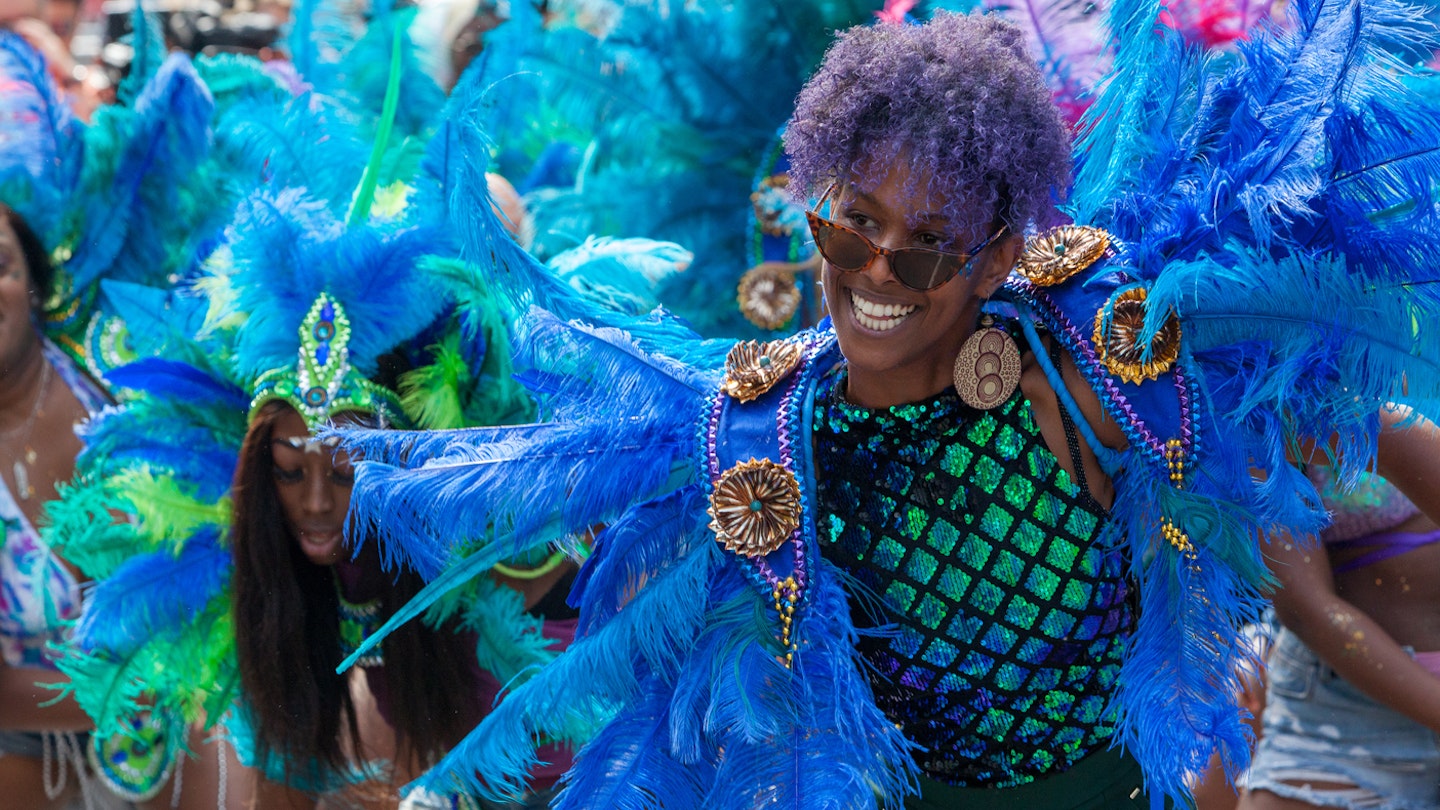
This monthly guide to events in London can help you decide the best time for your visit © Daniel Samray / Shutterstock
You could easily argue that there's no such thing as a bad time to visit England's capital city – world-class events running year-round, incredible galleries and museums, cozy pubs, and beautifully landscaped parks and gardens.
London does not hold back from flaunting its many stunning attractions no matter what the weather is doing....although, spoiler alert, what it's doing often involves gray skies.
For this reason, summer is the season to be in this exciting capital. Festivals flourish across the city, pop-up markets and beaches (yes, pop-up beaches ) appear all over and al fresco eating and drinking are all the rage. Prices might be higher, but the option to entertain outdoors means summer is when London is at its most exciting and glamorous.
As with anywhere, you should time your visit to suit your interests and budget. Our seasonal guide will help you decide the best time for your visit to London.
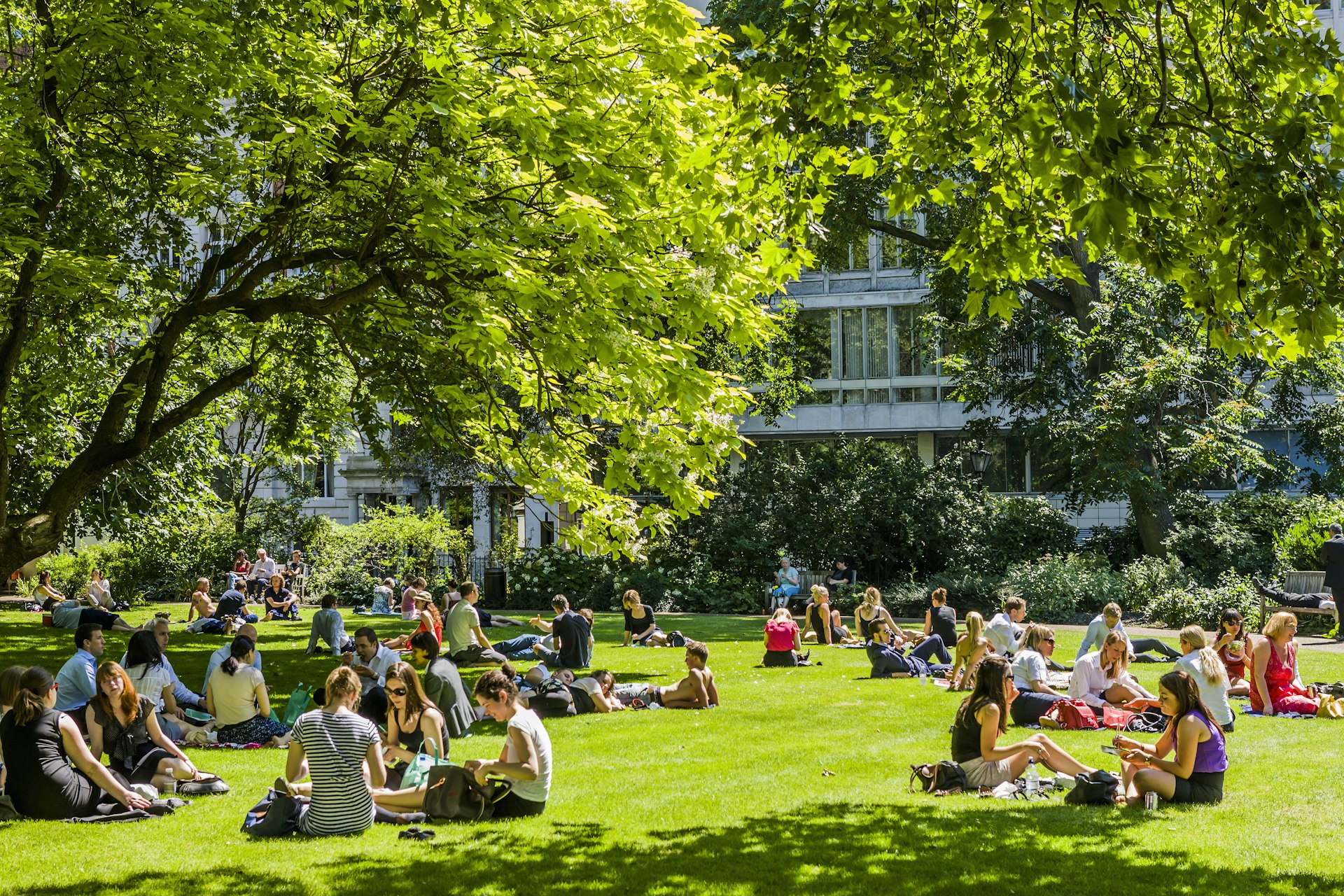
June to August is the best time for festivals and sunny skies
Expect to be cheek by jowl with strangers on the sweaty public transport system and fork out higher prices for accommodations. But this is also the time the city is buzzing with events – from one of the largest street parties in the world to small pop-up book fairs and markets.
London's parks fill up with locals enjoying the summer sun, and beer gardens overflow with the sound of vitamin-D-induced joy and laughter. It's the perfect time to skip the heat and humidity of the tube and explore the city on foot.
June begins with long, warm days (it's light until 10pm) and the arrival of many alfresco events, including a naked bike ride through the city. The South Bank is a lively spot for a wander, with something always happening, whether that's street food markets or live music; it also plays host to the Meltdown festival , which is curated by a different artist every year. Delve into the world of art and design at the Royal Academy Summer Exhibition and the London Festival of Architecture .
July brings high temperatures and sporting prestige as Wimbledon rolls out the green carpet to international tennis stars. Enter the ticket lottery and you could be enjoying strawberries and cream at the final. London's LGBTIQ+ community takes to the streets to celebrate Pride and the whole city becomes a rainbow-filled delight. Keep the party going and dance into the wee hours at Wireless Festival.
August brings festival season throughout the UK but London goes into overdrive with the hugely popular Notting Hill Carnival. This glorious celebration of Caribbean culture takes place on the last weekend of the month, a bank holiday when thousands of people party in the streets around this area of West London.
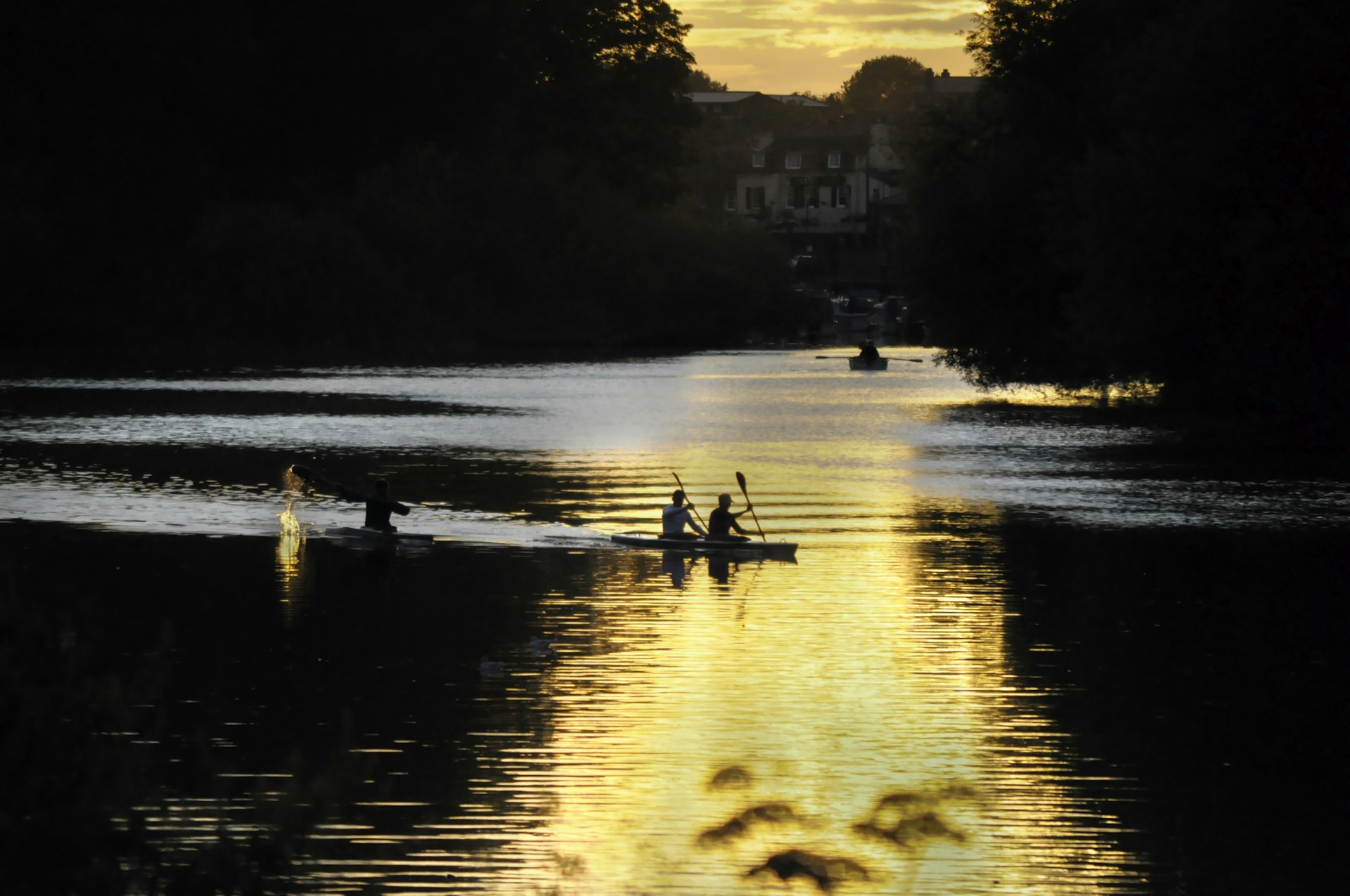
March to May and September to October are the best times for beautiful scenery
Spring can be a delightful time to visit the city, with events starting to pick up and many flowers blooming in the city's parks and gardens . It can also be pretty wet, so bring a waterproof jacket. The Irish community comes together to celebrate culture and country on St Patrick's Day in March with a parade and festival. The clocks go forward in late March and the days get longer. The whole city turns out in April to cheer on the brave souls that take on the London Marathon.
May brings respite for the masses with two bank holidays bookending the month and everyone is in the mood to party. The days are getting warmer and the Underbelly Festival brings cabaret, live music, circus acts and more to the streets of London while beautiful blooms brighten up the capital during the Chelsea Flower Show .
London in the fall can be anything from dreary wet-and-windy days to crisp, bright sunshine glowing off the spectacular autumn scenery across the city's many parks and commons. The city tends to be a little quieter in September as local kids start a new school year. It's the best time for architecture and interior design lovers to head to the city for the Open House Festival , where properties normally shut to the public allow visitors and offer tours.
Temperatures dip in October but parks are splashed with gorgeous fall colors. Clocks go back to wintertime on the last weekend of the month, and school kids celebrate Halloween with ghoulish dress-up and trick-or-treating. Silver-screen glamor rolls into town with the London Film Festival and you can purchase an original work of art as a souvenir of your trip at the Affordable Art Fair in Battersea.

November to February is the best time for visiting museums and galleries
Winter brings cold, wet and gray days that don't seem to last very long at all – the sun makes a fleeting appearance before slipping away mid-afternoon.
The city is far from empty, though, and major sights remain open, making this the perfect time to explore London's incredible museums and galleries, wander the chilly but atmospheric streets, and get your fill of local food and drink in the warm confines of a traditional London pub. Pick a venue and enjoy live music at the London Jazz Festival before taking to the streets to enjoy a spectacular firework display on Guy Fawkes Night .
A festive mood fills the city in December as Christmas markets pop up across London. Ice rinks open up throughout the city, with popular locations at Somerset House , the Natural History Museum , and the South Bank. Christmas Day is quiet, with all shops and museums closed and the public transport network shut down. It all kicks off again on Boxing Day, as keen shoppers hit the sales to nab a bargain for the new year.
New Year celebrations kick off with a big bang at midnight as firework displays light up the sky and people party in the streets. London is in the depths of winter, with short days: light appears at around 8am and is all but gone by 4pm. February is chilly and wet, and it may snow, which tends to bring the city's transport to a grinding halt. Chinese New Year falls somewhere between the end of January and early February, drawing big crowds to London's Chinatown for a huge celebration. Locals lark about with pancakes on Shrove Tuesday.
This article was first published Mar 5, 2021 and updated Mar 11, 2024.
Explore related stories
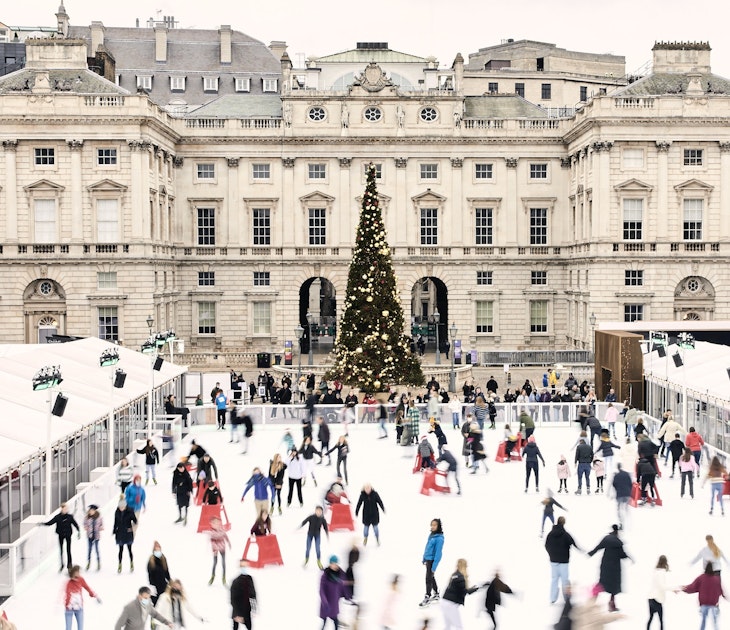
Festivals & Events
Nov 29, 2023 • 6 min read
The lights are twinkling, the mulled wine is flowing and the cultural events never end: you won’t want to miss out on top holiday-season events in London.

Jul 5, 2023 • 5 min read

May 5, 2023 • 6 min read

Jan 2, 2023 • 12 min read
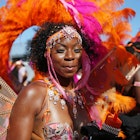
Aug 18, 2022 • 7 min read
Jul 28, 2022 • 7 min read

Apr 25, 2024 • 5 min read

Apr 23, 2024 • 6 min read

Mar 22, 2024 • 9 min read
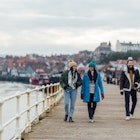

IMAGES
VIDEO
COMMENTS
These are my suggestions for a perfect day at the Tower of London. 1) Choose the day well. 2) Arrive early. 3) Buy a membership. 4) Visit the Crown Jewels first. 5) Visit the White Tower next. 6) Follow a Yeoman tour. 7) Visit the Bloody Tower and learn the story of the two princes. 8) Make a tour of the ramparts.
Hopefully between these options you'll be able to visit the Tower of London during your time in the city. ... as well as a refillable water bottle. We also recommend either an umbrella or lightweight rainproof coat, whatever time of year you visit. There are quite a few outdoor areas, and the weather in London can be unpredictable even in the ...
Bookings are now open for the 2023-2024 academic year. ... What to see on your visit. For your visit to the Tower of London, we recommend at least three hours to discover the iconic castle, including a visit to the Crown Jewels. ... Travel back in time and experience history like never before in this thrilling immersive experience.
Regular tickets. As of this post's last update (Summer of 2023), you'll pay the following to visit the Tower of London: £33.60 for adults. £1 for Tower Hamlet residents (adults and kids) £27.70 for groups of 15 or more. £26.80 for disabled visitors (and free for their carer or companion)
The Tower of London is open seven days a week but admission times change according to the season. During the summer season (March 1 - October 30) the visiting hours are Tuesday to Saturday, 9 am to 5:30 pm; Mondays and Sundays, 10 am to 5:30 pm. Final entry is at 4.30 pm.
You'll find the Tower of London on the edge of the Thames River, near Tower Bridge. The exact address is: Tower of London, London, EC3N 4AB. The Absolute Must-Knows (from a Londoner) Cheapest Way to See it All: Get the London Pass here (yes, it's worth it) Cheapest site for West End theatre tickets: London Theatre Direct.
Cons. You may also need to visit the official Tower of London site for further information. Cost. Standard adult ticket prices also cost from £28.90 when booked via Get Your Guide - but unlike tickets purchased from the official site, these can be cancelled up to a day before if required. How to buy.
7. Don't underestimate the time it will take to visit the Tower of London. This is one of my top Tower of London tips. Don't be tempted to just give the site a cursory tick on your checklist of things to do in London. The Tower of London is a big site with many historical buildings to explore, each with its own stories to tell.
While you can visit the Tower of London throughout the year, September to October is a good time for visiting. The weather is mild and less taxing, and the rush is less. You can explore the Tower of London peacefully without affecting your health. Coming to the best time to visit the Tower of London, try visiting early in the morning on weekdays.
Winter Hours: Opening hours are Tuesday-Saturday 09:00-16:30 and Sunday-Monday 10:00-16:30 from November 1st through February 28th. Last admission is 30 minutes before closing time (16:00). The Tower is closed on December 24-26th and January 1st. Leave yourself about 3-4 hours for a visit.
Here Are Some Planning Tips . Visit the Tower of London site, for the latest info about visiting, and for helpful tips like Top Ten Things to See.; Tickets can be purchased online at the Tower of London site. The Tower of London is stroller-friendly and has baby-changing facilities; The Tower of London is easily reached by the London Underground and is a short walk from the Tower Hill station ...
Best time to visit the Tower of London. Opening times vary somewhat throughout the year, but the best time to visit the Tower of London to avoid crowds is early in the morning, during the week, or during the winter months. The Tower is typically less busy on weekdays and during the off-season. The peak season includes school holidays and the ...
January to March is the quietest time to visit the Tower, as tourist numbers are low, the weather is cold and wet and the evenings are dark. Any school holidays are busy times, and they last for two weeks at Easter and Christmas and for one week three times a year at half term. By far the busiest time is during summer holidays, from the end of ...
Best time to visit London Tower of London. Visit the iconic landmark which played a pivotal role in the history of London. Best time: all year round. See all. Frerk Meyer. The iconic royal fortress-castle that sits on the north bank of the Thames River was constructed back in 1078 by William the Conqueror. Since then, it has served different ...
Tower Hamlets residents visit for just £1. Local residents within the borough of Tower Hamlets can visit the for only £1.00. The offer is valid all year round. Only one ticket per adult can be purchased per day. Adults can purchase additional tickets for up to 3 children for £1.00.
5. Re: Best day/time to visit Tower of London. 6 years ago. I've found that early weekday mornings are less crowded. If you go when the Tower opens, go straight to the Crown Jewels so that you can avoid the long lines. After that, go back to the area where you enter and join one of the Yeoman Warder (Beefeater) tours.
6. The Bloody Tower. Garden Tower | Prison | Sir Walter Raleigh. Previously known as the Garden Tower due to its location, this building's main purpose was to act as a prison. The Princes in the Tower were kept here, alongside many other famous and infamous enemies of the state.
The Best Times to Visit London, According to Local Experts ... Each year, the English capital welcomes upwards of 30 million tourists. ... "Contrary to popular belief, summer is the worst time ...
March. Spring is one of the best times to visit, as London is such a green city and is filled with parks, trees, and flowers. Events to check out: St. Patrick's Day is honored in Trafalgar Square with the London St. Patrick's Day Festival, which usually takes place on the weekend closest to St. Patrick's Day (March 17).
The best time to visit the Tower of London is in the early morning, just after it opens, to avoid long lines and crowds. Summer and bank holidays will be busy, but you can still beat the crowds by visiting first thing in the morning on a weekday.
Best Time to Visit Tower of London. The Tower of London is a historic landmark with a diverse array of experiences.. These experiences cater to different hours of the day, each requiring separate Tower of London tickets.. It's extremely popular at any time of year - although some times are busier than others to visit the Tower of London.
As a result, he was eager to ensure the Tower of London was a formidable fortification; at the same time Henry was an aesthete and wished to make the castle a comfortable place to live. From 1216 to 1227 nearly £10,000 was spent on the Tower of London; in this period, only the work at Windsor Castle cost more (£15,000).
March to May and September to October are the best times for beautiful scenery. Spring can be a delightful time to visit the city, with events starting to pick up and many flowers blooming in the city's parks and gardens. It can also be pretty wet, so bring a waterproof jacket. The Irish community comes together to celebrate culture and country ...
You'll experience London weather at its finest between May and August, seeing daily temperatures that average from 50°F to 64°F in May and warm to 59°F to 73°F by August and longer days with 14.5 to 16.6 hours of sunshine each day. The weather is mostly sunny with minimal rain during this period.